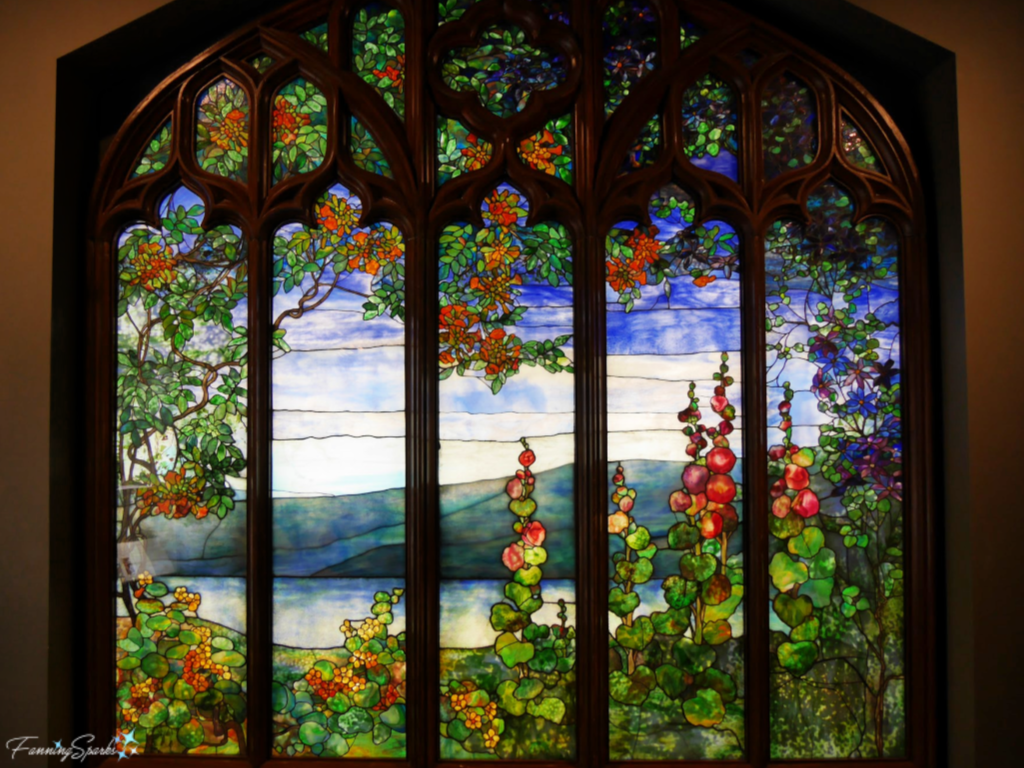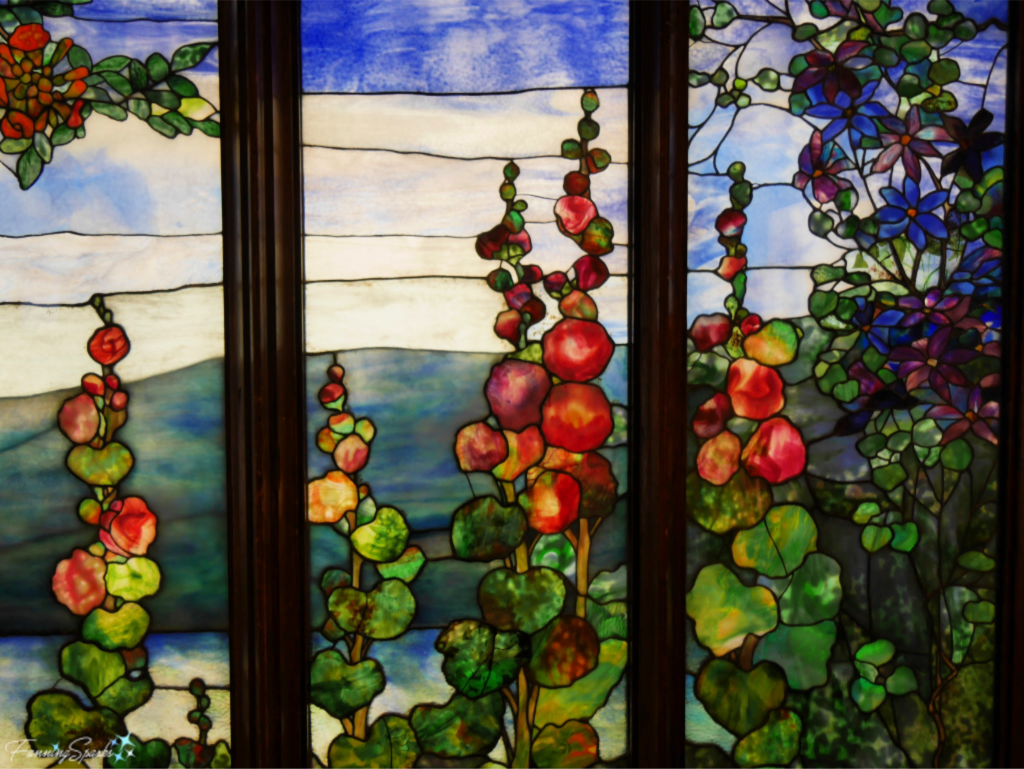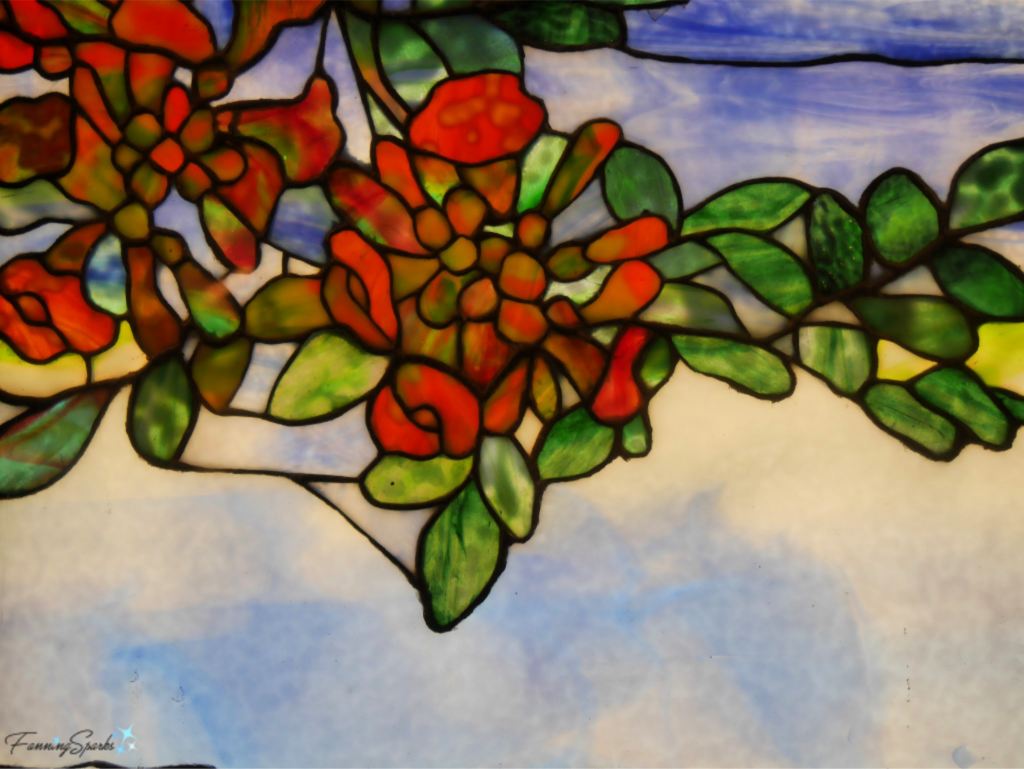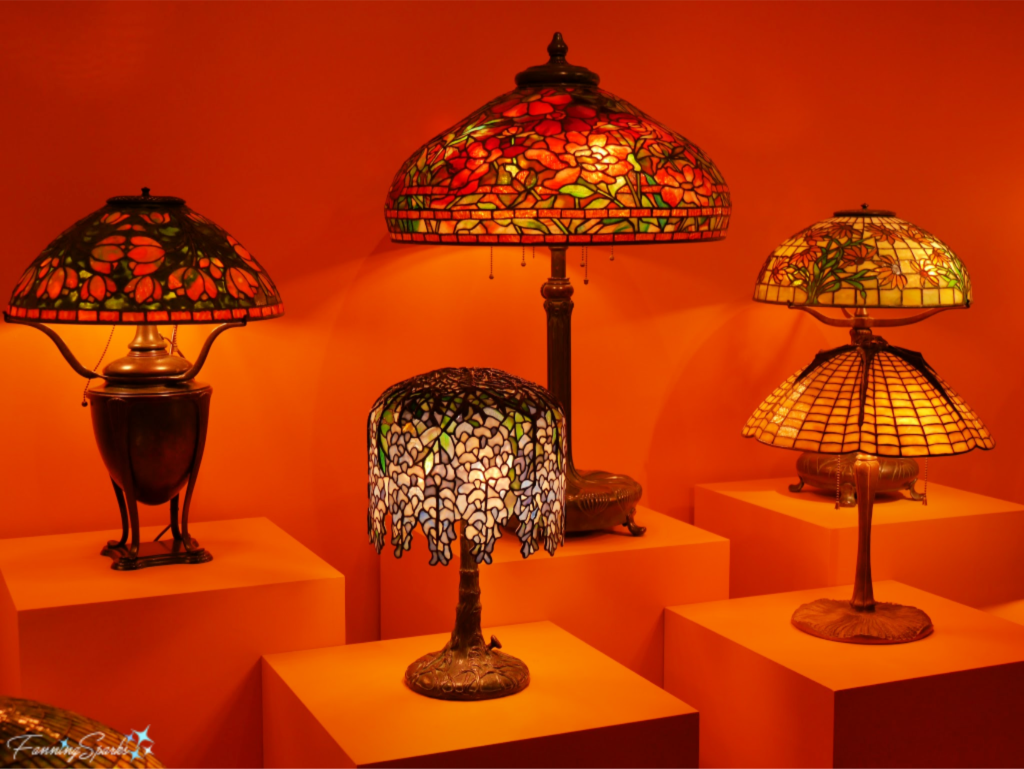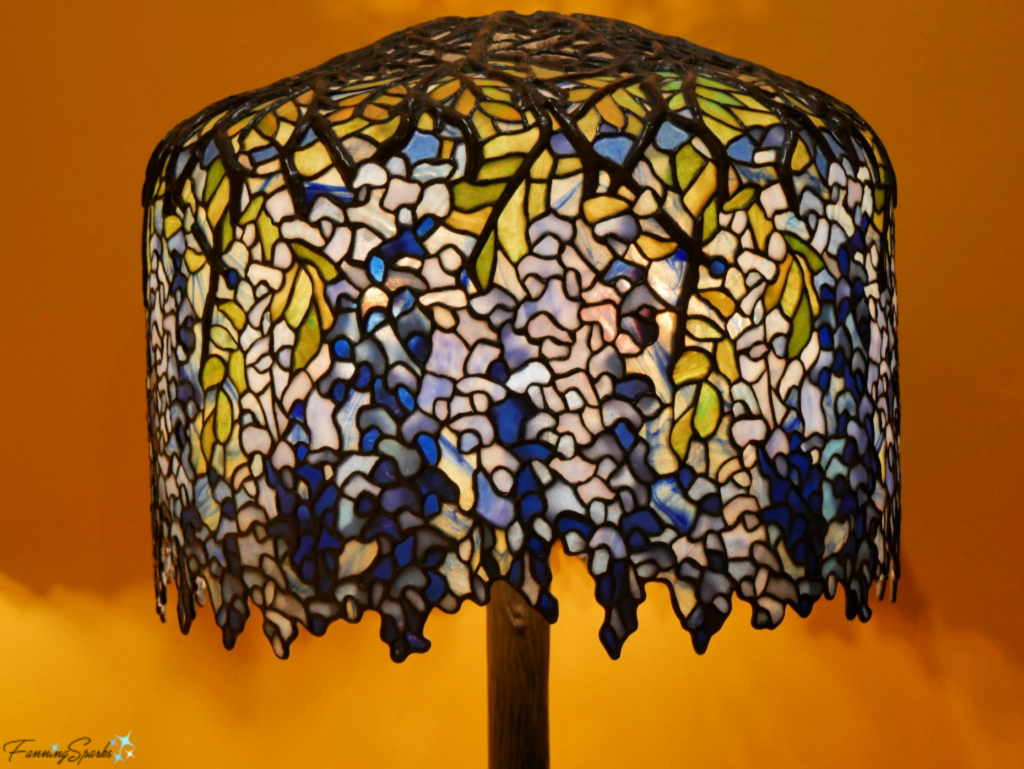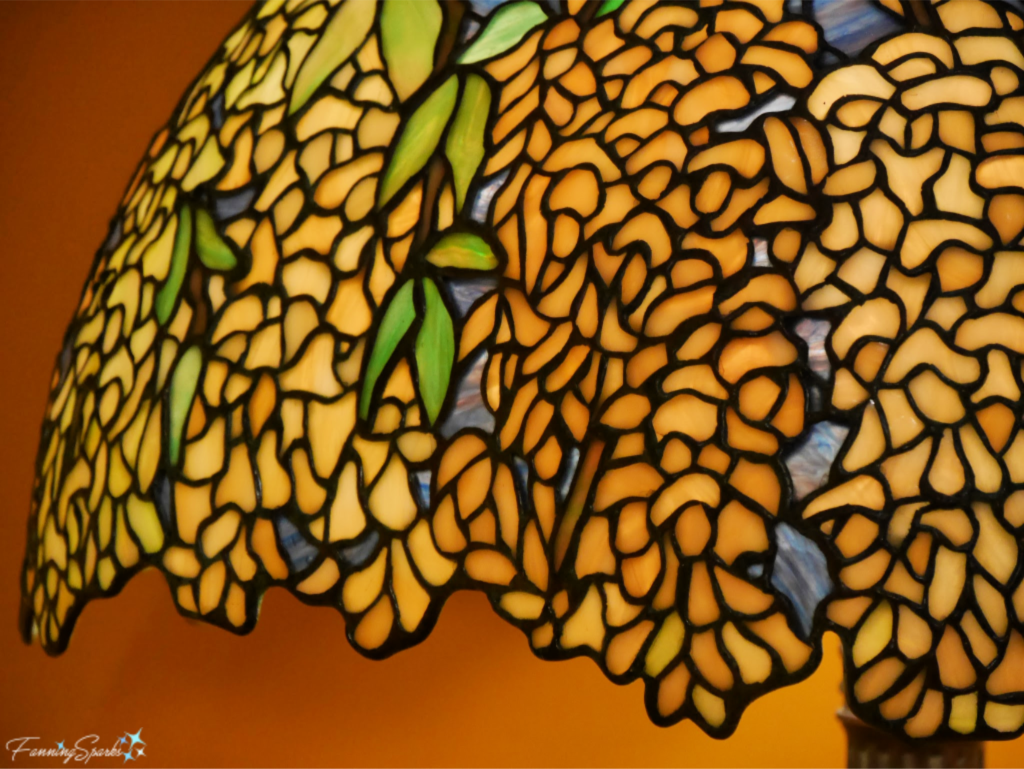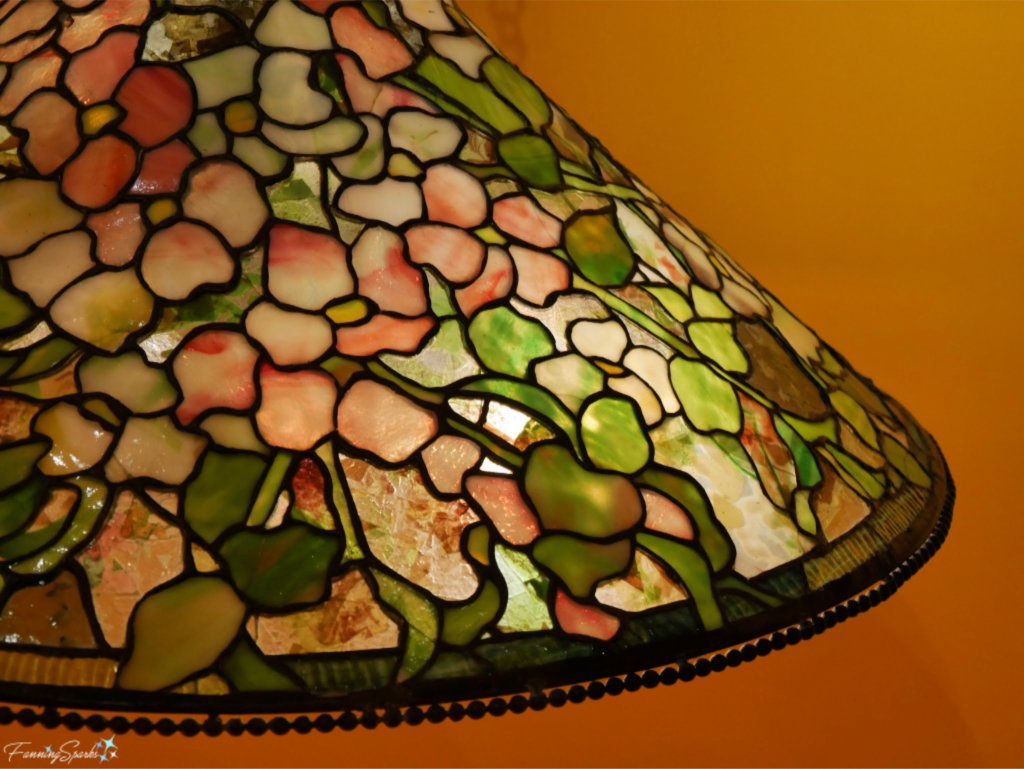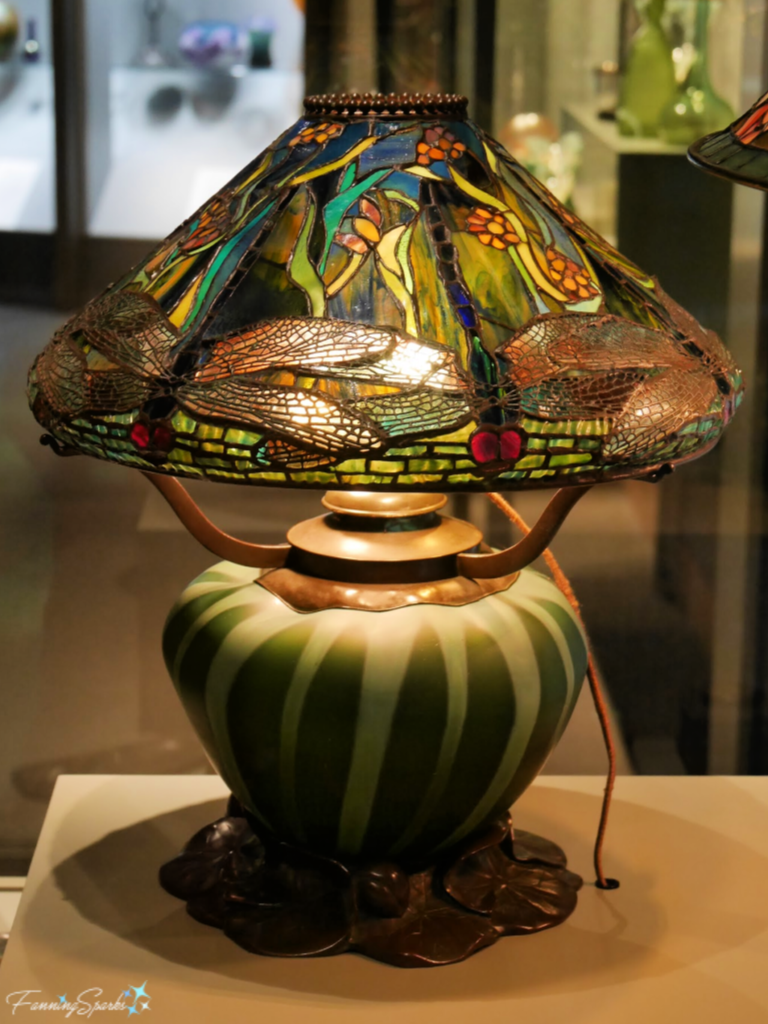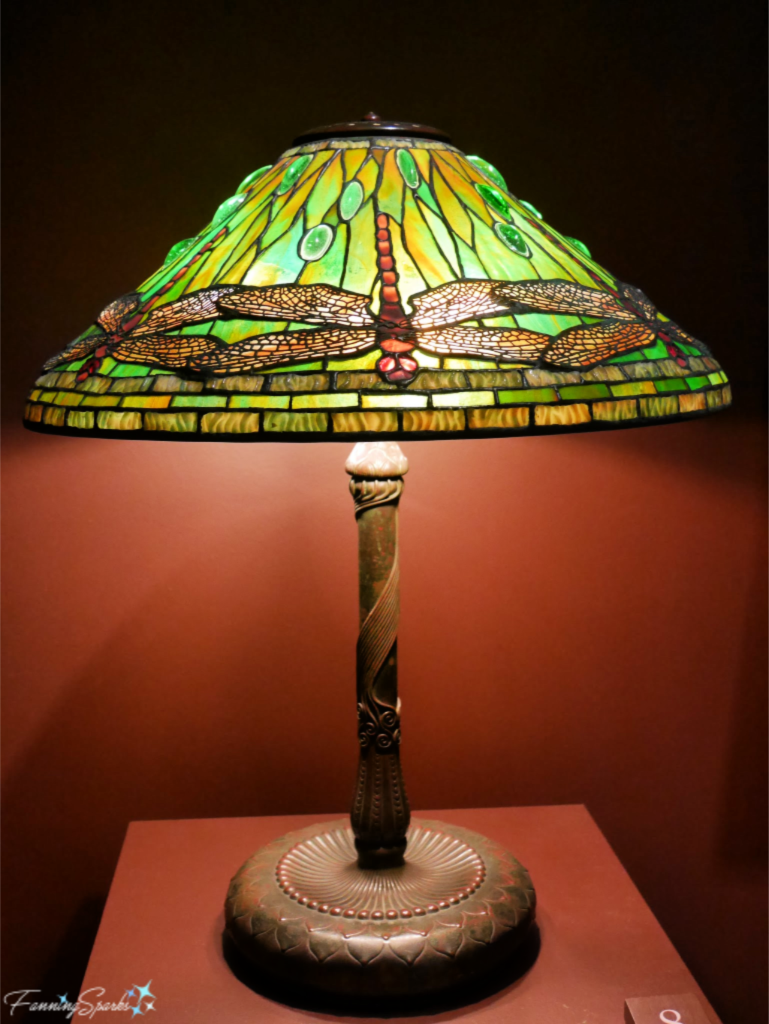A mosaic is an assemblage of small pieces of colored glass, stone, or other materials. The mosaic mirror frames I made for my own master bathroom, for instance, were an assembly of glass with rectangular tiles set into a grid-patterned border and an irregular accent of circles and triangles. See my post Pair of Mosaic Mirrors Completed.
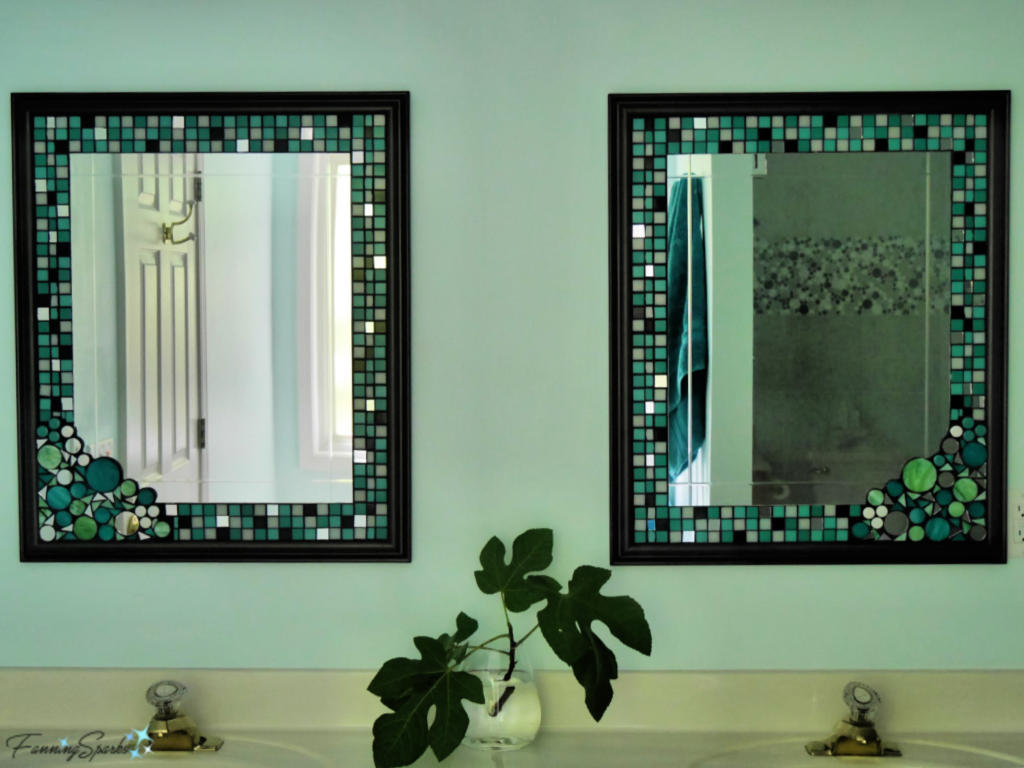
Ancient mosaics were typically made of uniform, cube-shaped stone including marble, slate and other natural materials. Here’s one example from the ancient ruins of Ephesus in present-day Turkey. I shared several other examples in the post, Learning from the Ancient Masters.
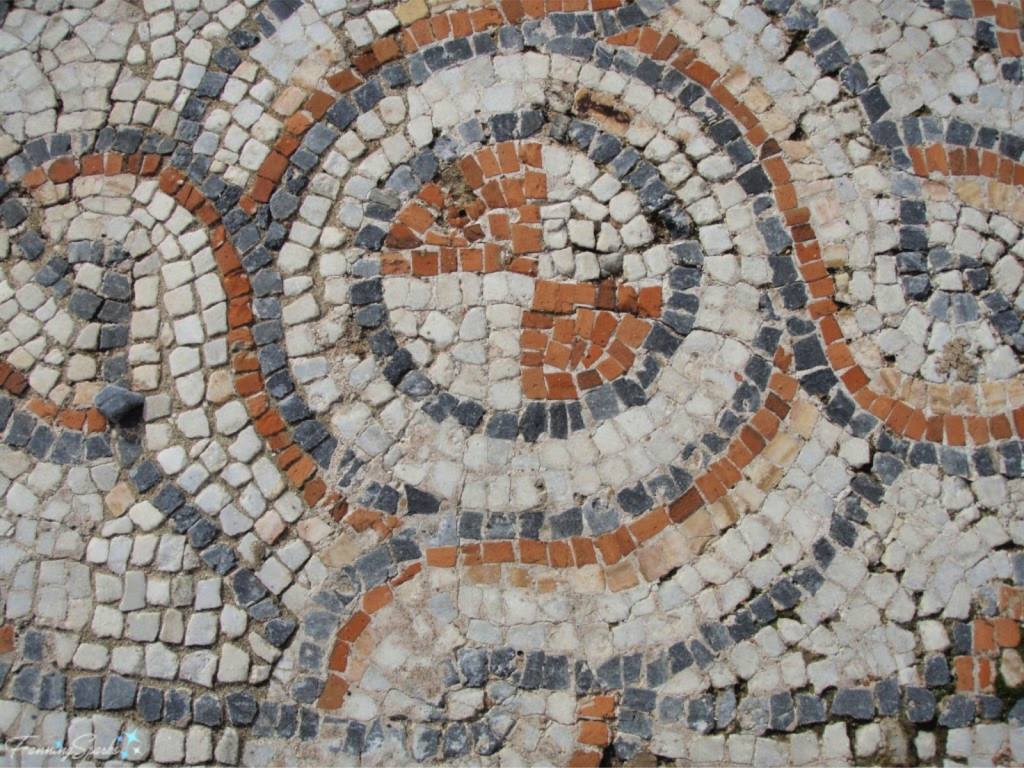
In today’s post, we’ll look at another material used to make mosaics‒broken china and tiles. This style of mosaic goes by a number of different names including “trencadis”, “pique assiette” and “crazy paving”. The most well-known person to have advocated for this decorative technique was Catalan architect Antoni Gaudí. Gaudí, who belonged to the Modernisme movement (ie the Art Nouveau movement in Catalonia), was famous for his architectural genius and unique style. Seven of his sites in/near Barcelona Spain are designated a UNESCO World Heritage Site. I’ve had the pleasure of seeing several of his works and they are stunning! As is typical of proponents of the Art Nouveau movement, Gaudí took a holistic view of his creations and designed for all aspects of his one-of-a-kind style. According to Wikipedia, “Gaudí was also an innovator in the realm of craftsmanship, conceiving new technical and decorative solutions with his materials, for example his way of designing ceramic mosaics made of waste pieces (“trencadís”) in original and imaginative combinations.” Several outstanding examples of trencadis, such as the below bench back, can be seen at Park Güell in Barcelona.
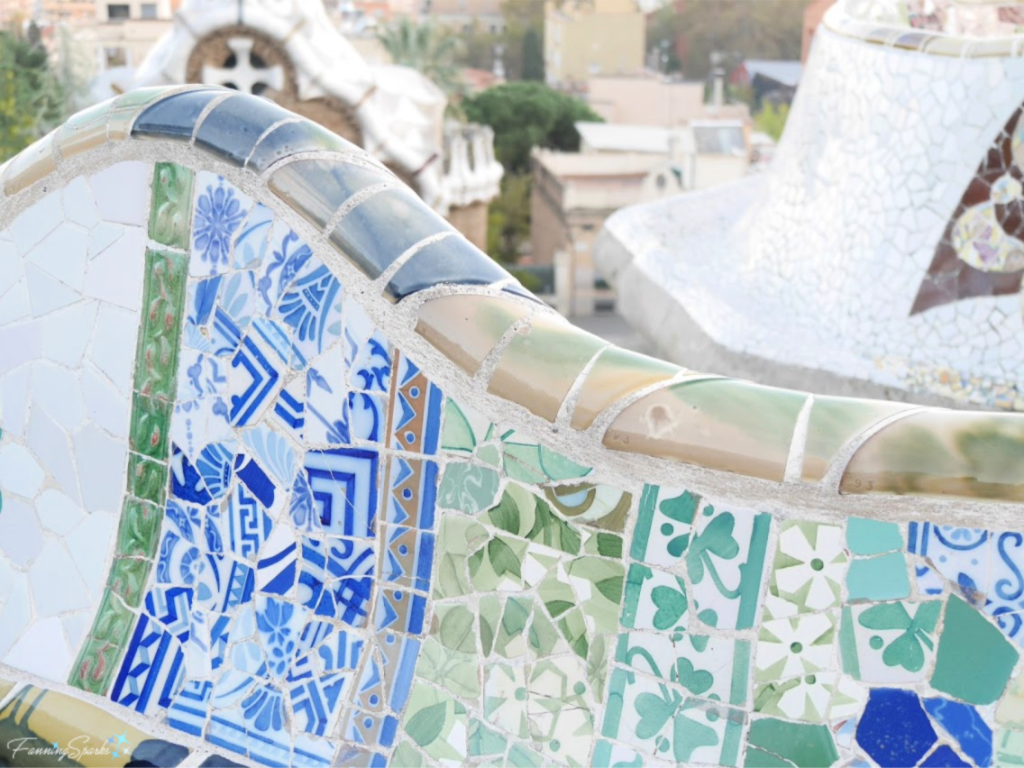
Around 1900, Gaudí and his collaborator Josep Maria Jujol worked on this park for the Güell family. As author and master mosaicist Sonia King put it in her book Mosaic Techniques & Traditions, “Parc Güell is a mosaicist’s dream-a fantasy environment of broken tile and glass. It is a prime example of integrating three-dimensional surfaces with mosaic decoration. Gaudí’s structures became huge mosaic-clad sculptures.” As you enter the main entrance to Park Güell, you are greeted by the Casa del Guarda (Caretaker’s House). The whimsical shapes of these structures are artfully covered in trencadis.
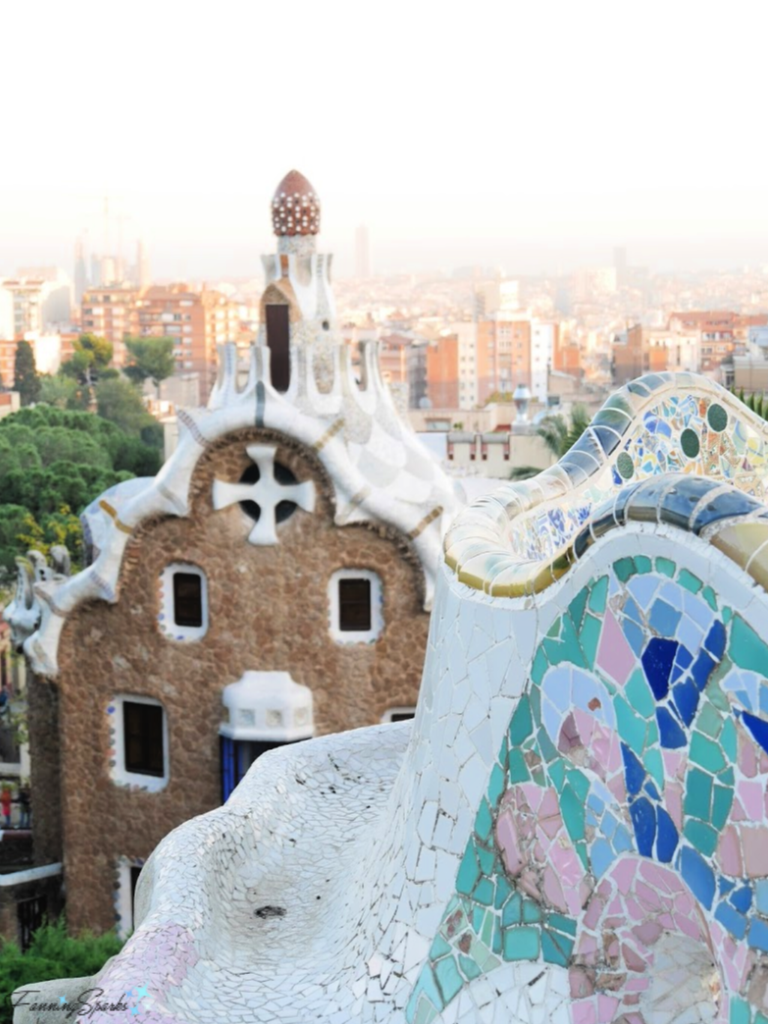
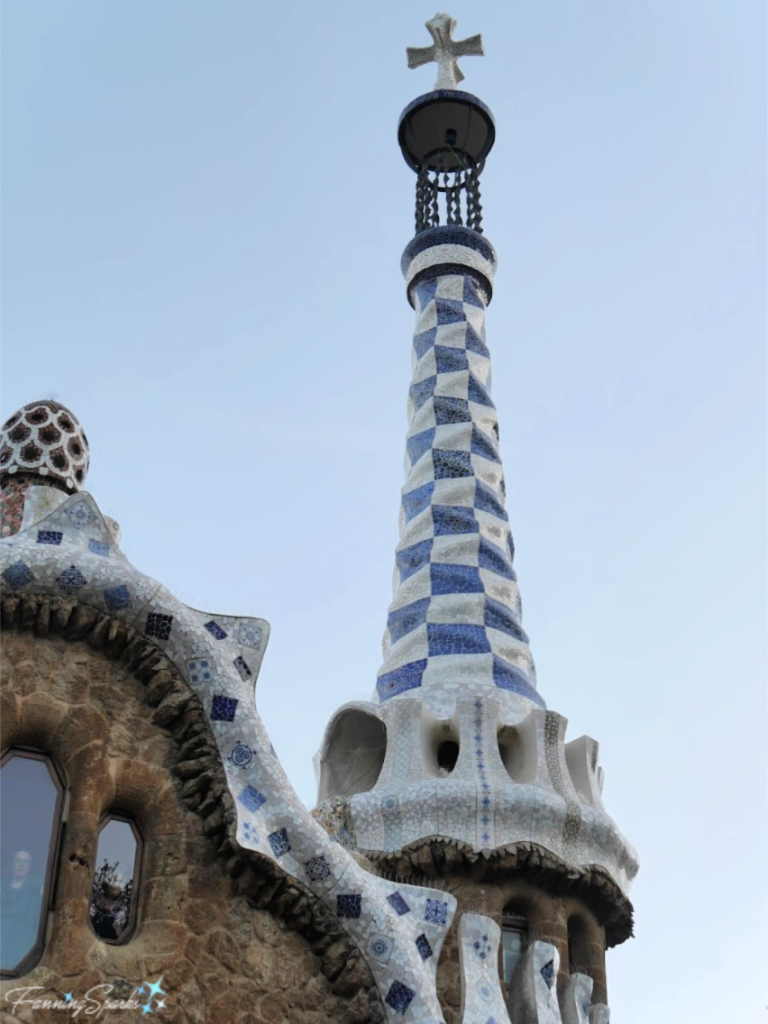 Here’s a closer look at the broken china trim framing a window.
Here’s a closer look at the broken china trim framing a window.
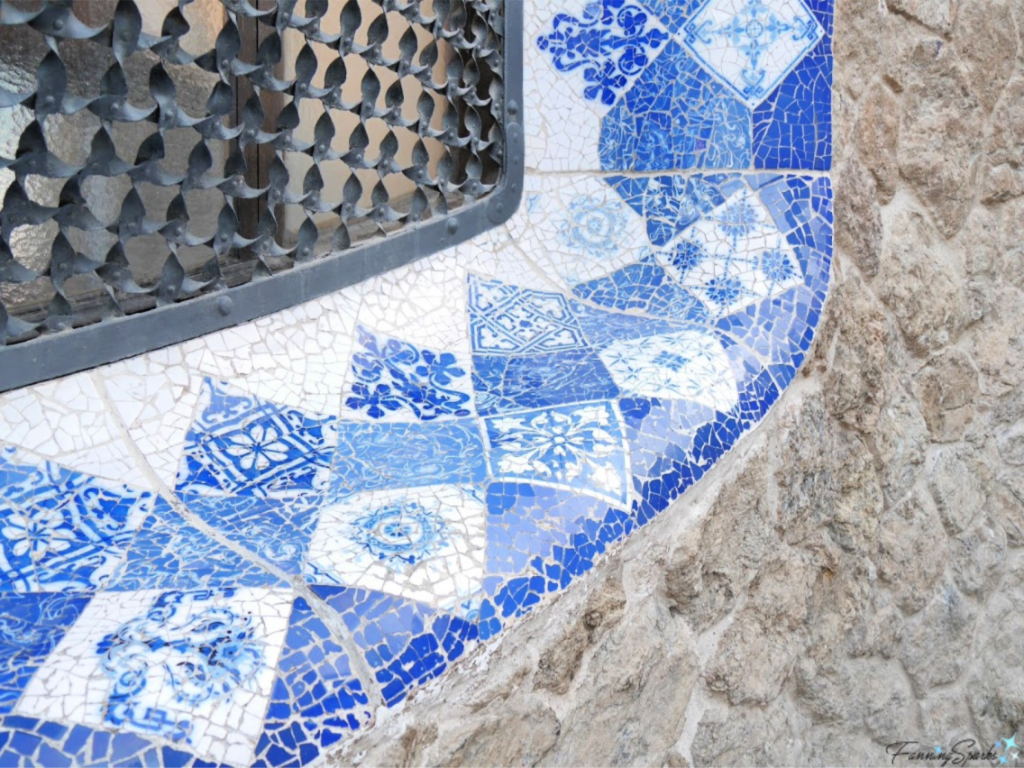 Directly in front of the main entrance is the main stairway which is often called the Dragon Stairway. The below dragon, or salamander, fountain is covered with a decorative tile-shard mosaic. It’s a crowd favorite and visitors line up to have their photos taken with Gaudí’s dragon.
Directly in front of the main entrance is the main stairway which is often called the Dragon Stairway. The below dragon, or salamander, fountain is covered with a decorative tile-shard mosaic. It’s a crowd favorite and visitors line up to have their photos taken with Gaudí’s dragon.
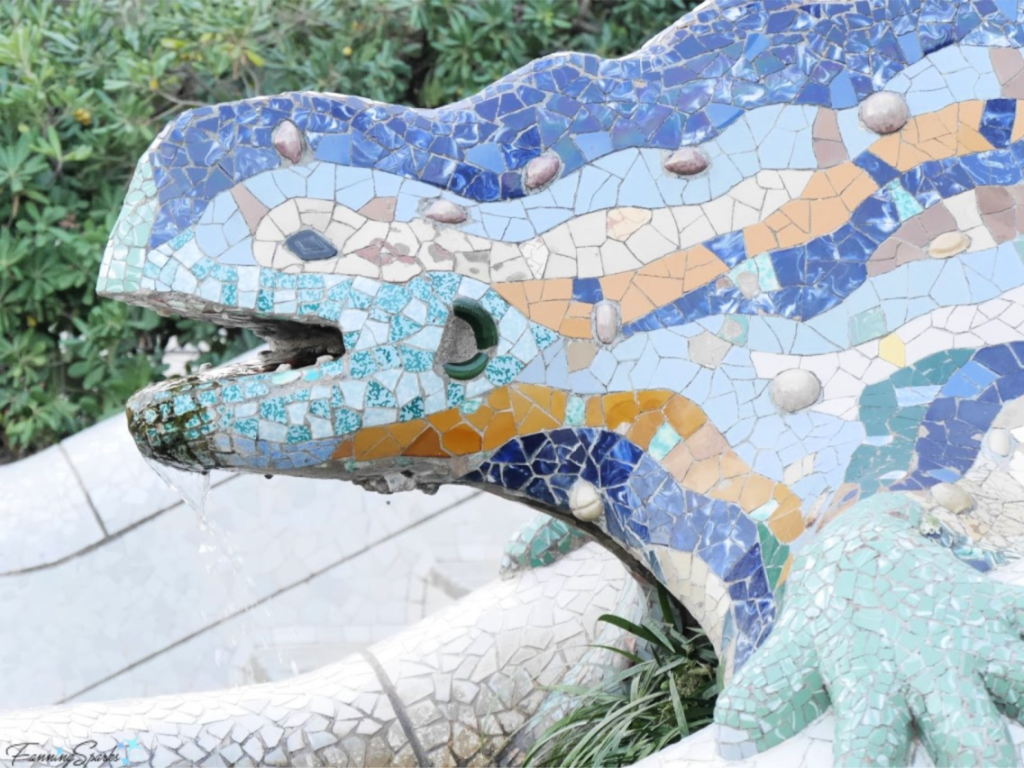
Broken china and ceramic tiles seem to be on every surface around the main entrance and central stairway. Here are a few examples of decorative panels from the garden walls.
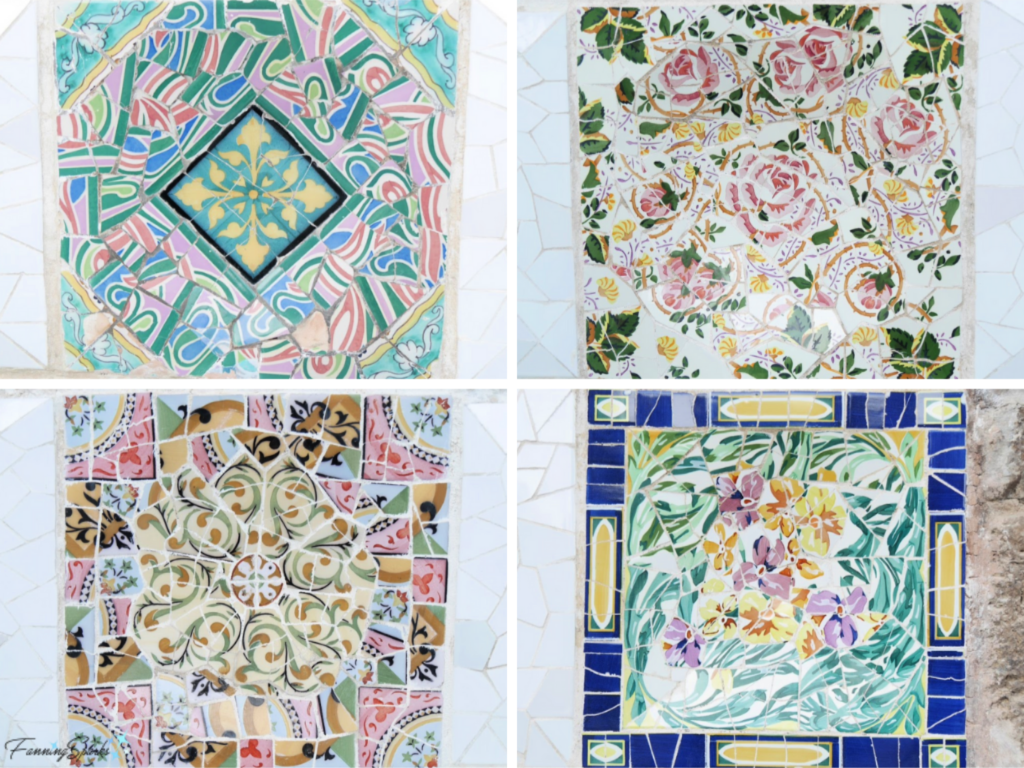 At the top of the Dragon Stairway, you enter the Hypostyle Room which was originally planned as a market place. It is a covered area made up of 86 striated columns. The ceiling is formed of small domes covered with trencadis.
At the top of the Dragon Stairway, you enter the Hypostyle Room which was originally planned as a market place. It is a covered area made up of 86 striated columns. The ceiling is formed of small domes covered with trencadis.

Here’s a closer look at one of the ceiling medallions.
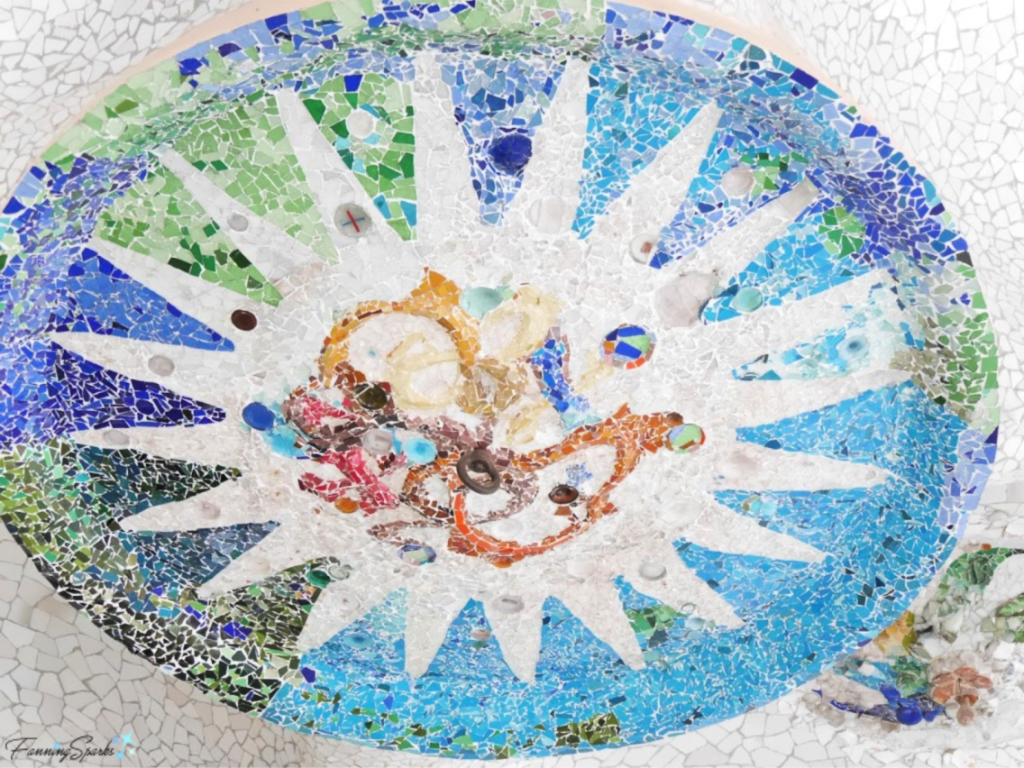
Above the Hypostyle Room and at the center of Park Güell is a large esplanade known as Plaça de la Natura (Nature Square). A undulating bench covered in trencadis runs along several sides of the esplanade and acts as a balustrade. In addition to being beautiful, these serpentine benches are surprisingly comfortable. Note the white mosaic seat with the fantastic, colorful trencadis along the back.
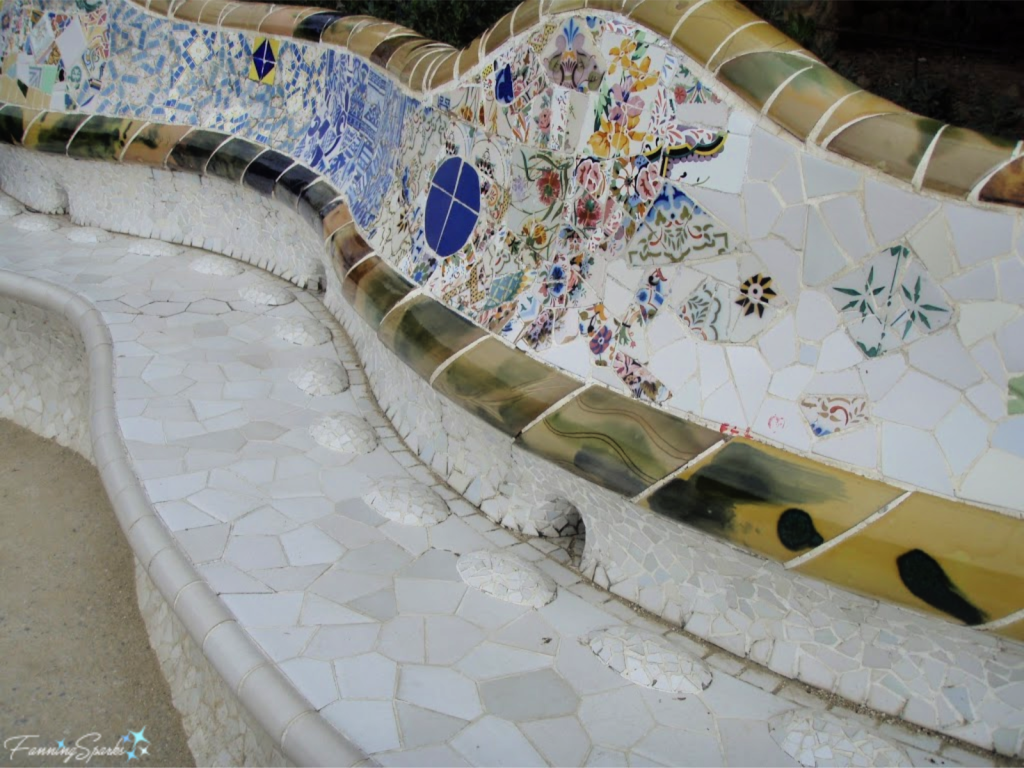
Here’s a view of the back side.
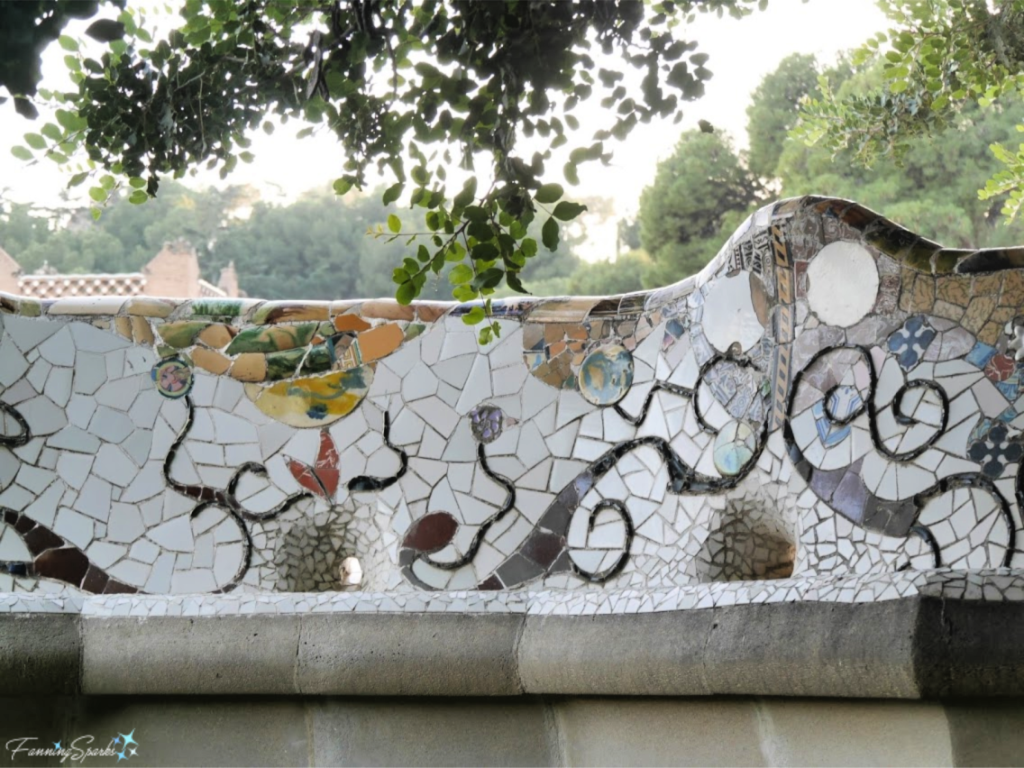
Park Güell isn’t the only location where Gaudí showcased trencadis. It is also used extensively at his residential masterpiece, Casa Batlló, especially on the unusual rooftop structures. The arched roofline is said to recall the spine of a dragon with the ceramic tiles being the dragon’s scales.
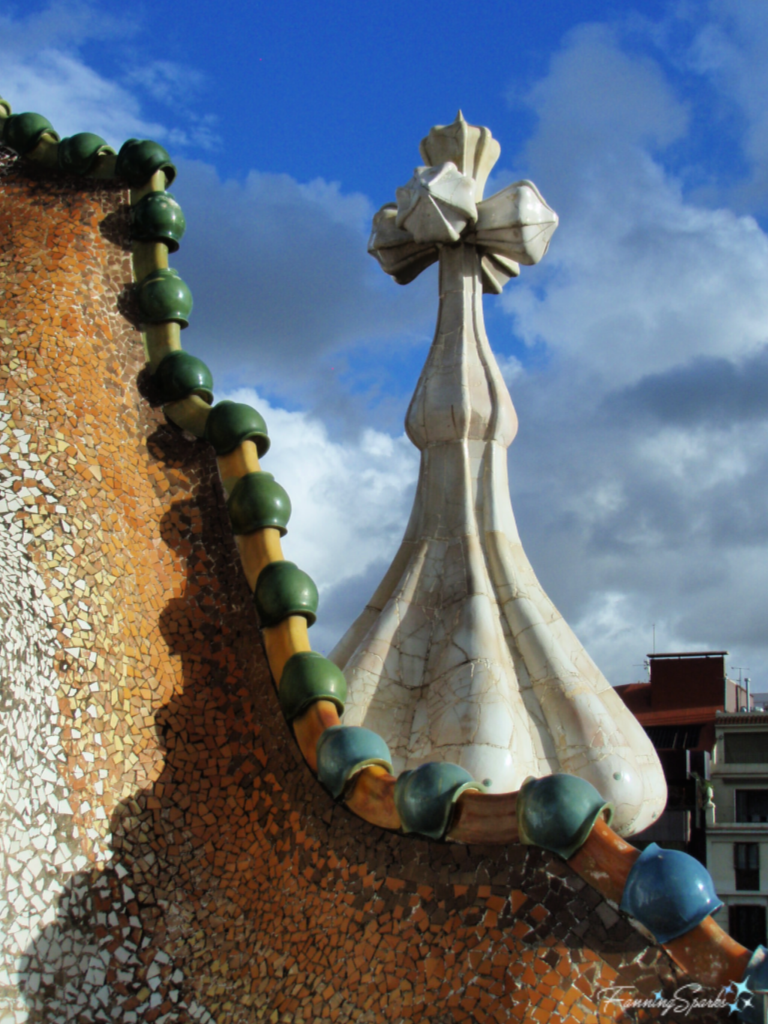
This unique grouping of chimneys, also at Casa Batlló, is artfully covered in trencadis.
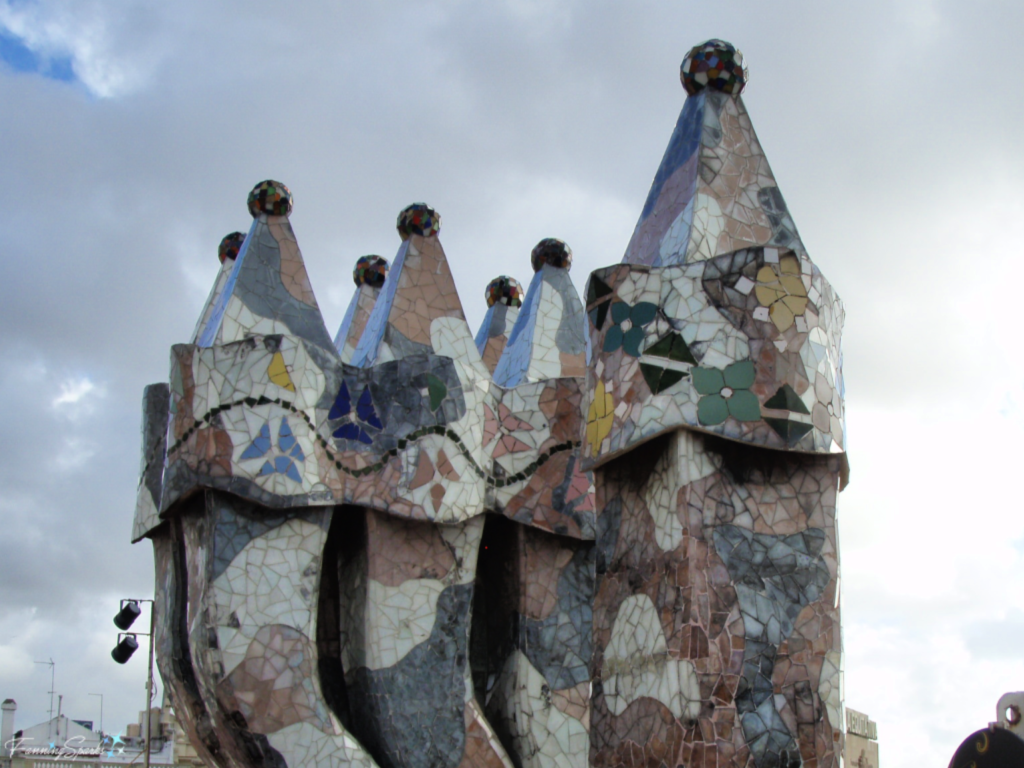
Similar marvels are revealed on the spectacular terrace on the roof at Casa Milà (popularly known as “La Pedrera” meaning the stone quarry) which is another one of Gaudí’s residential masterpieces.
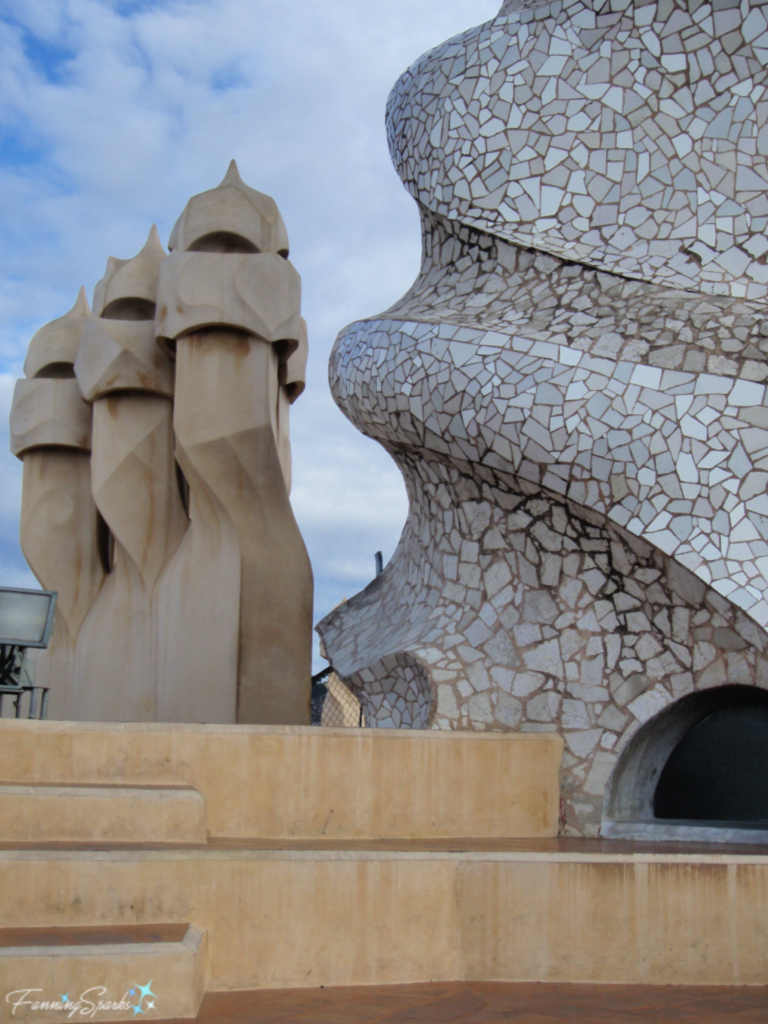
In the below photo, the rooftop arch frames the Sagrada Família in the distance. The enormous Roman Catholic basilica was designed by Gaudi around 1882 and has been under construction ever since. It is considered his most controversial creation.
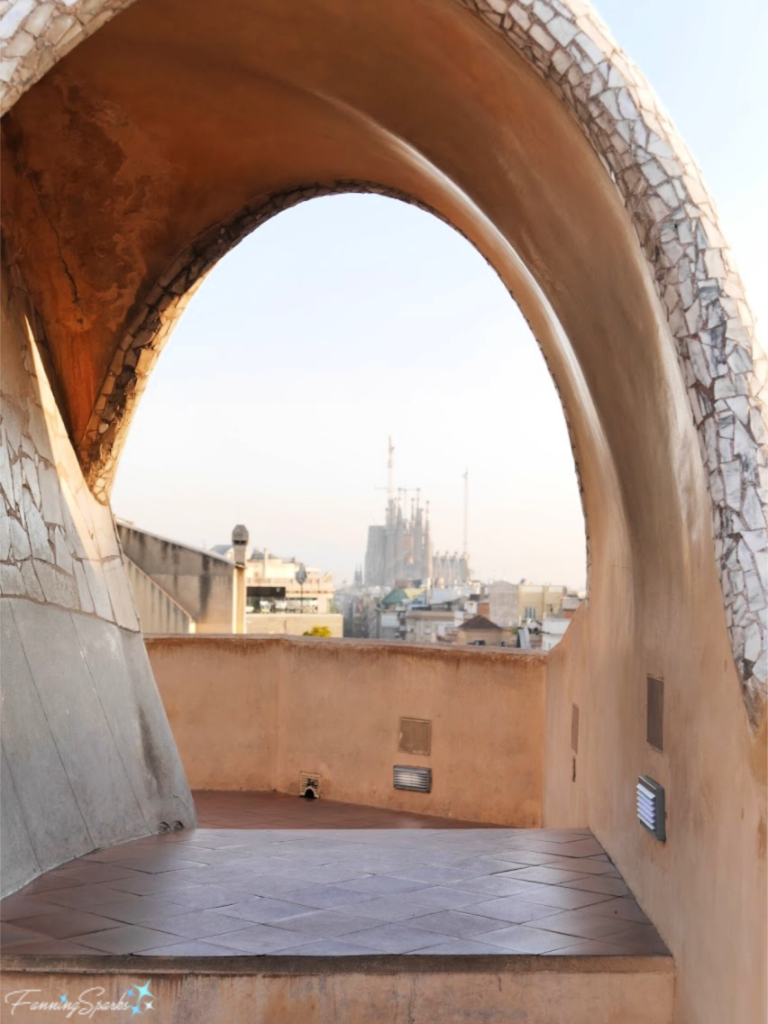
I didn’t notice a great deal of trencadis in the Sagrada Família but these towers had recently been topped with clusters of trencadis fruit.
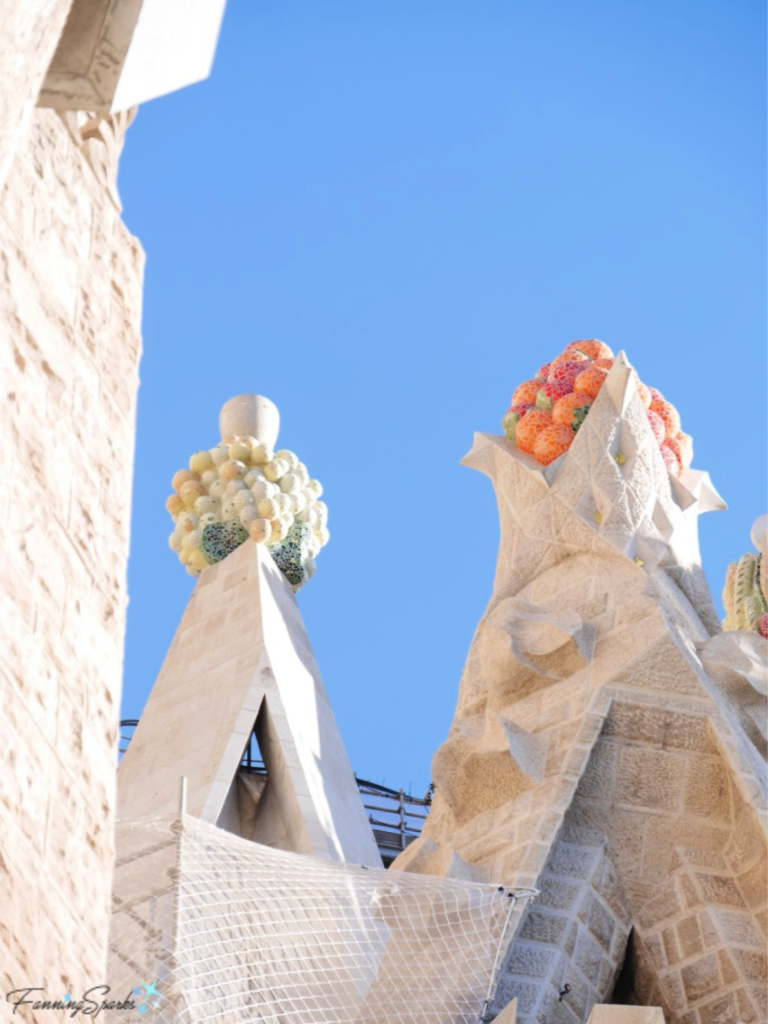 Gaudí was not the only proponent of trencadis. The Palau de la Música (Music Palace) in Barcelona, designed by architect Lluís Domènech i Montaner, is a splendid structure which showcases a number of outstanding artworks including these trencadis-clad pillars. I could go on and on but that will have to wait for another post.
Gaudí was not the only proponent of trencadis. The Palau de la Música (Music Palace) in Barcelona, designed by architect Lluís Domènech i Montaner, is a splendid structure which showcases a number of outstanding artworks including these trencadis-clad pillars. I could go on and on but that will have to wait for another post.
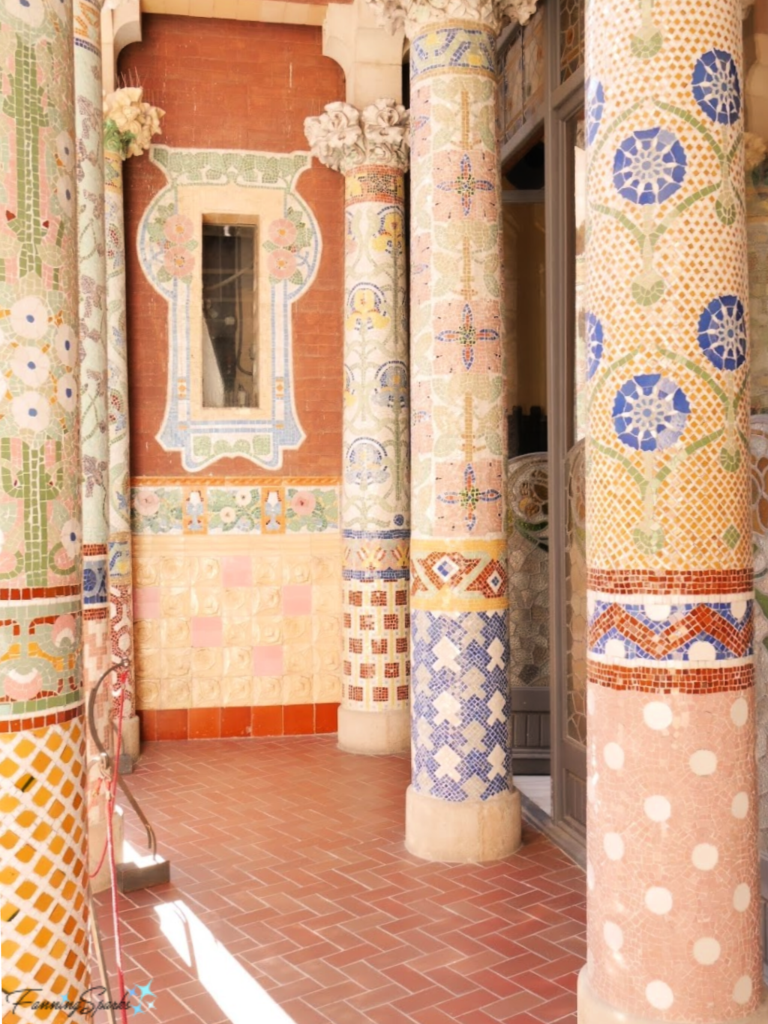
More Info
To learn more about mosaics, check out my posts Pair of Mosaic Mirrors Completed and Learning from the Ancient Masters.
You can learn more about Barcelona’s Park Güell on their website.
Excellent websites are available for Gaudí’s masterpieces at Casa Batlló, Casa Milà, and Sagrada Família.
Check out the Palau de la Música website for more information about this spectacular structure.
Sonia King’s book, Mosaic Tradition and Technique, is a great reference.
To learn more about the Modernisme movement as part of the Art Nouveau period, check out my post My Art Nouveau Love Affair.
Today’s Takeaways
1. Small pieces of various materials, including glass, mirror, stone, pebbles, and broken tile and china, can be assembled into a mosaic.
2. Mosaics can be made in different styles including the irregularity of trencadis.
3. If you have a chance to visit Barcelona Spain, be sure to take in the trencadis from the Modernisme movement.


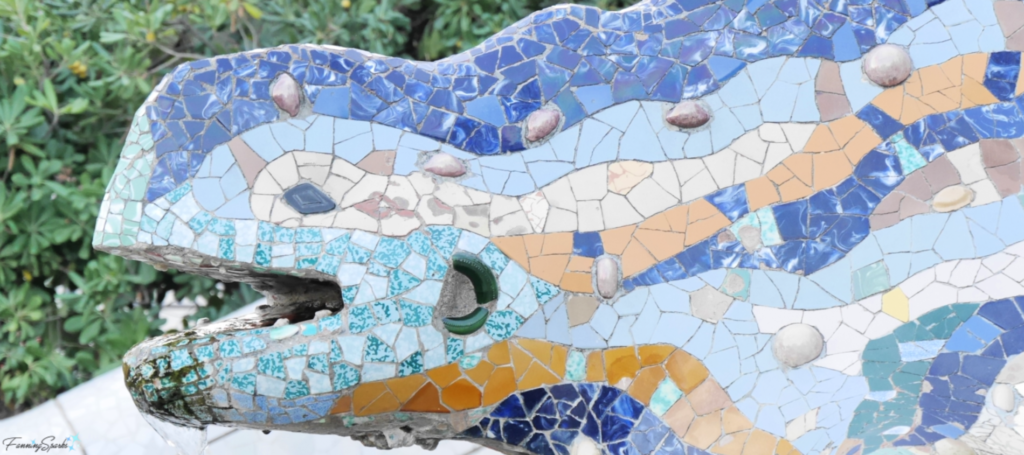
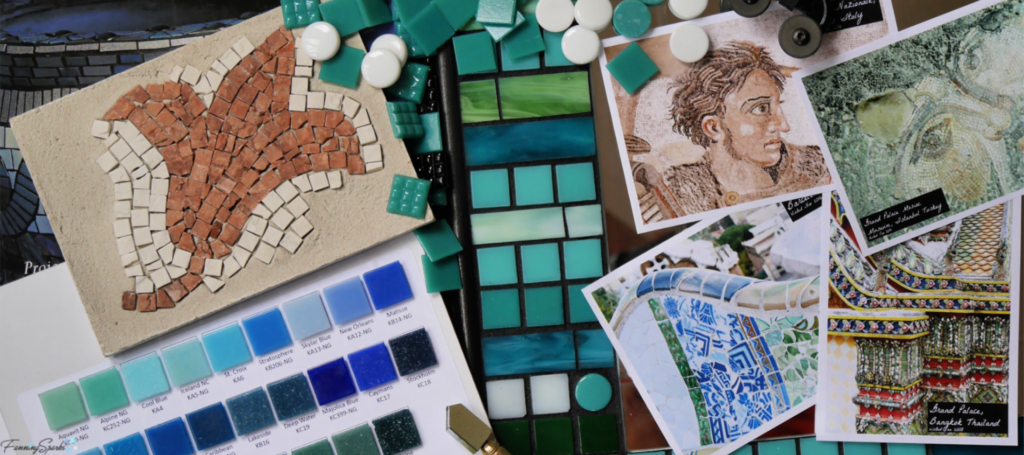
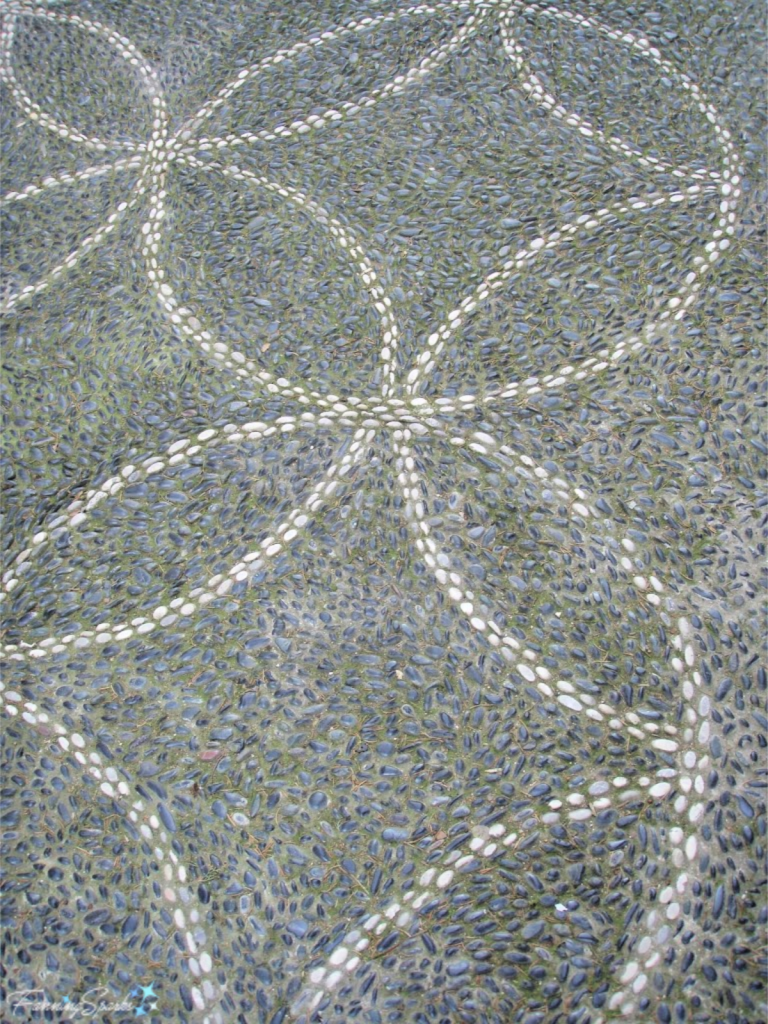
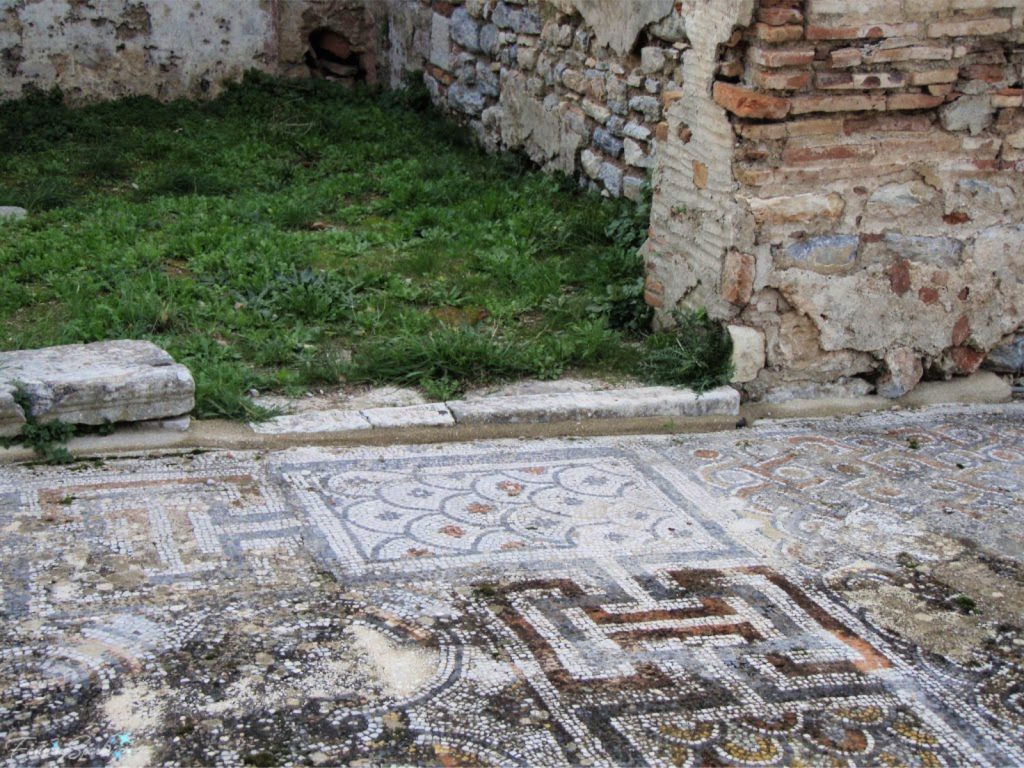
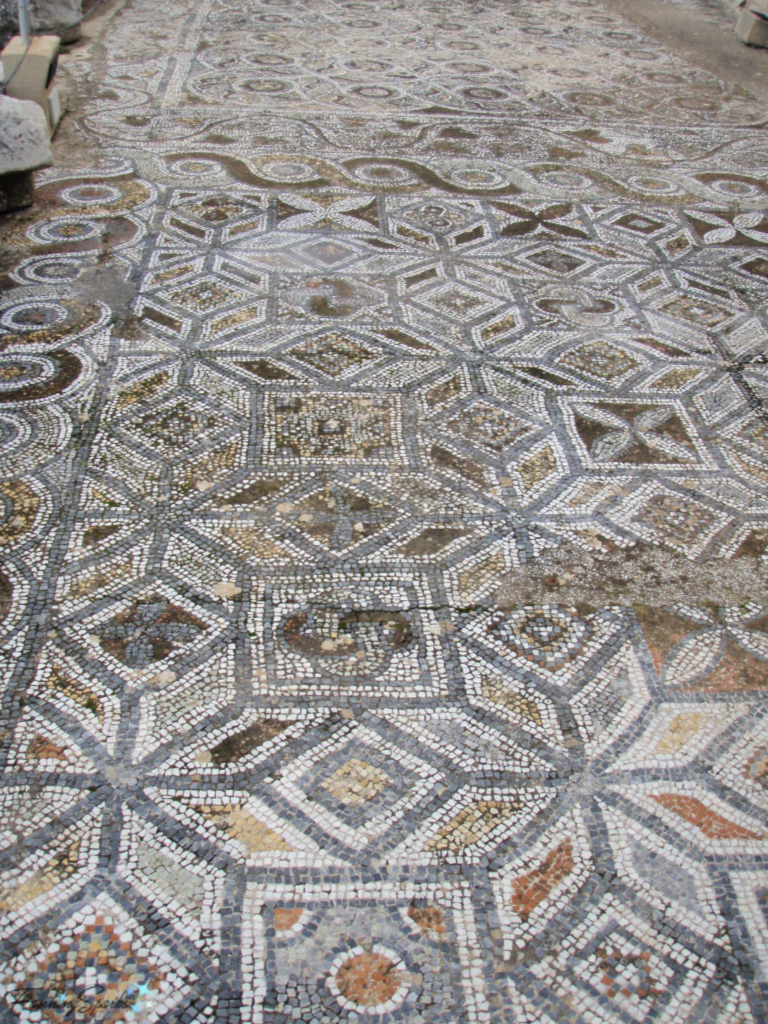
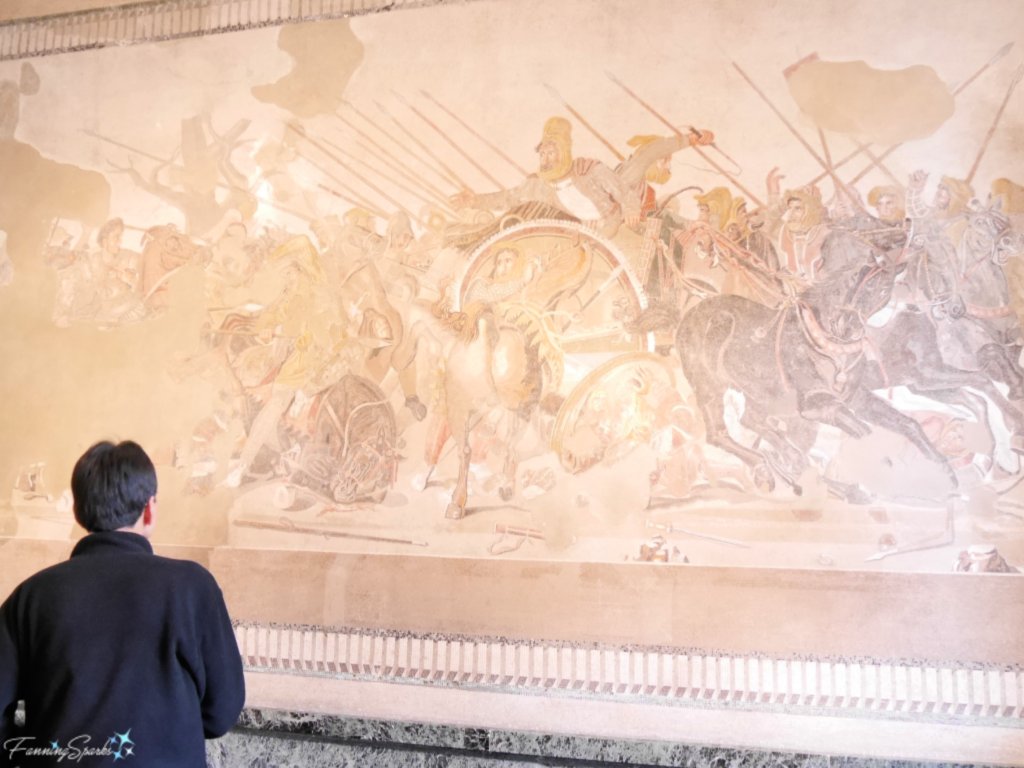
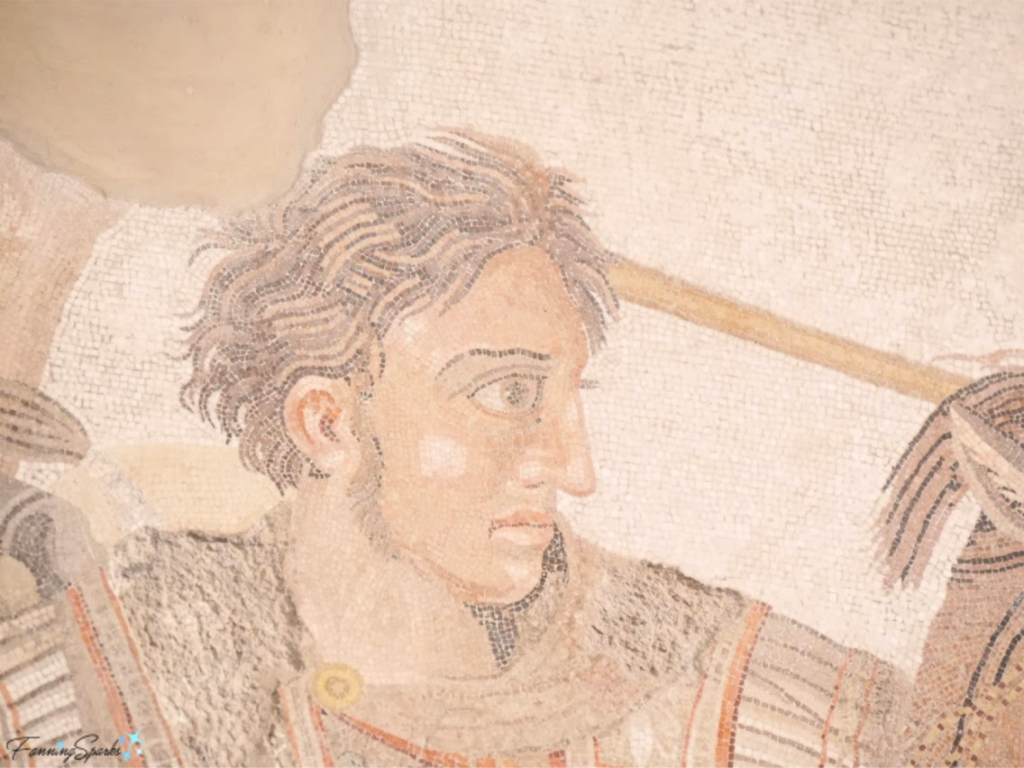
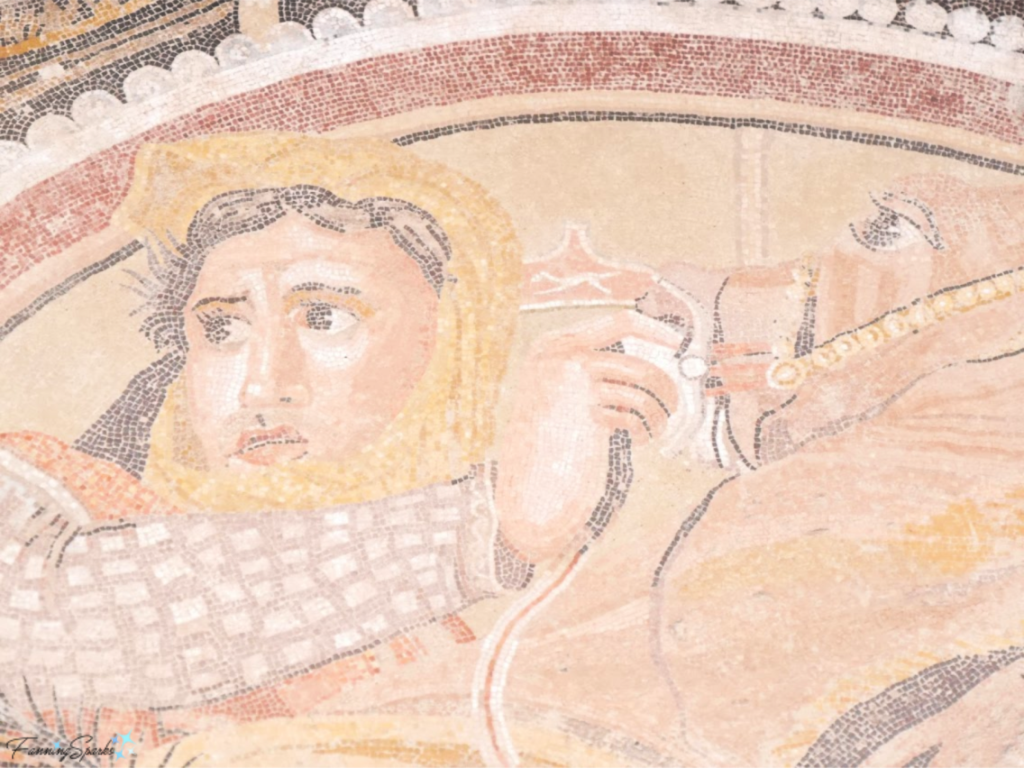
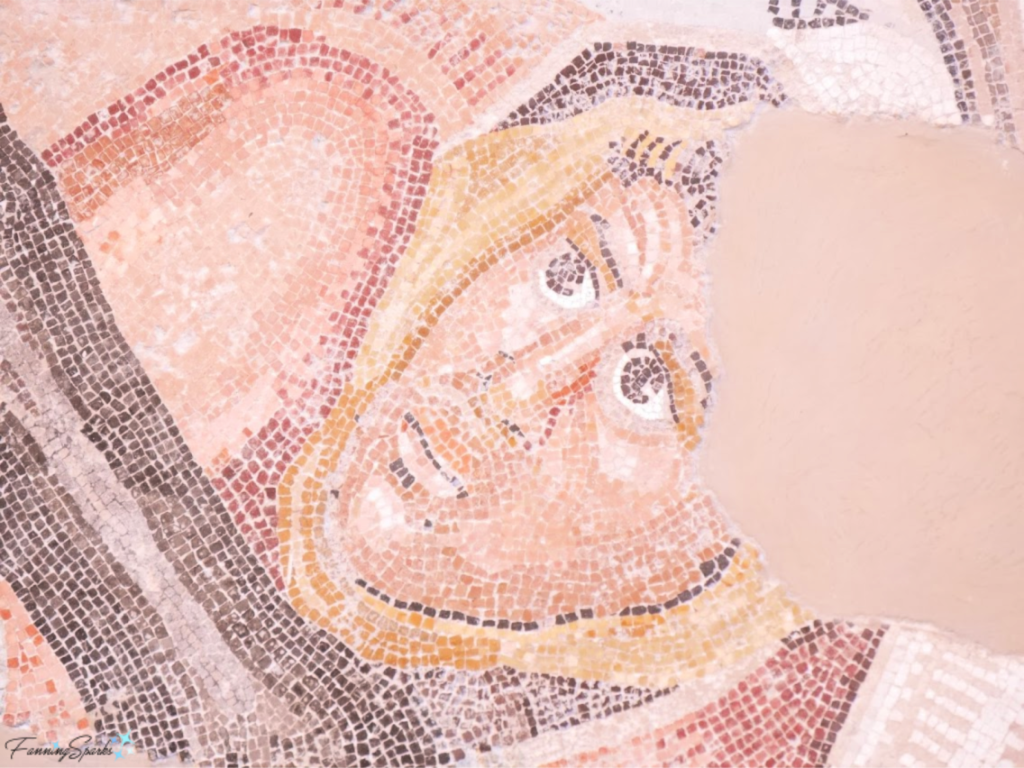
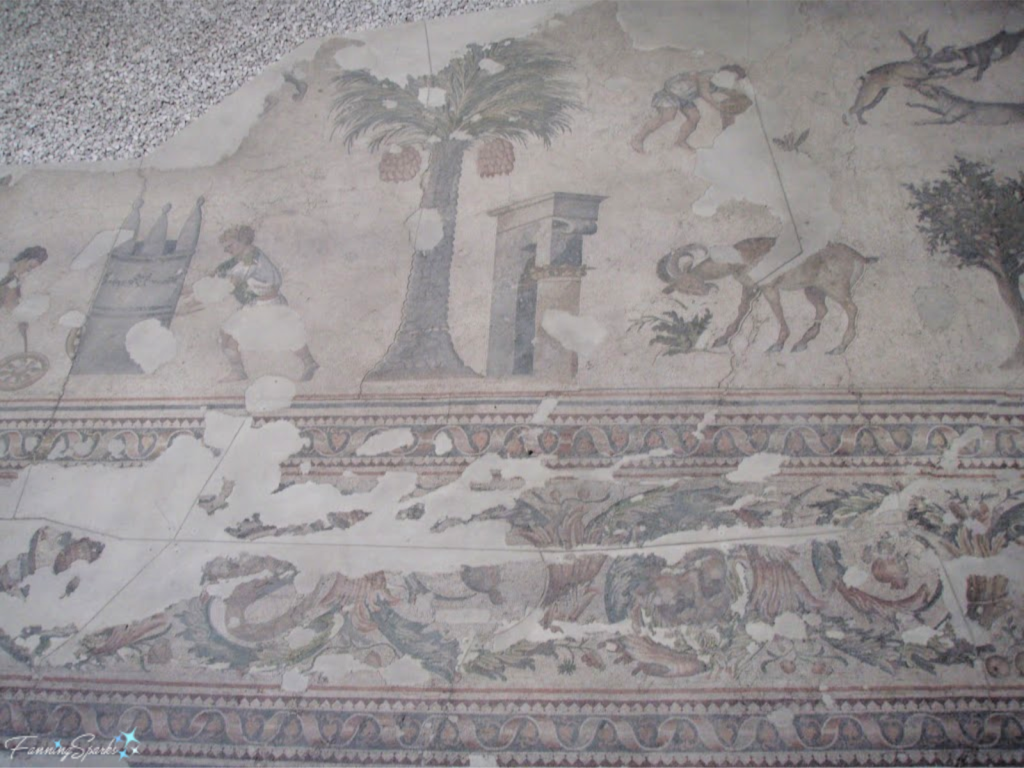
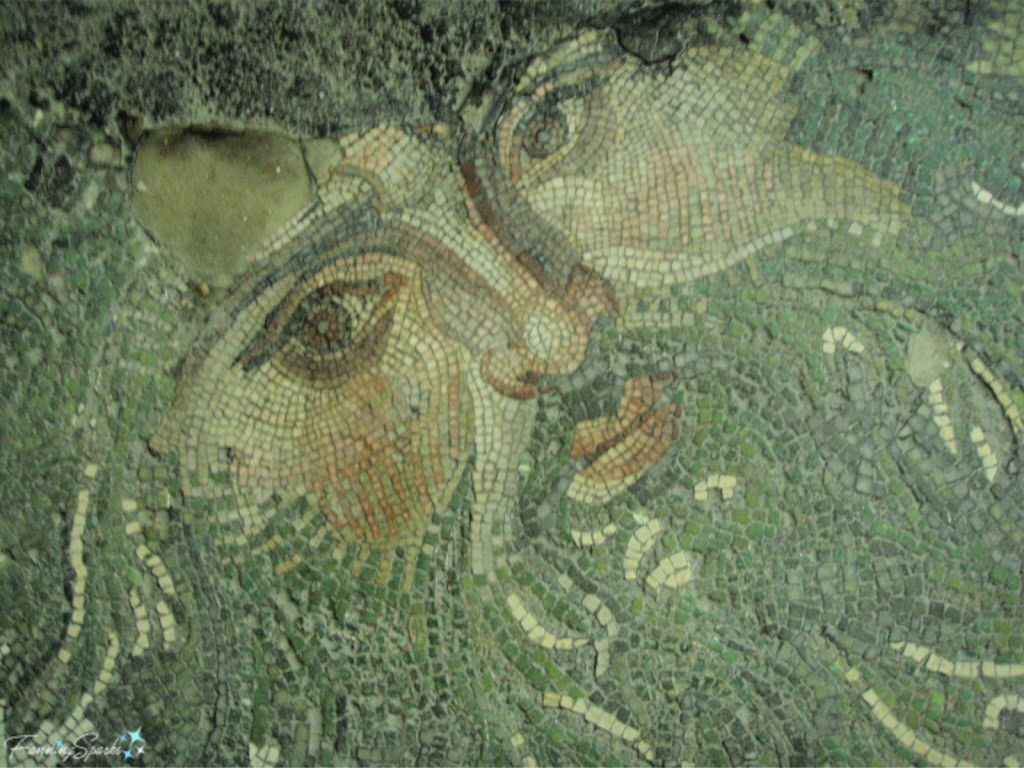
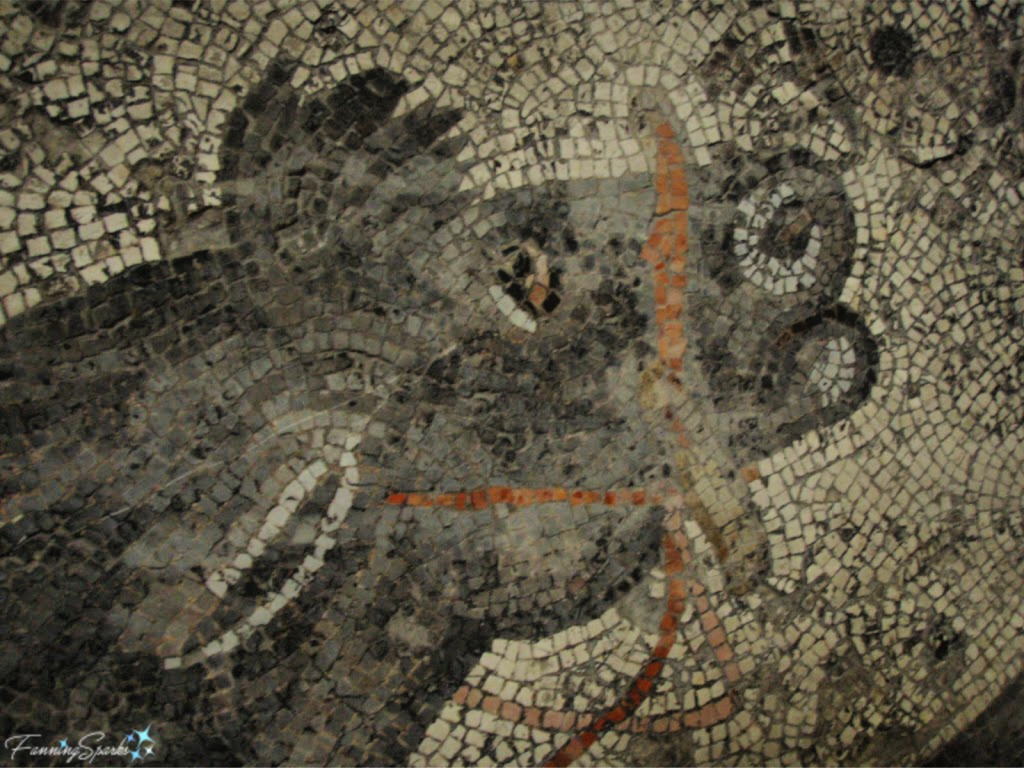
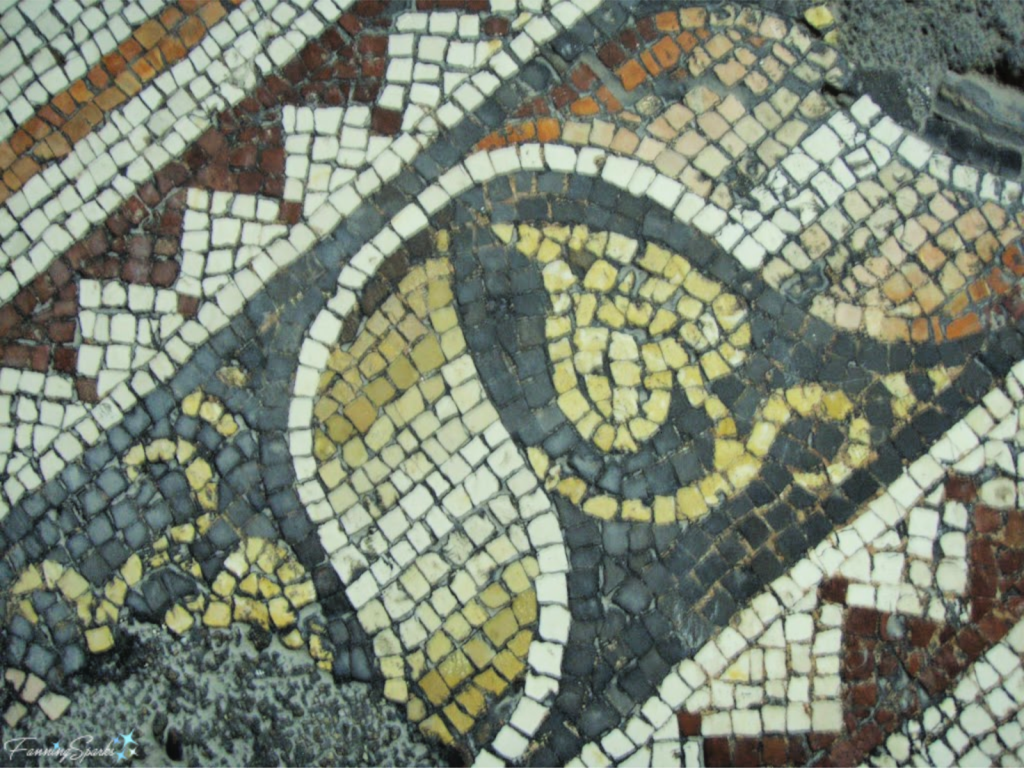
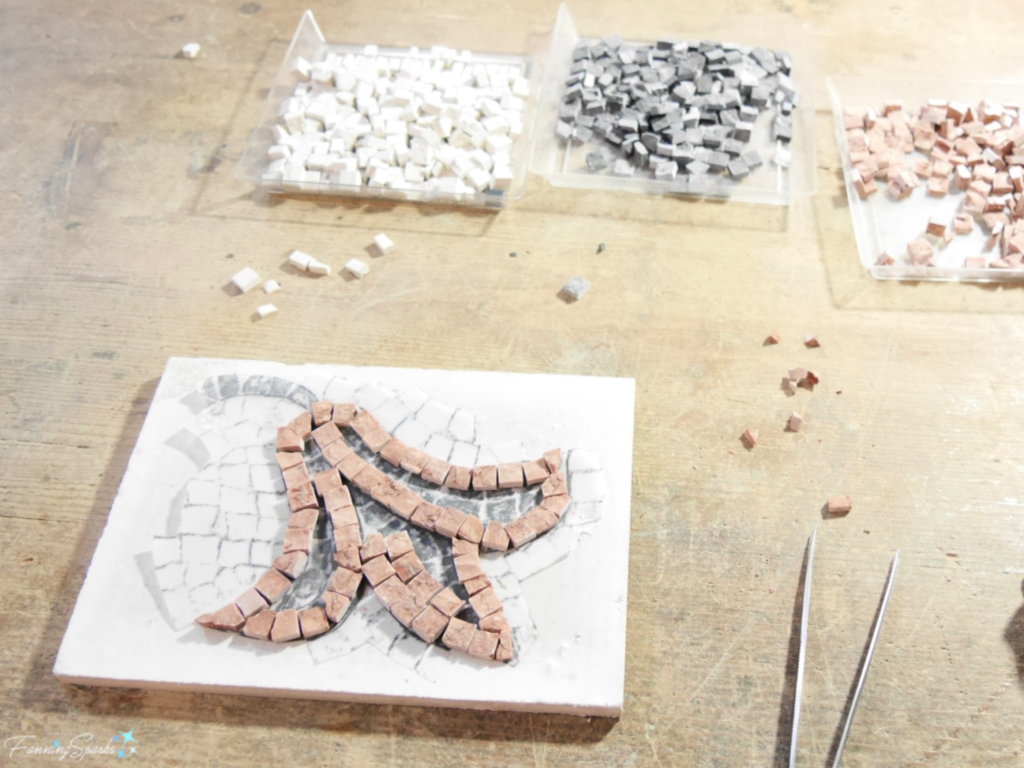
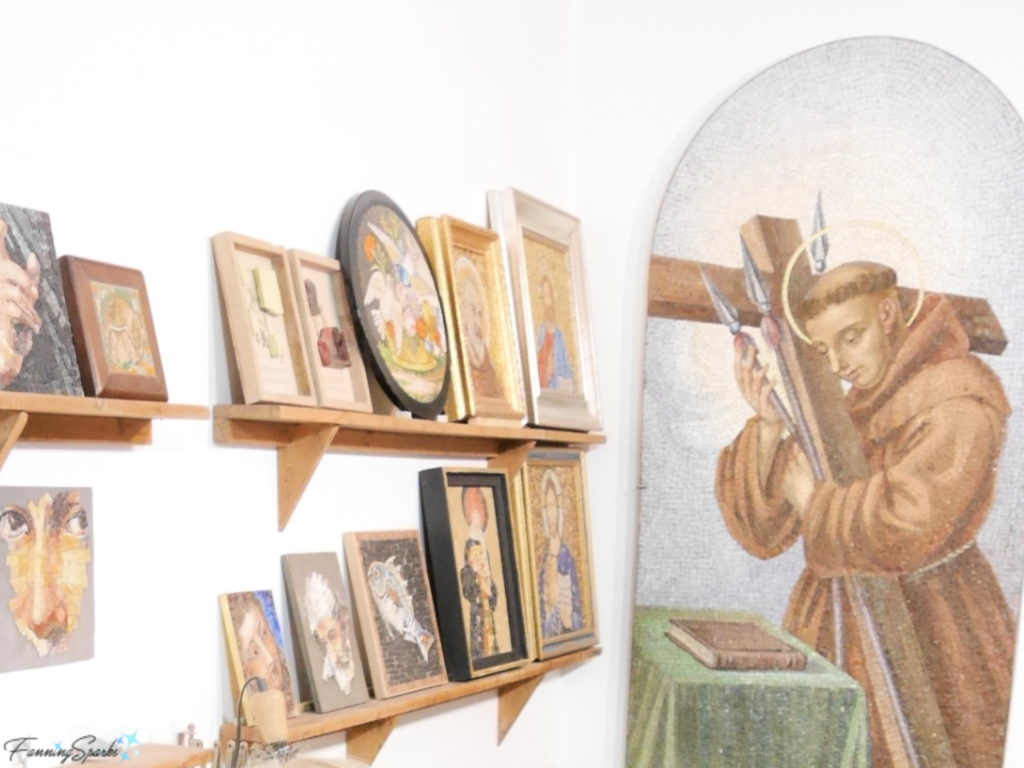
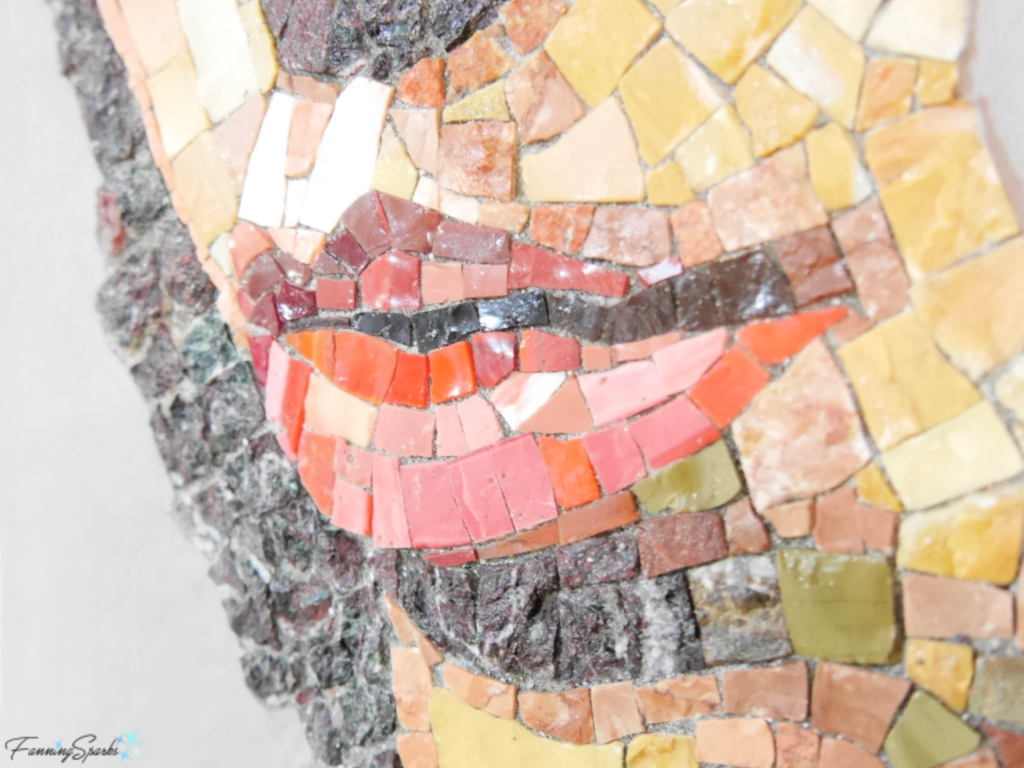
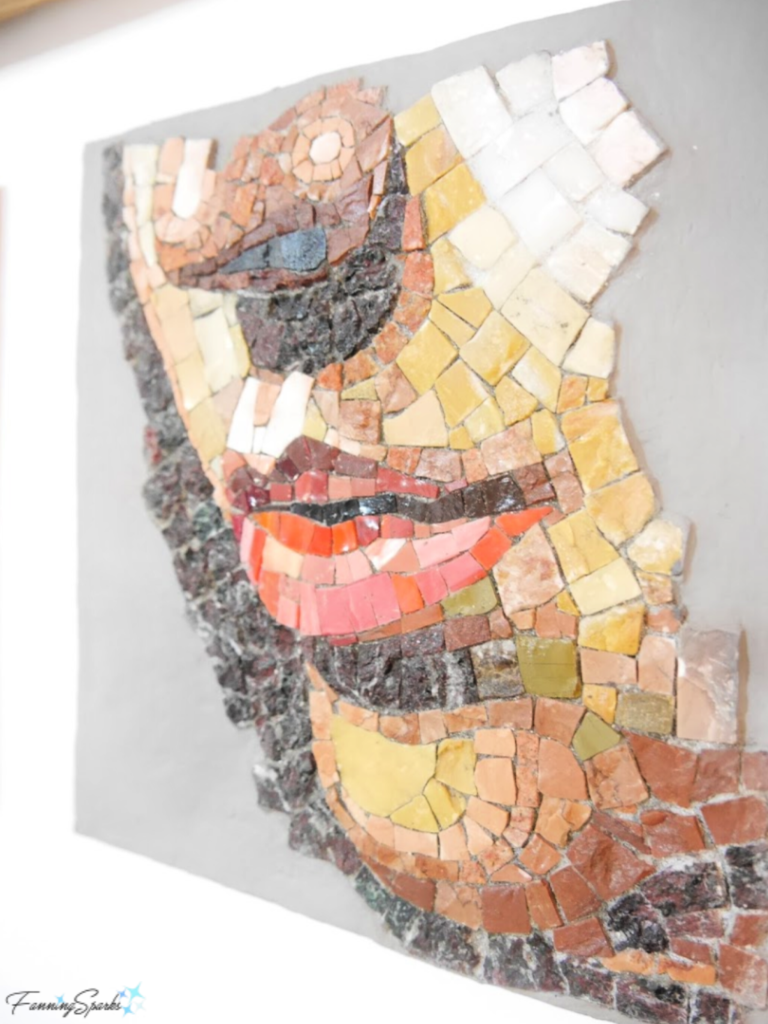
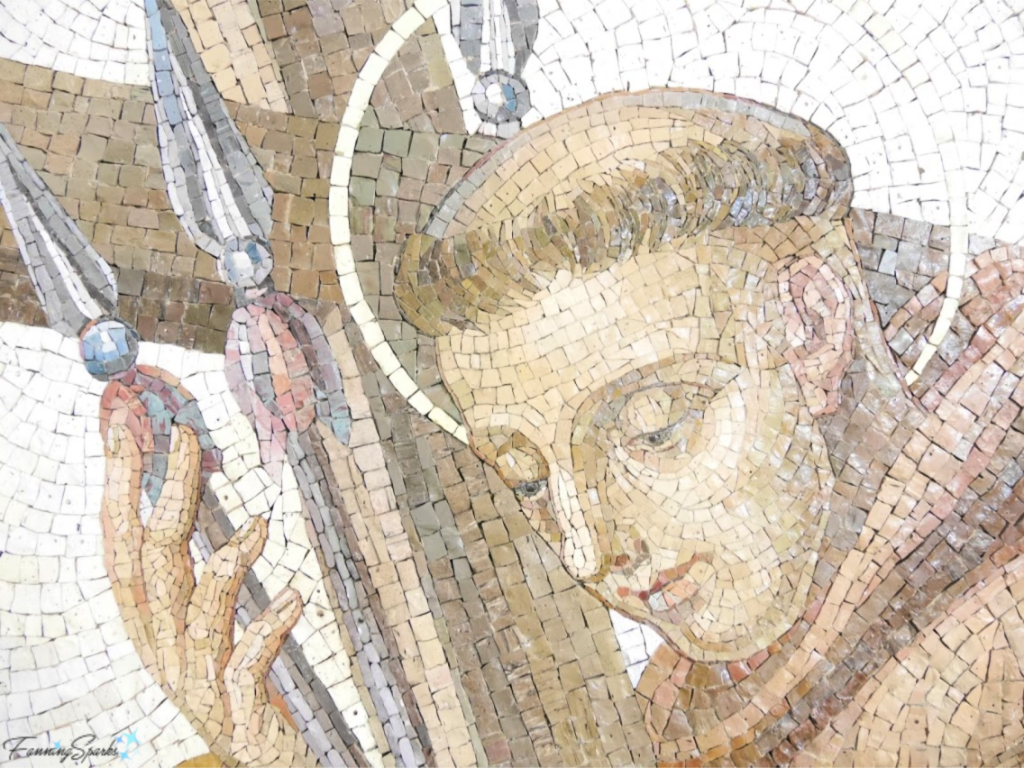
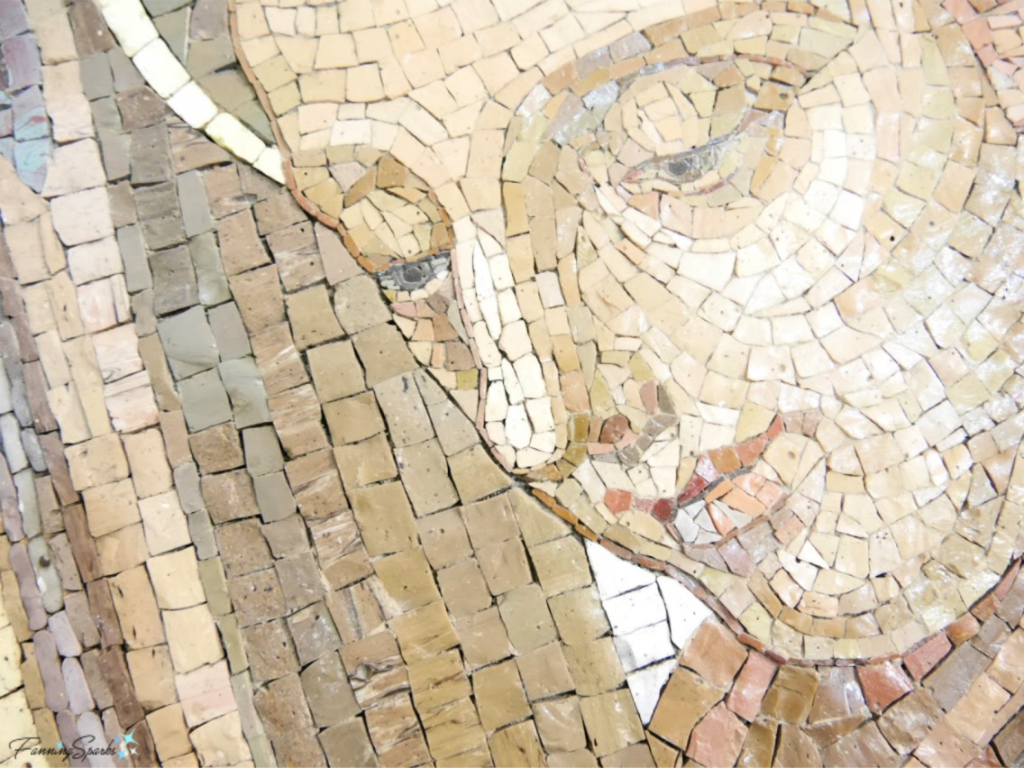
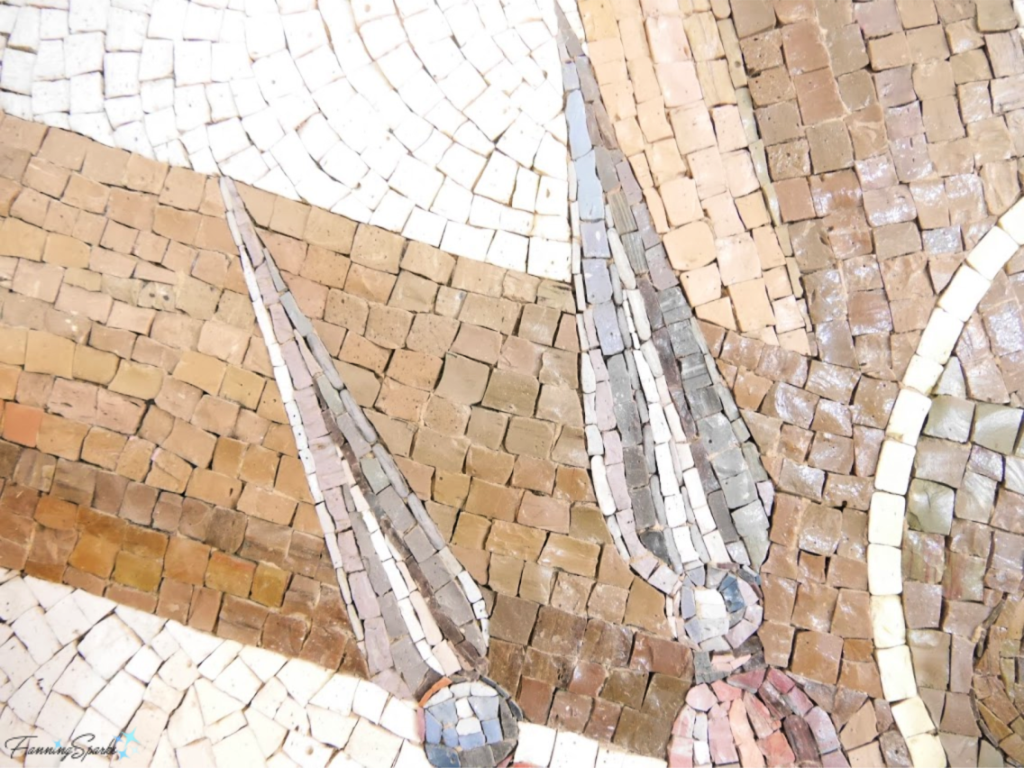
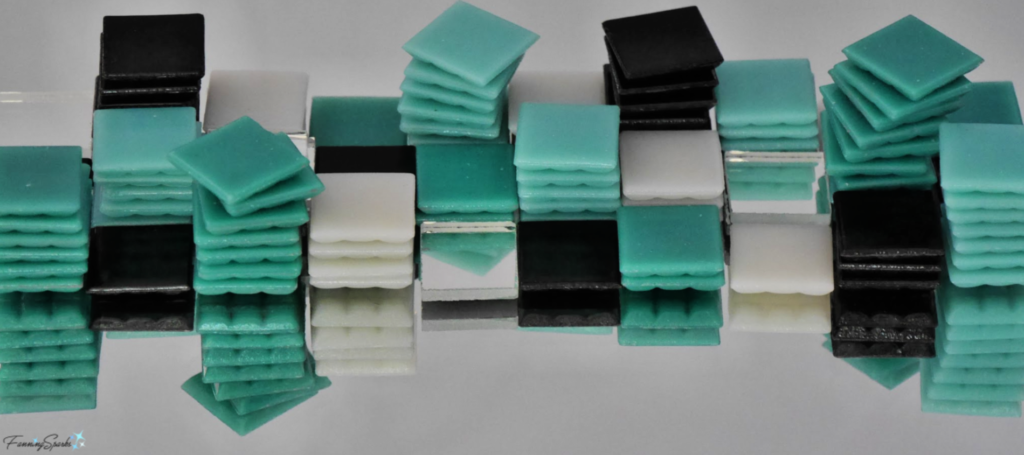
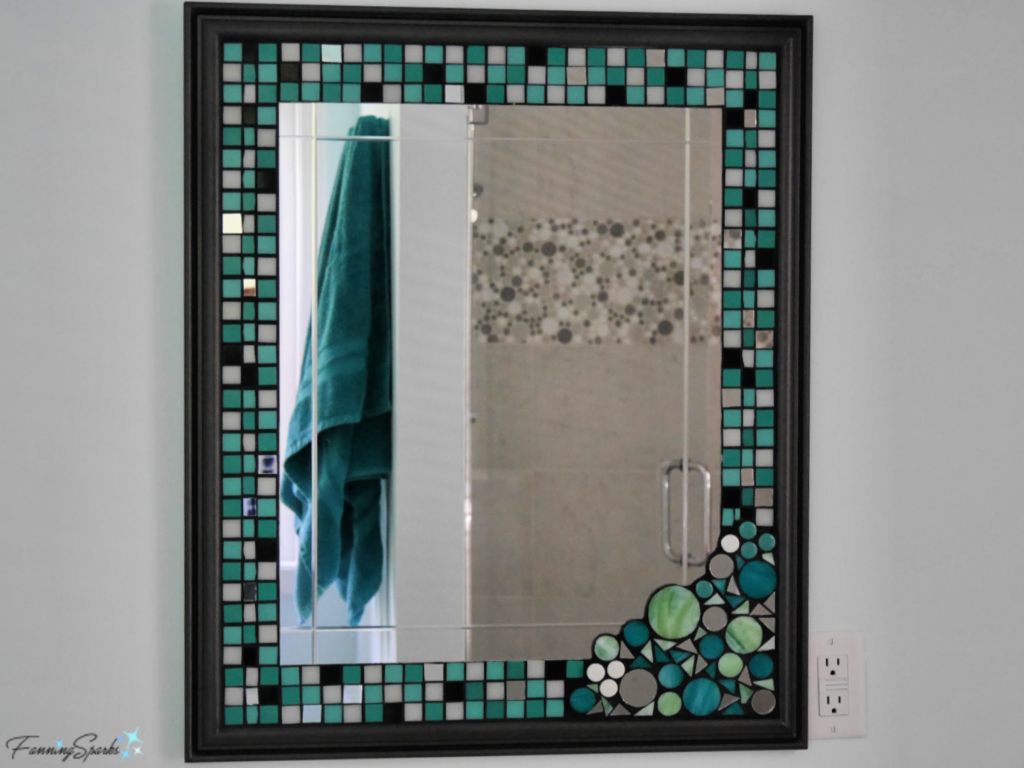

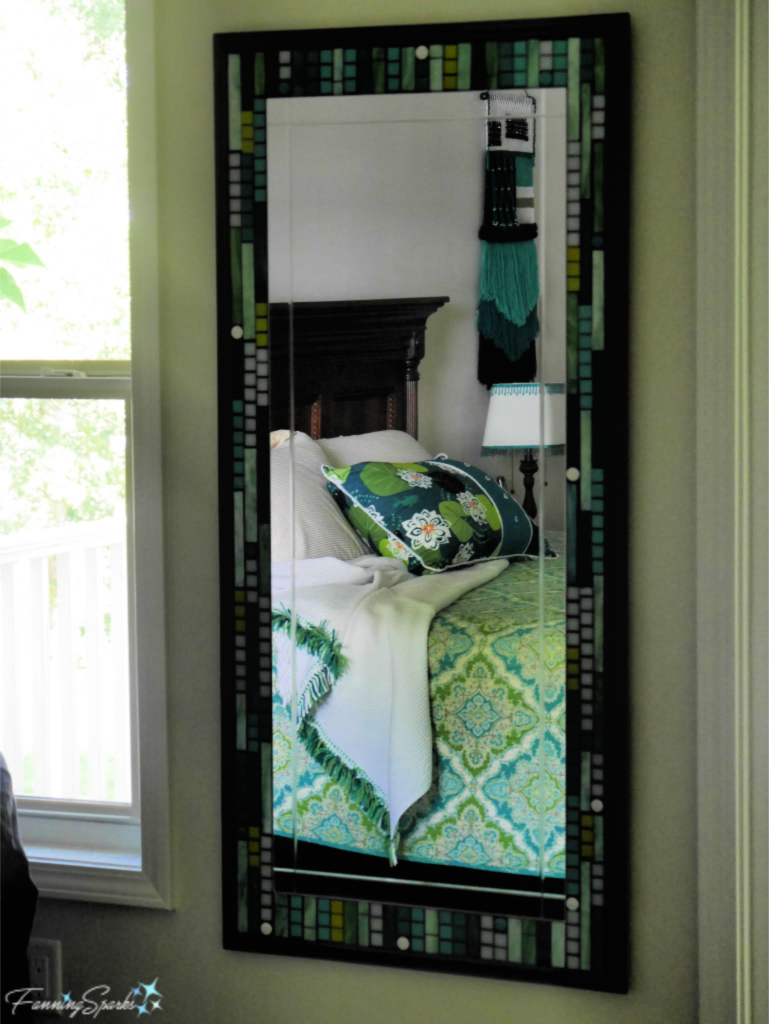
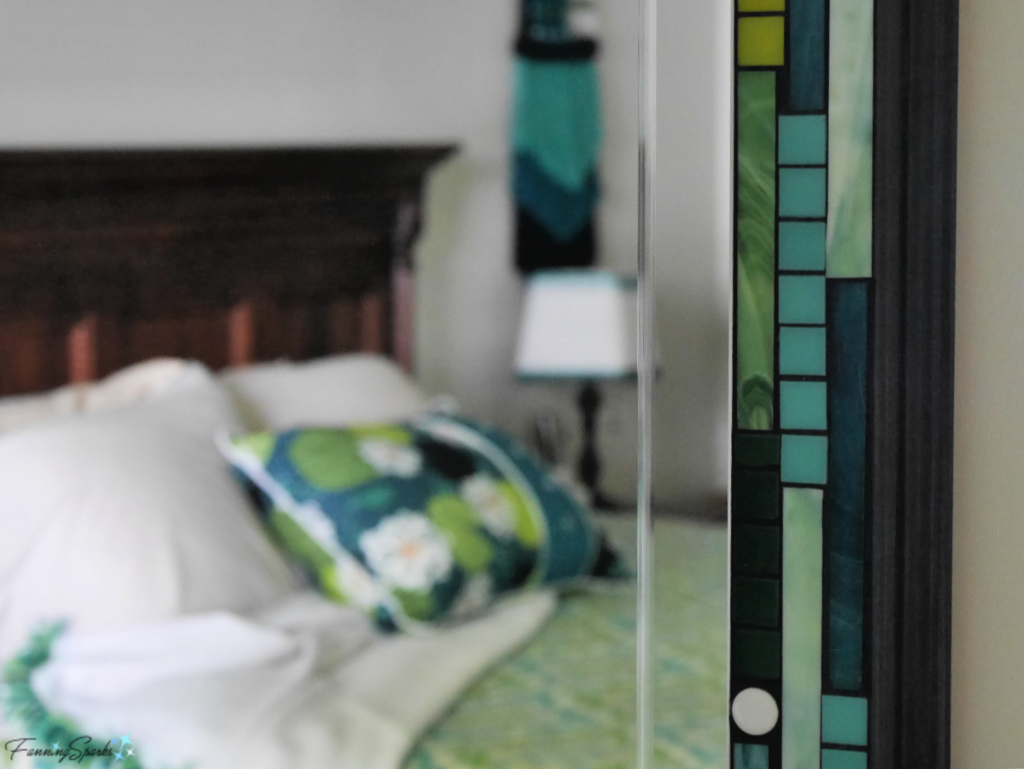
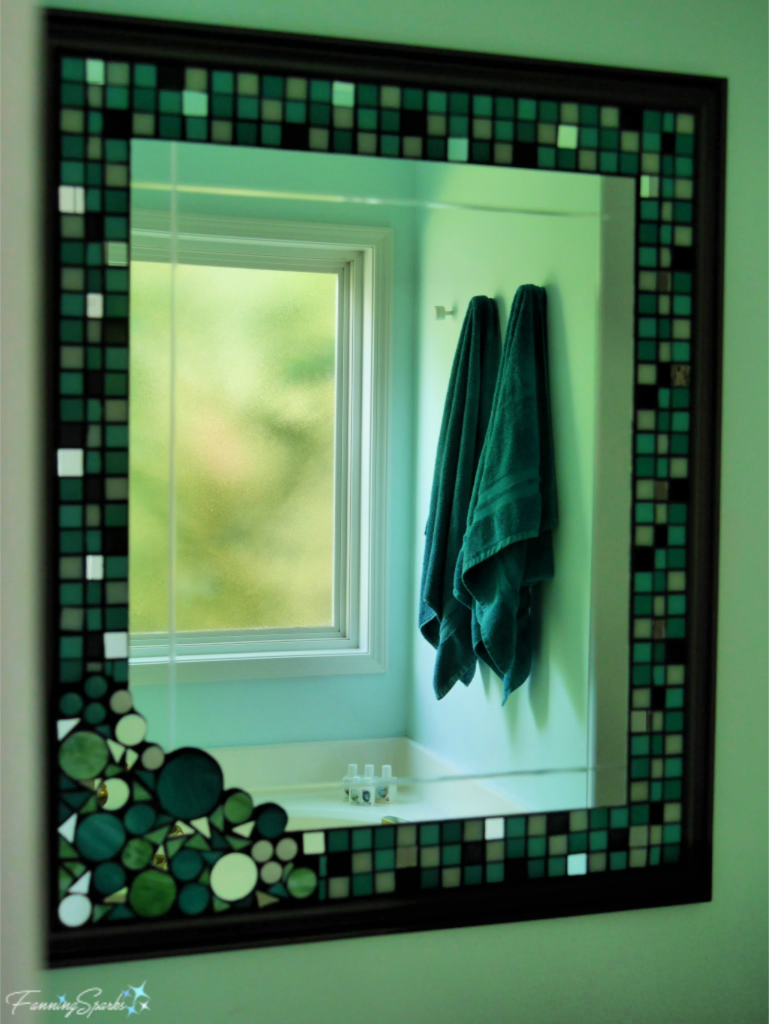
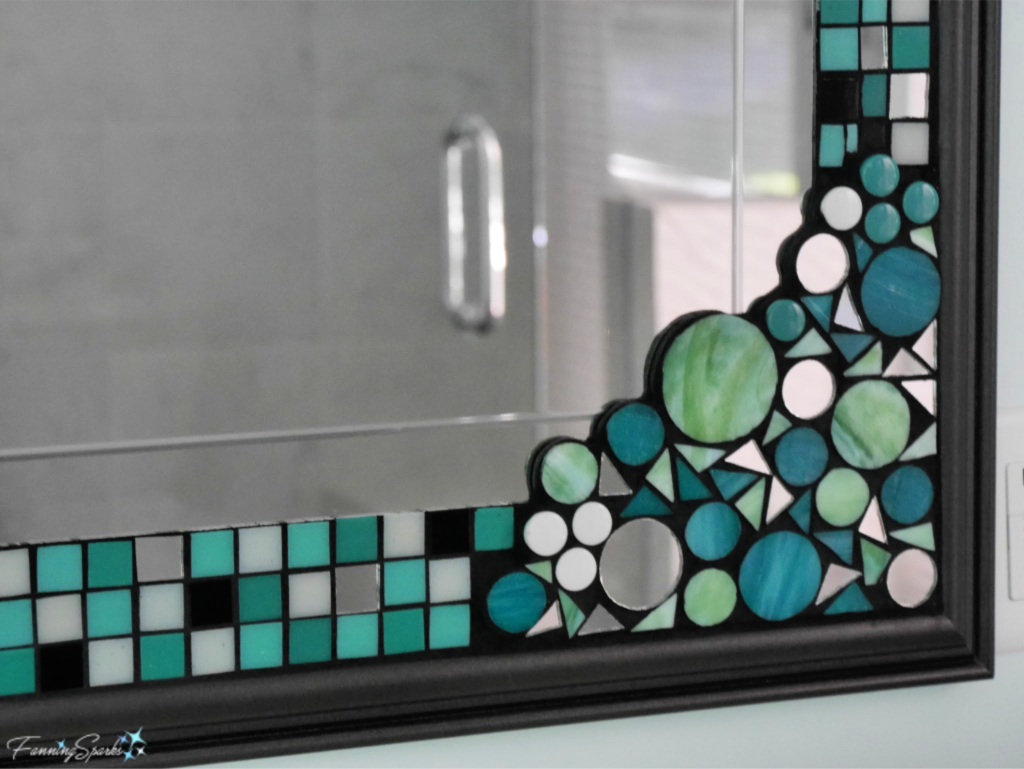
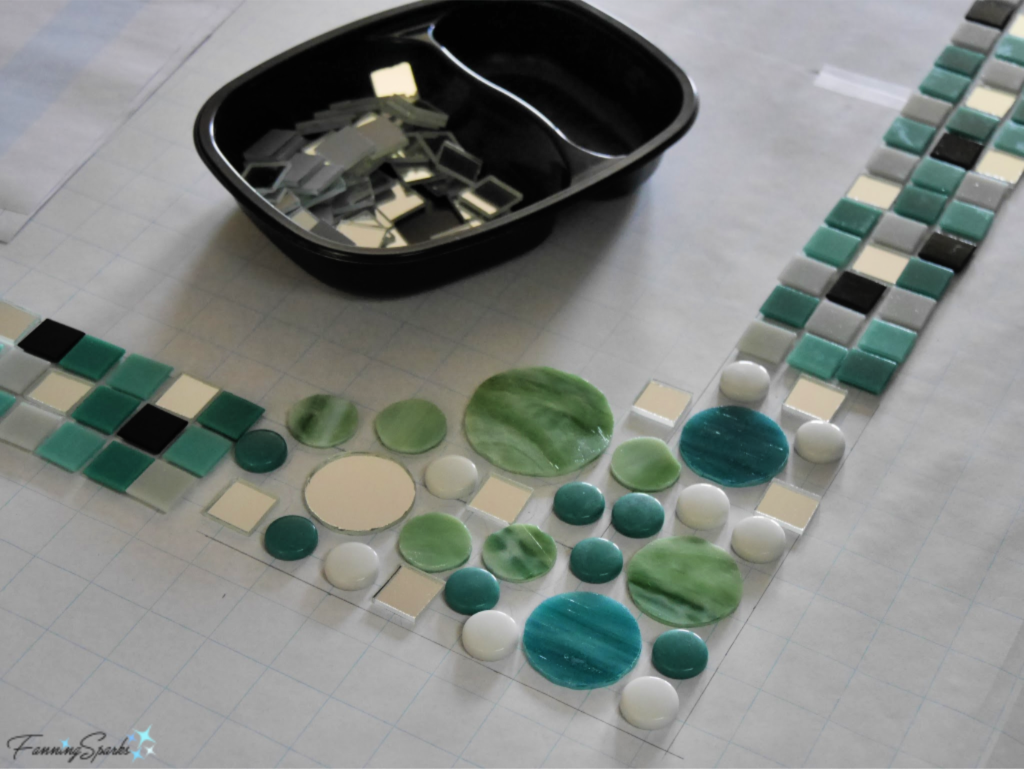
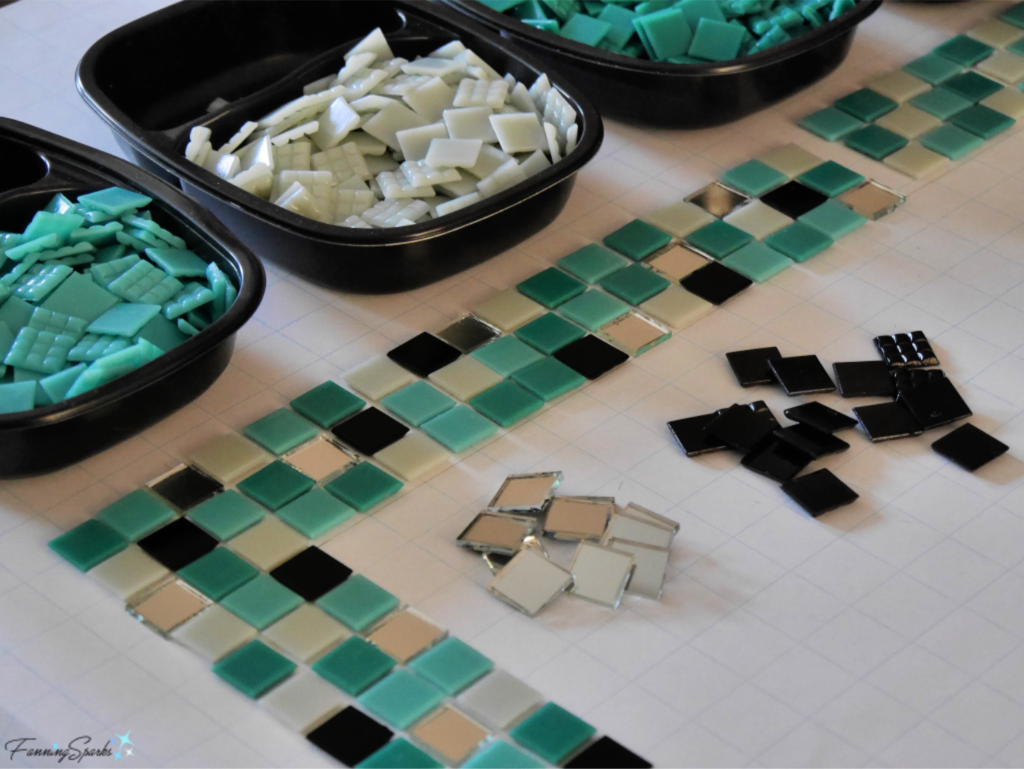 Here’s a closeup showing the bottom of the tiles‒they are formed into 9 quadrants for good adherence but that also makes them easy to cut with a pair of tile nippers.
Here’s a closeup showing the bottom of the tiles‒they are formed into 9 quadrants for good adherence but that also makes them easy to cut with a pair of tile nippers.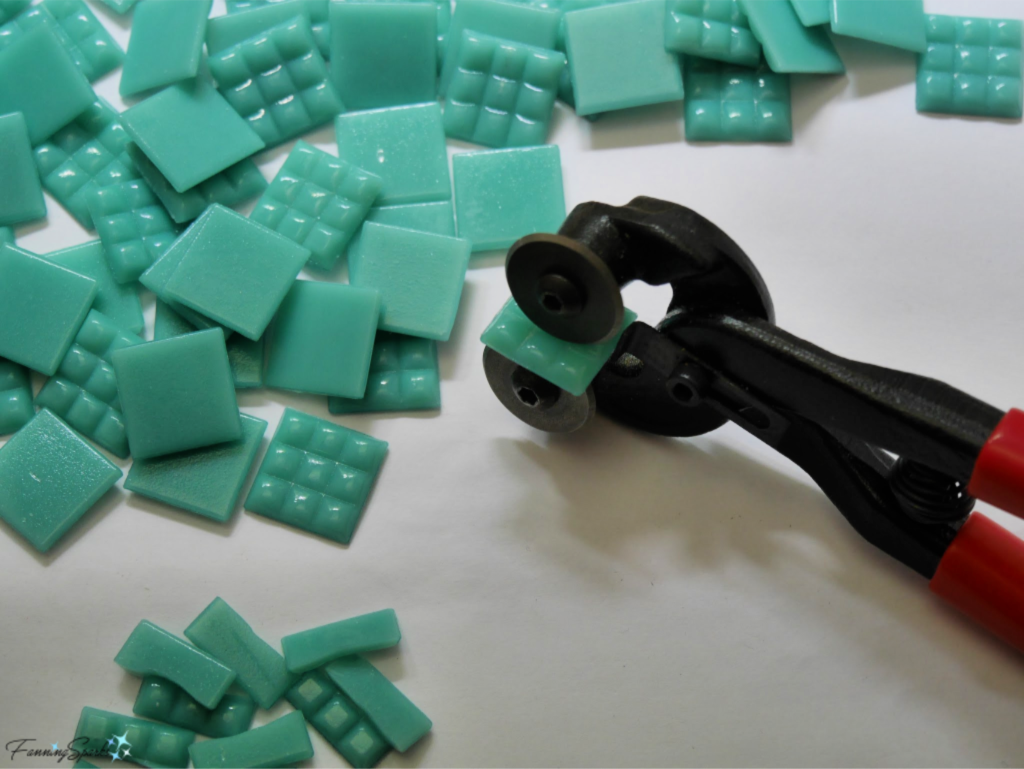
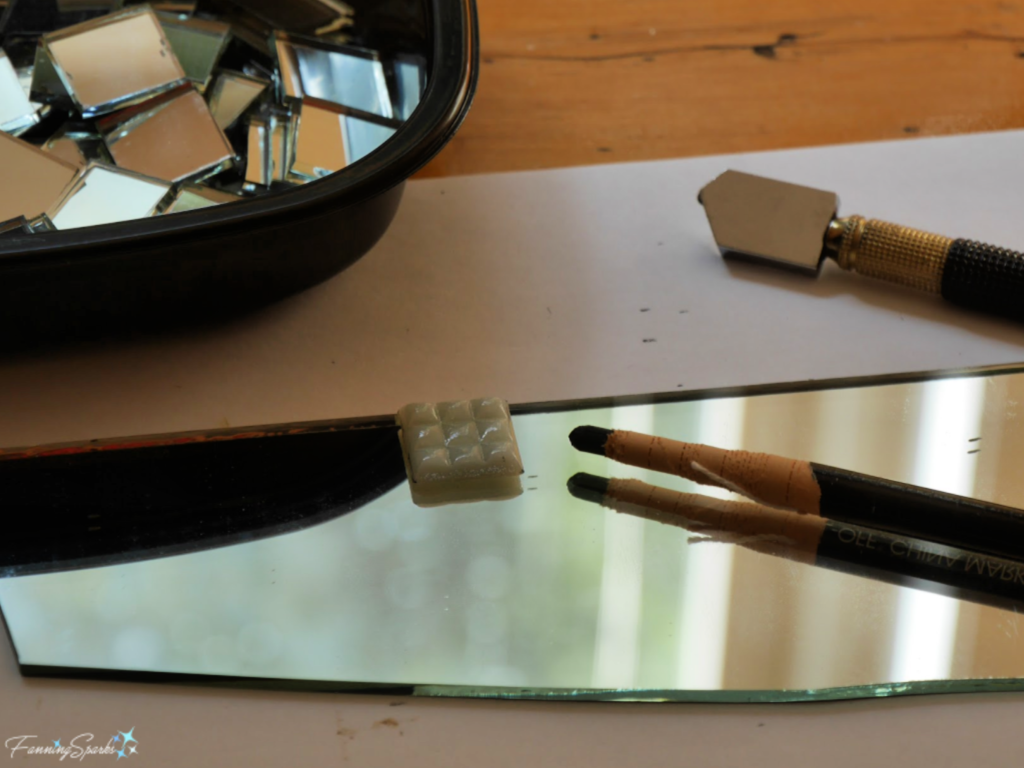
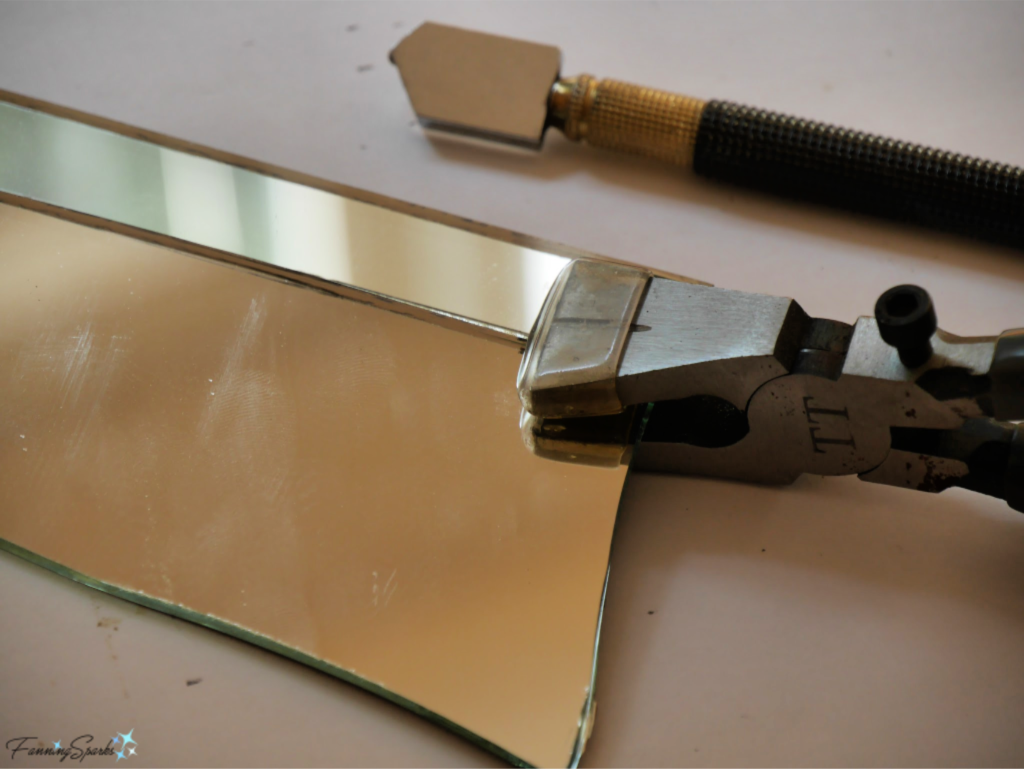
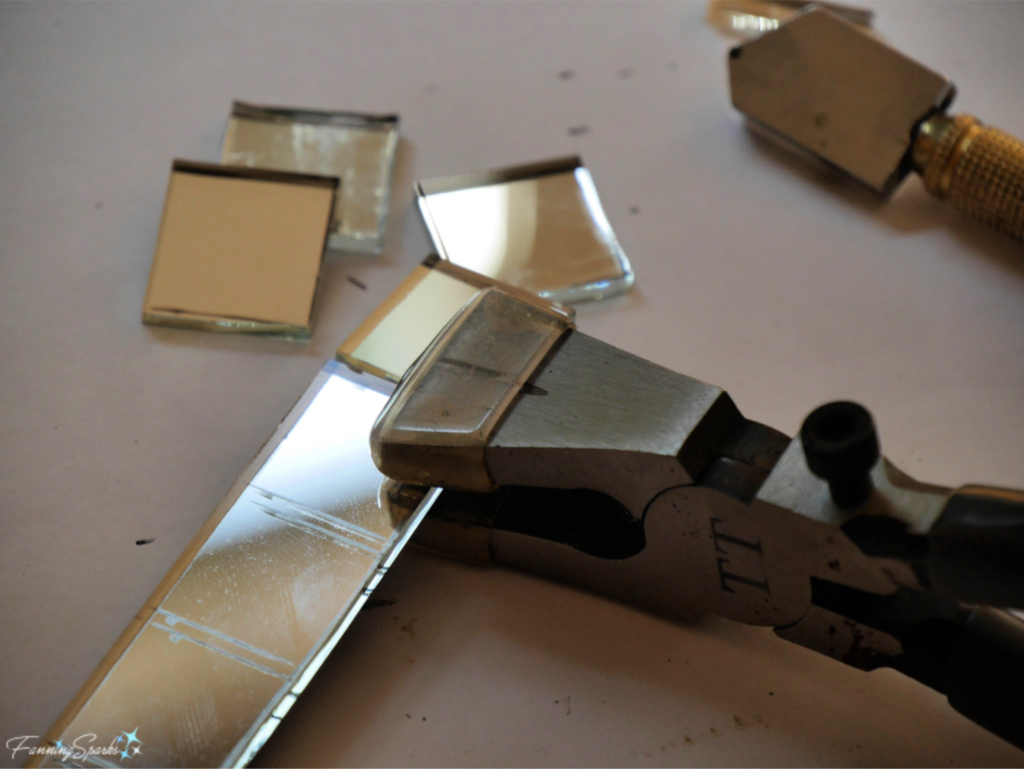
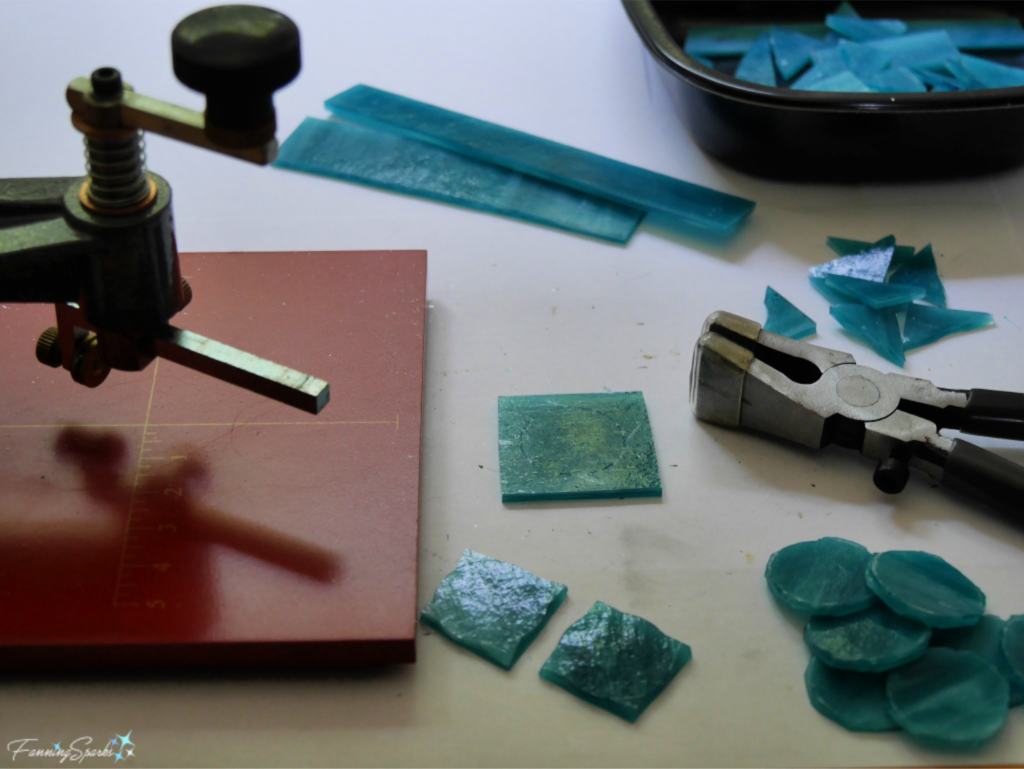
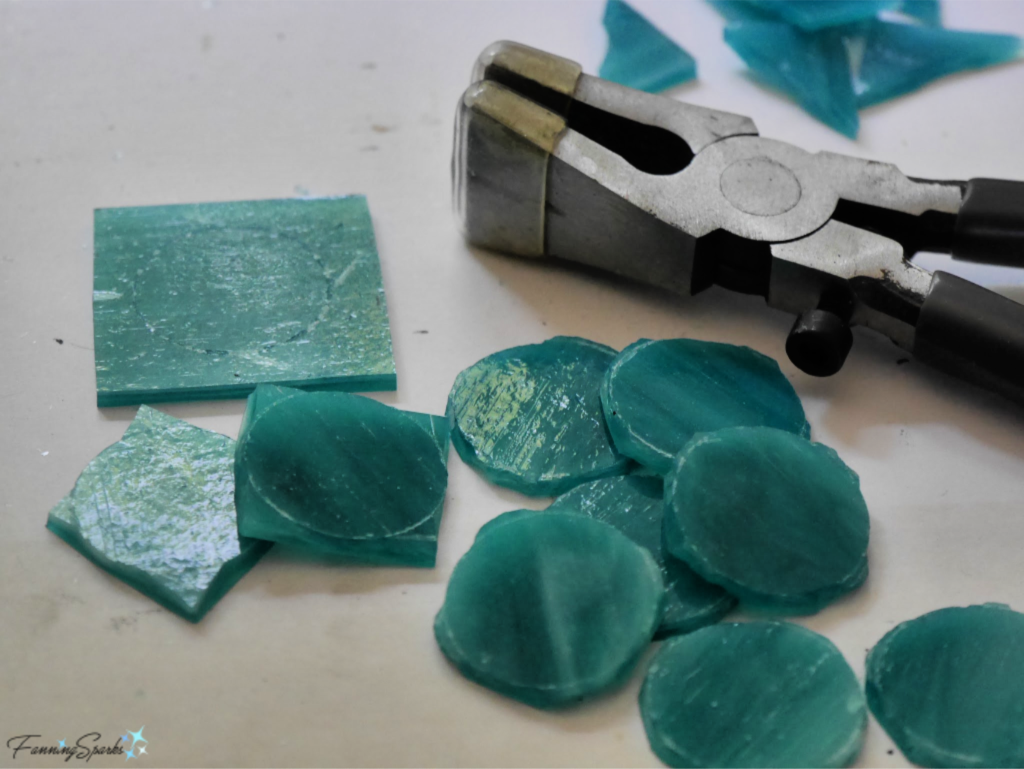
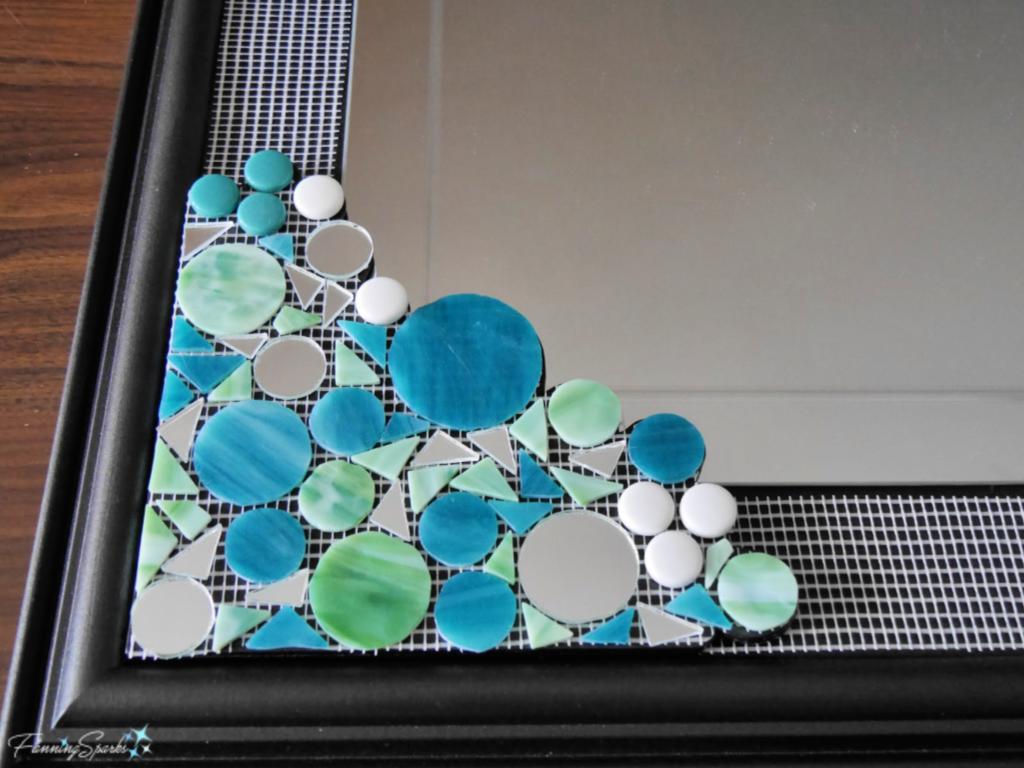
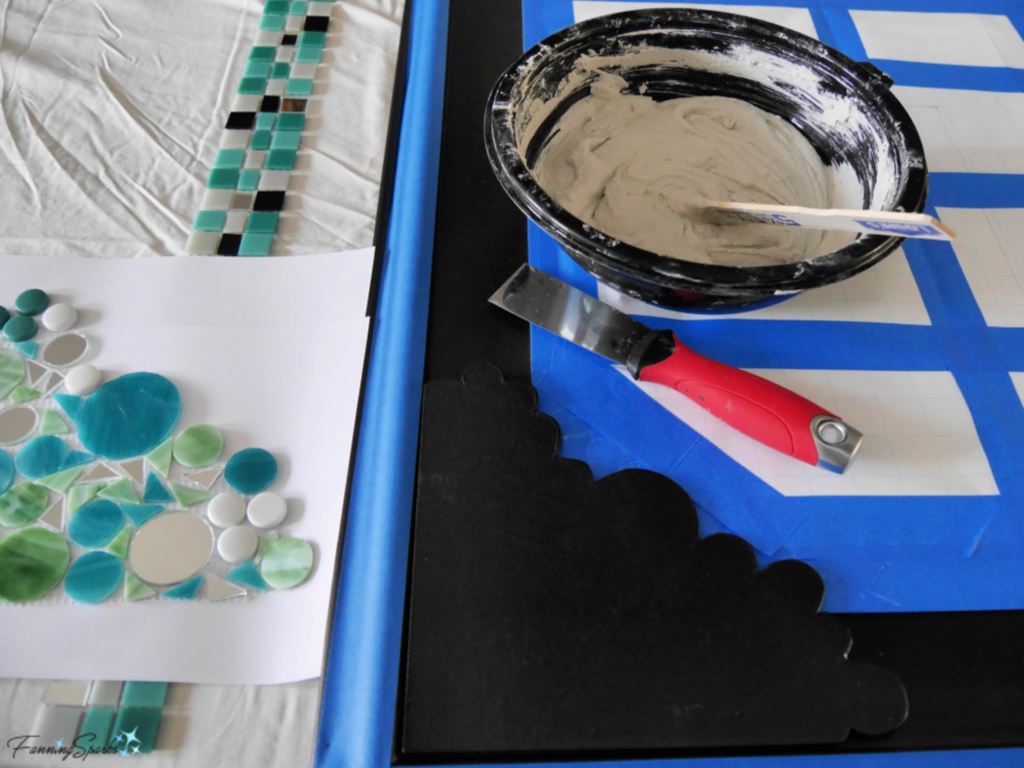
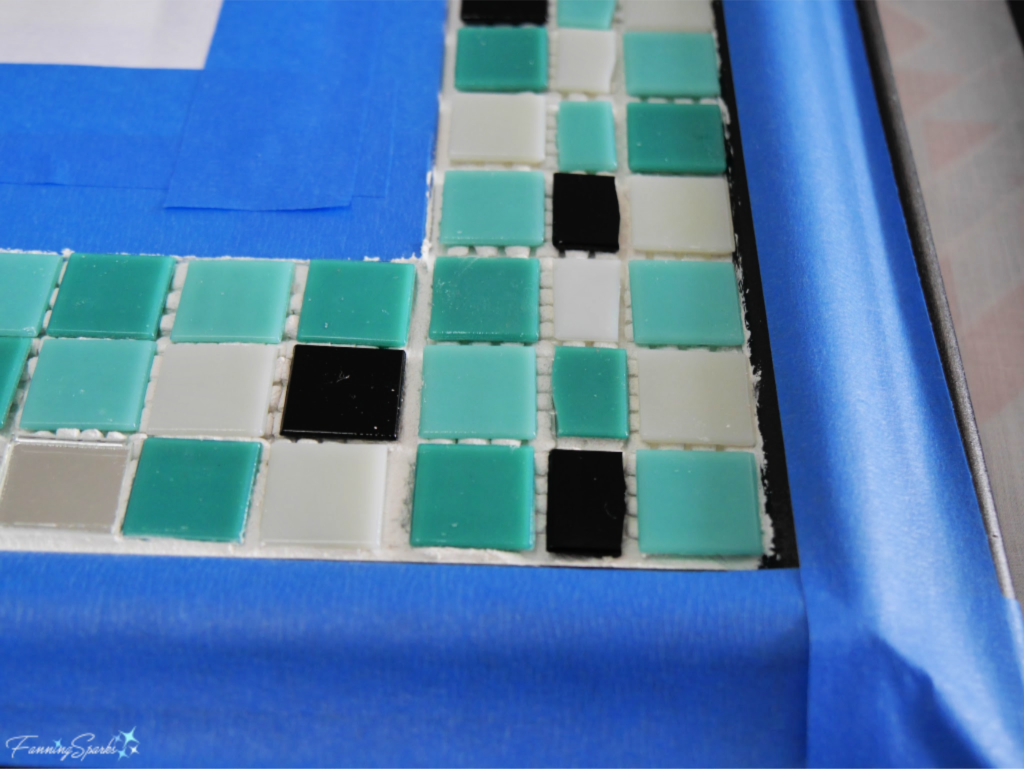
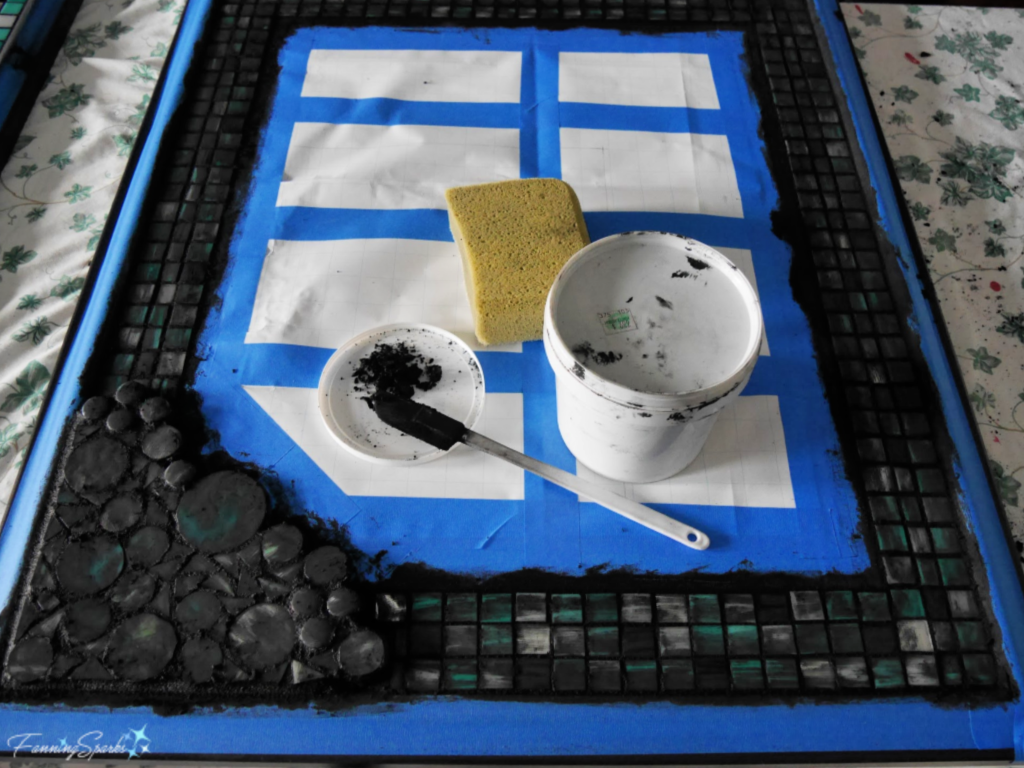
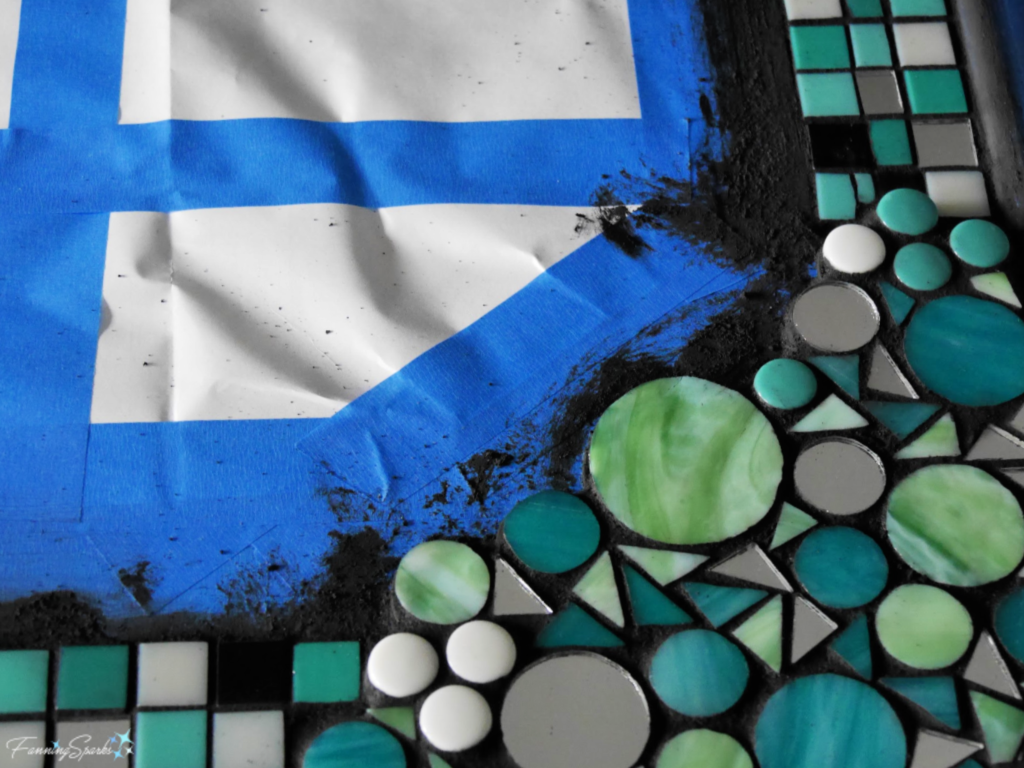
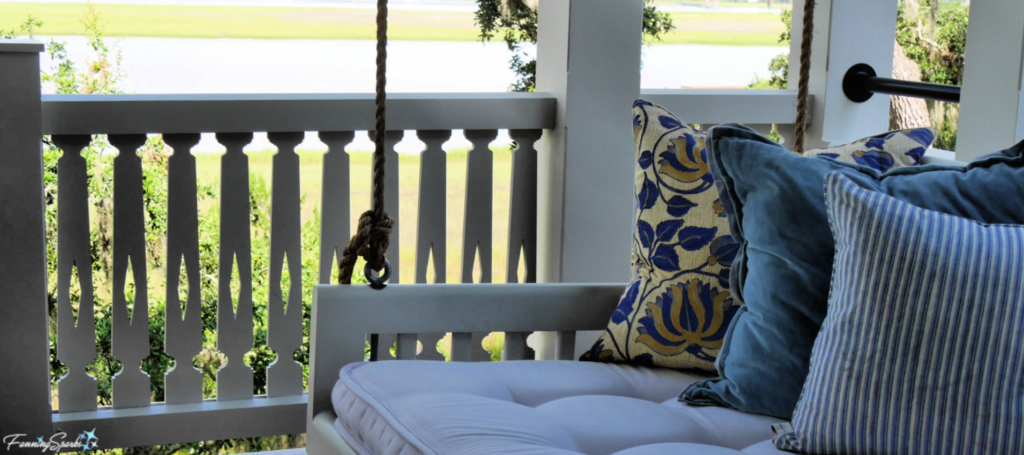
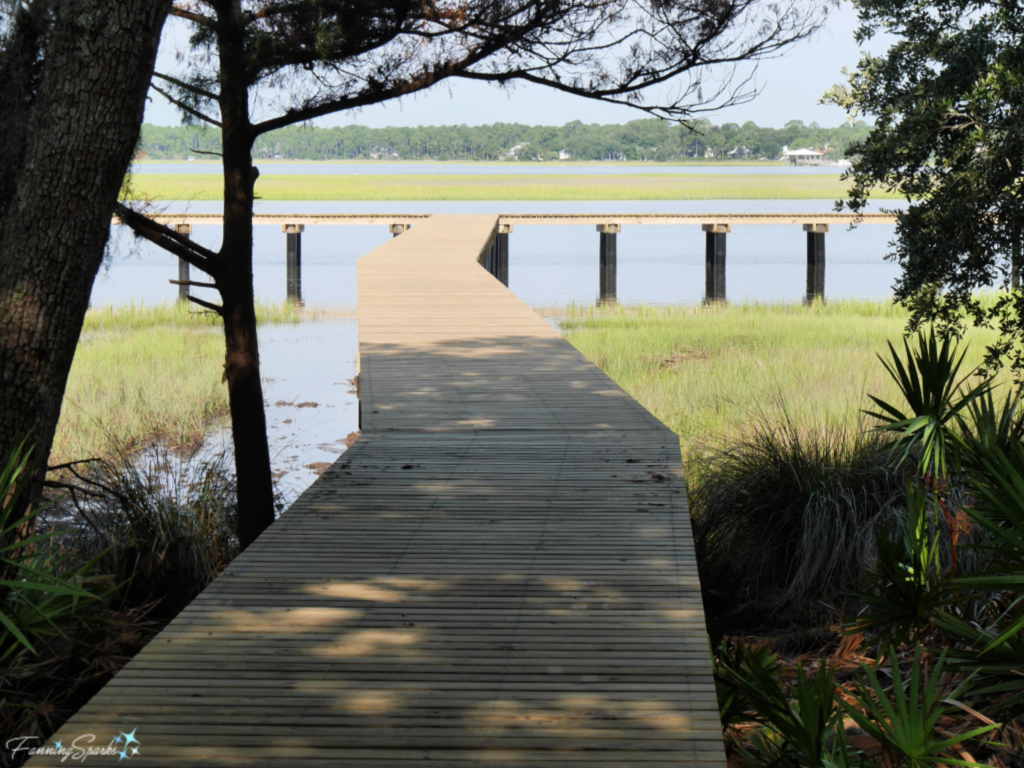
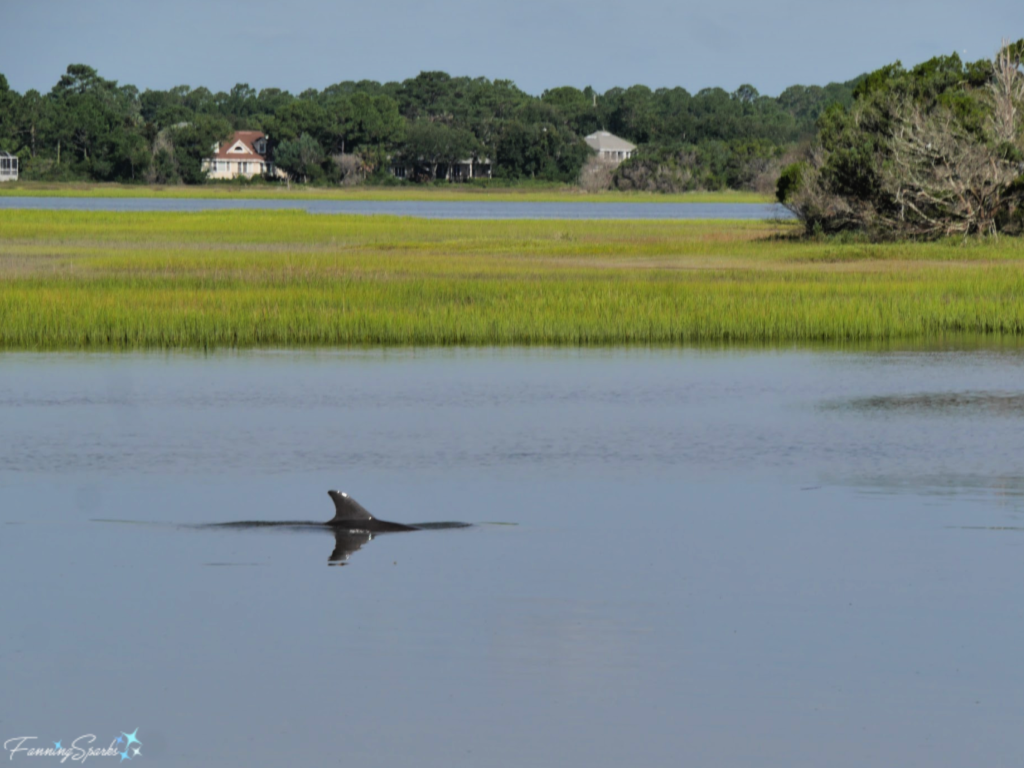
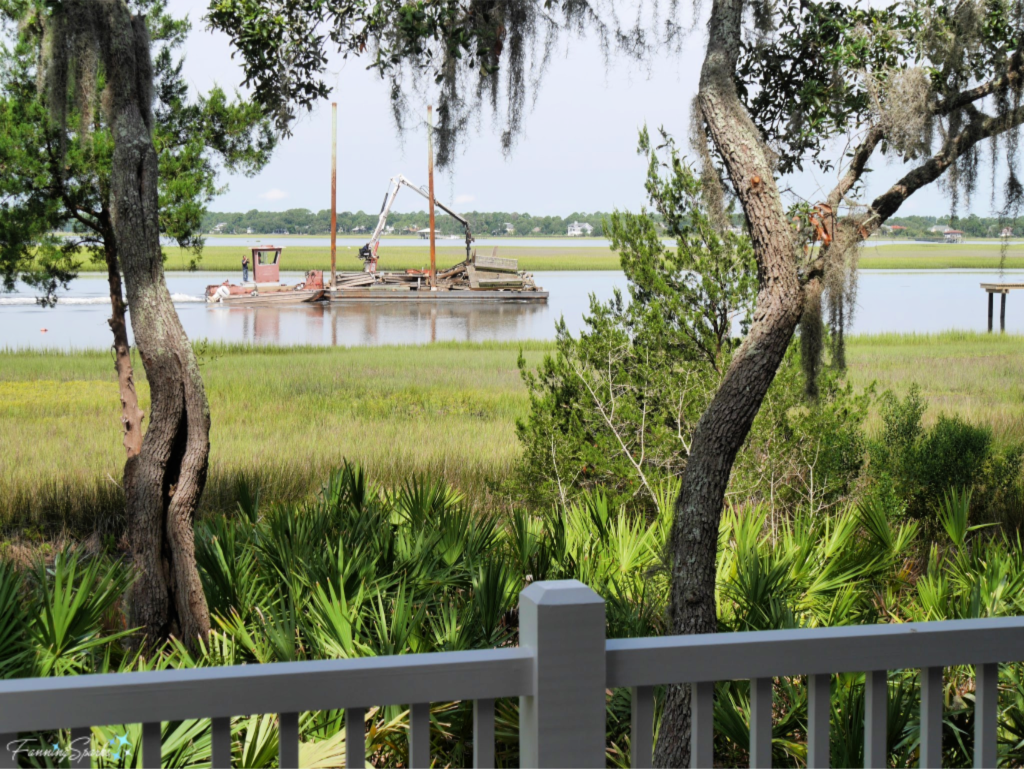
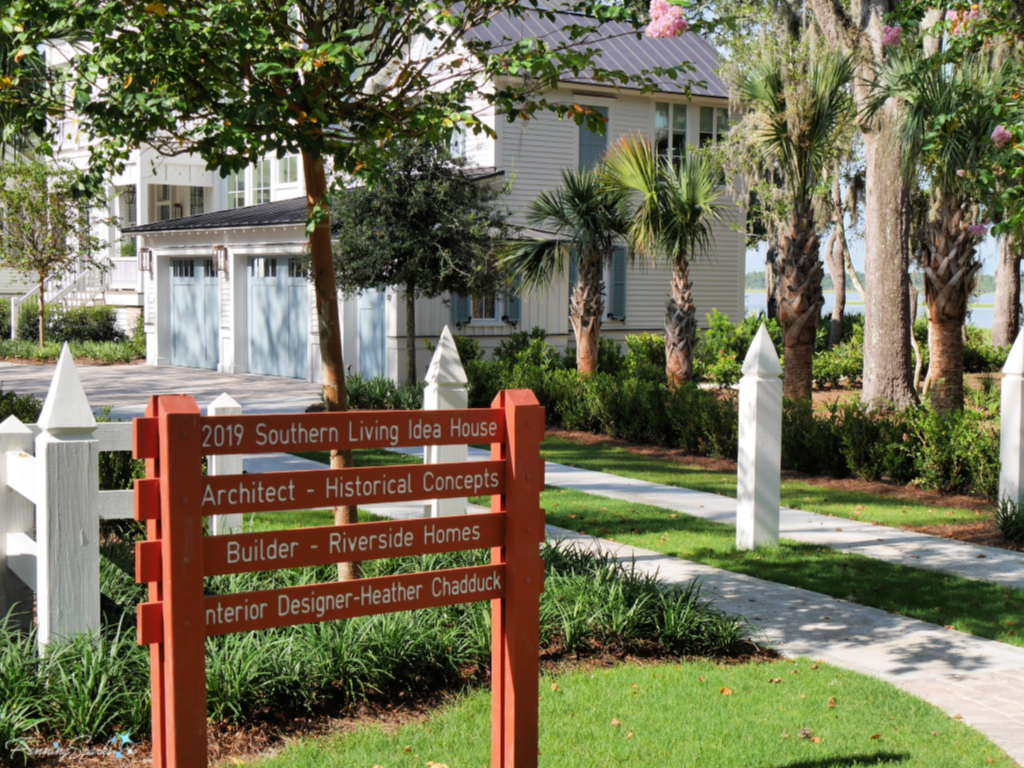
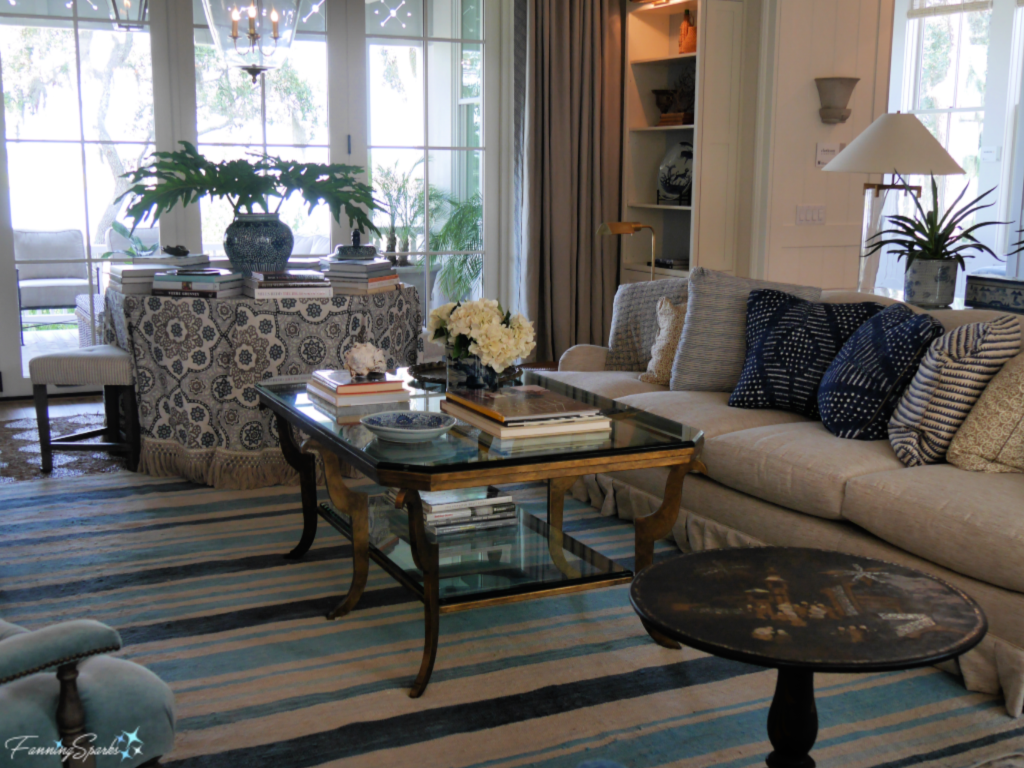

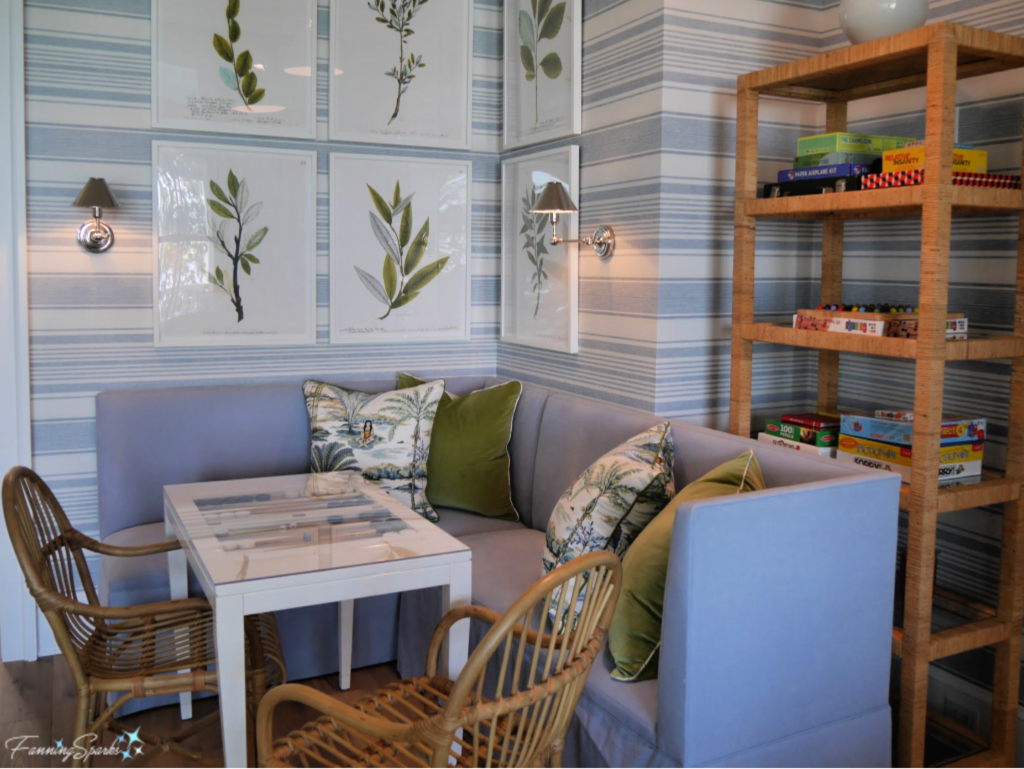
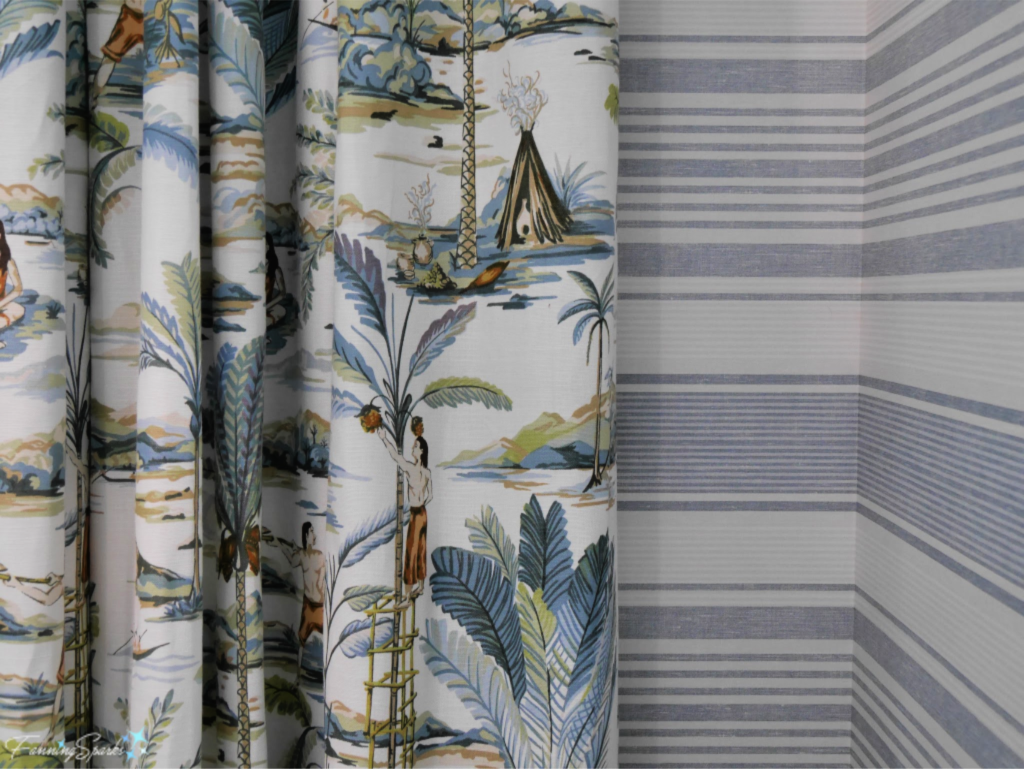
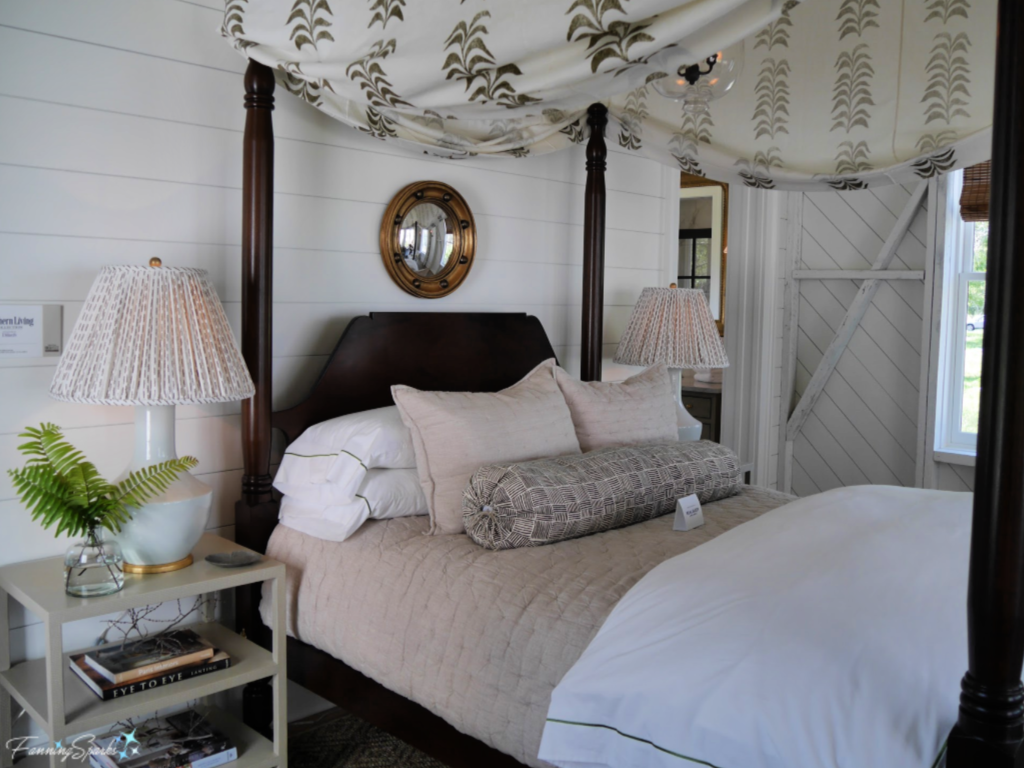
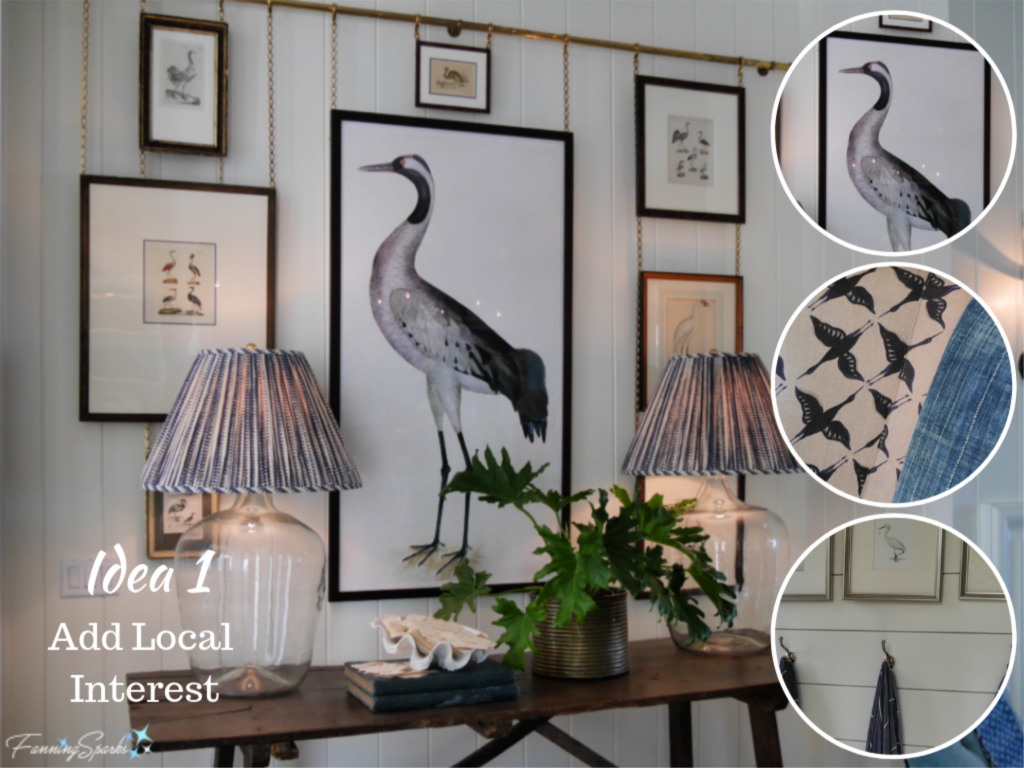
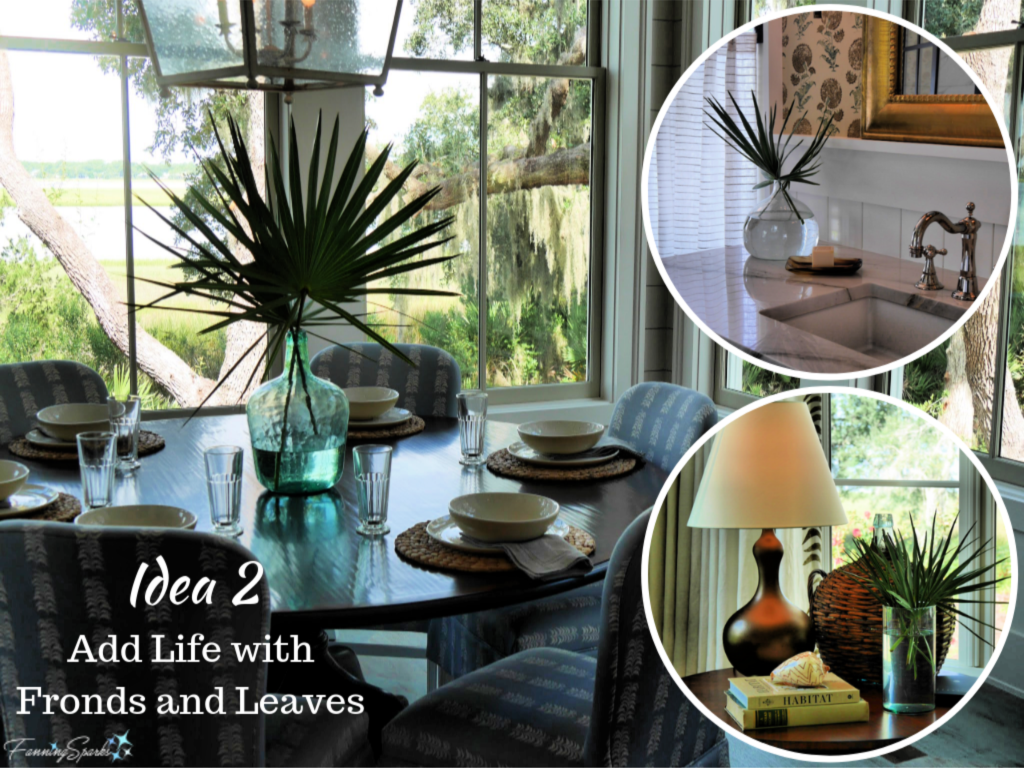
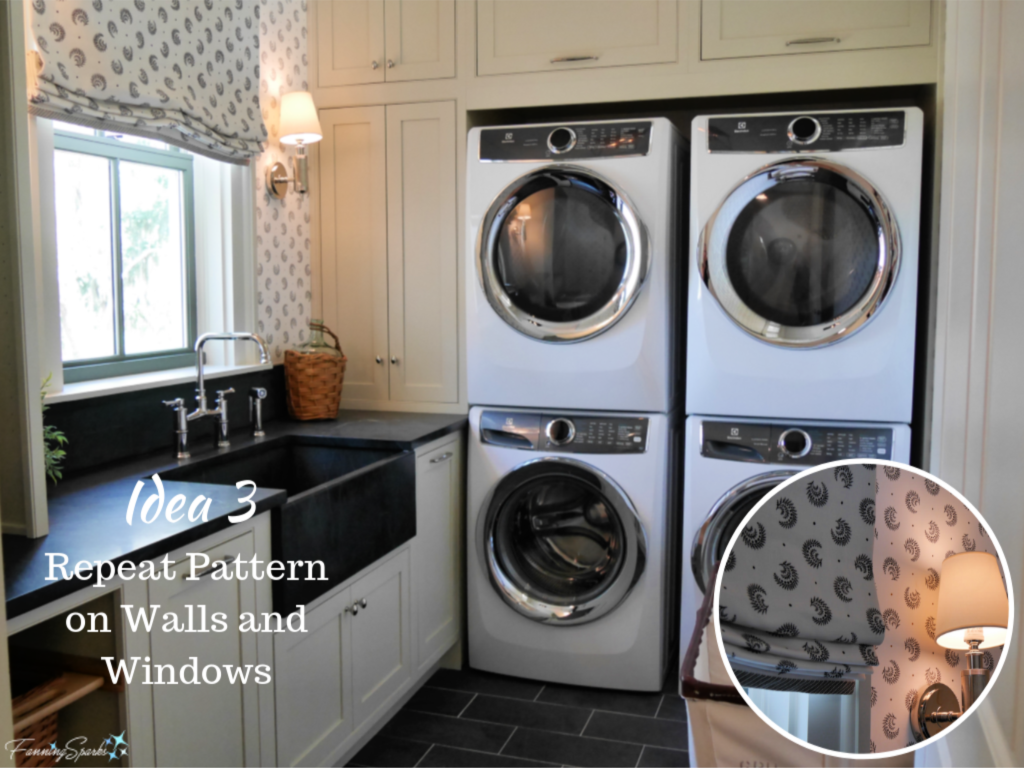
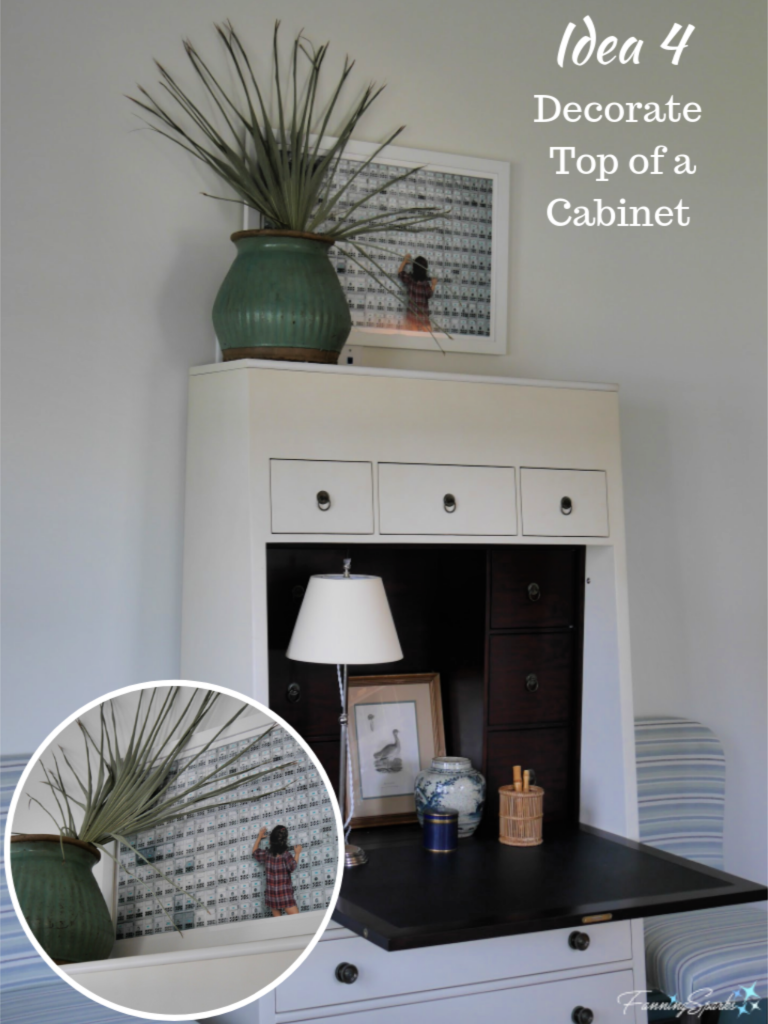
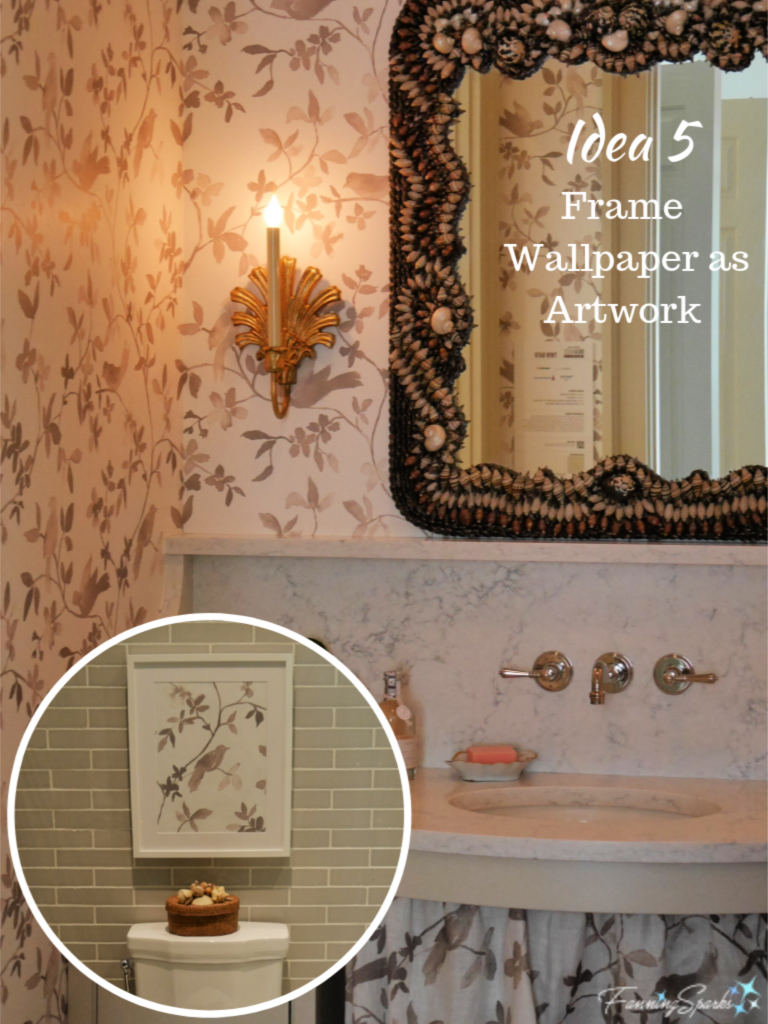
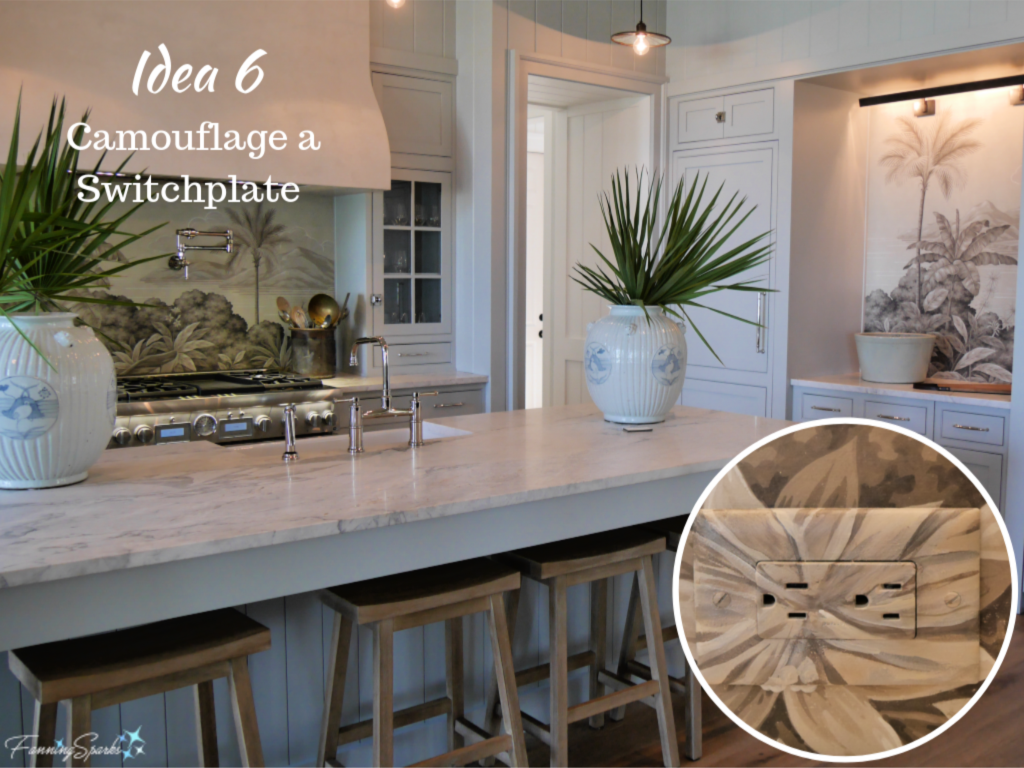
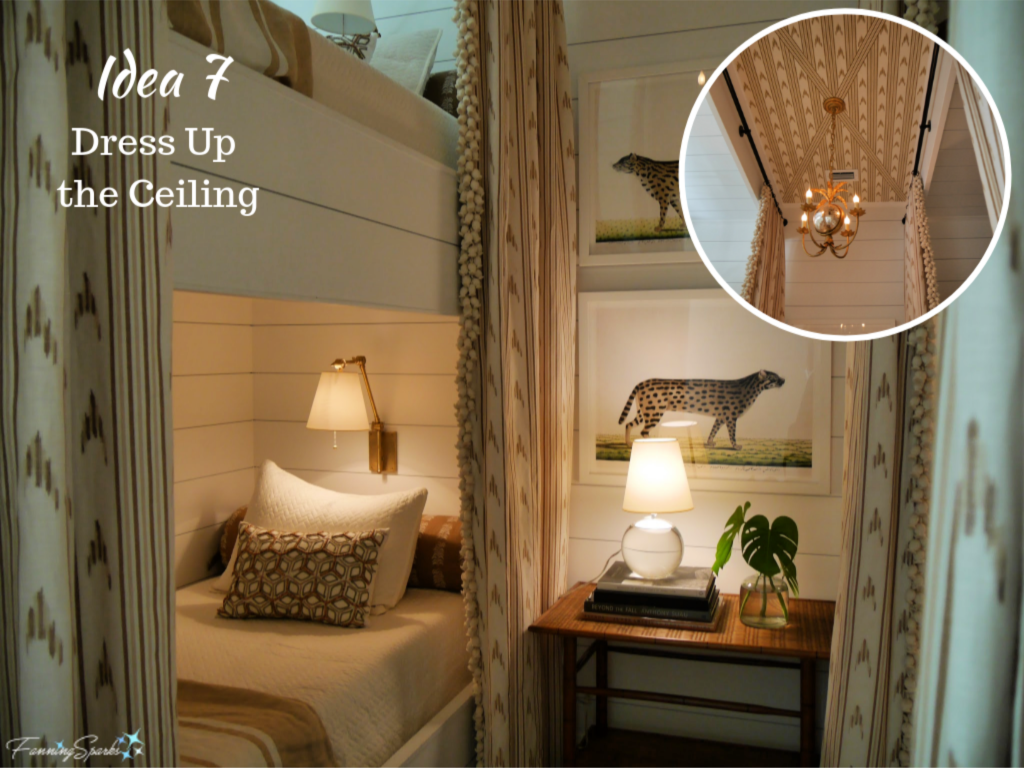
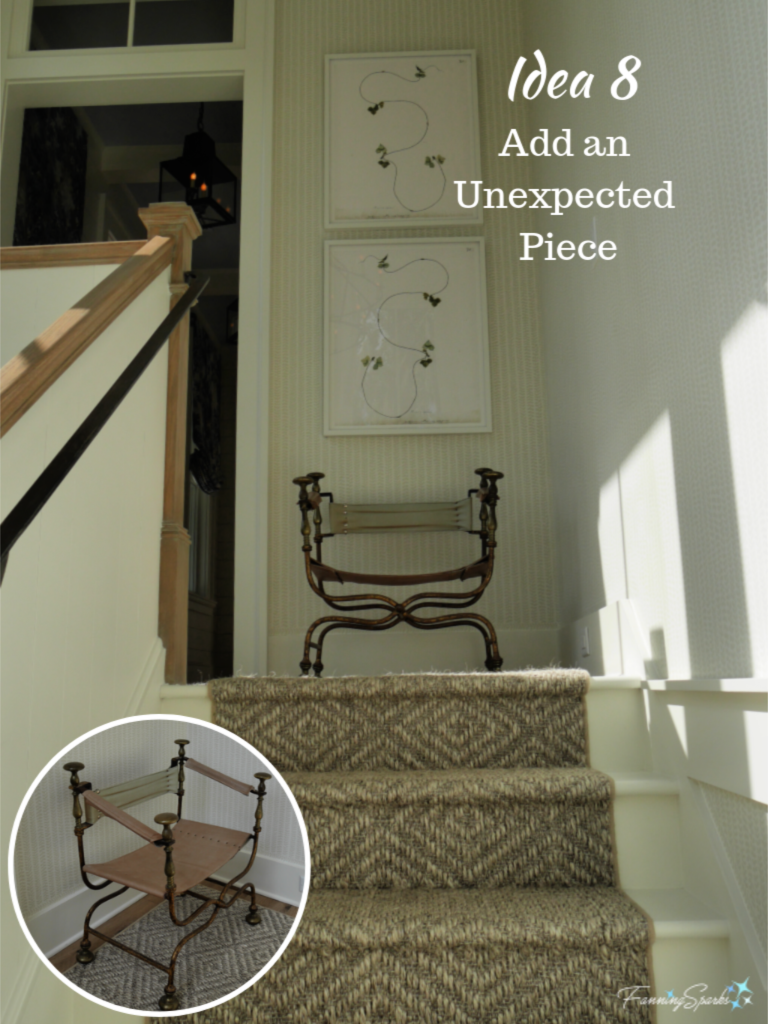
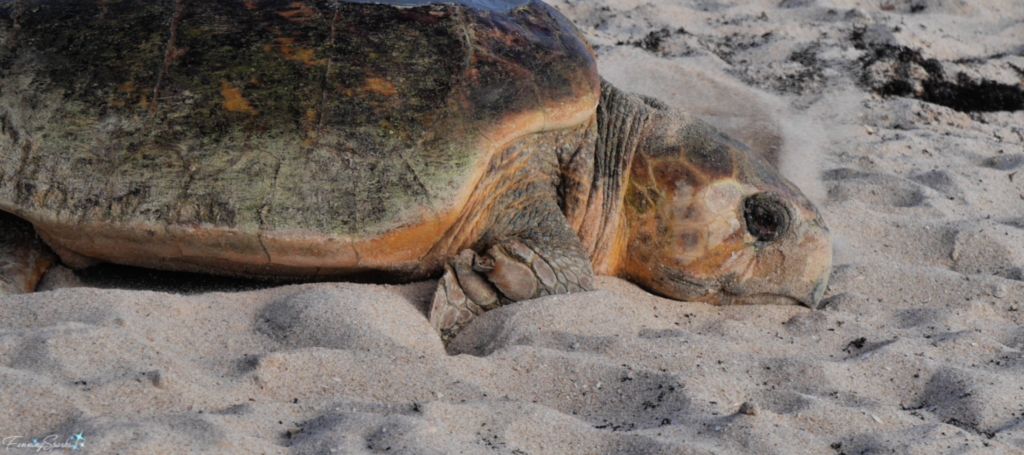
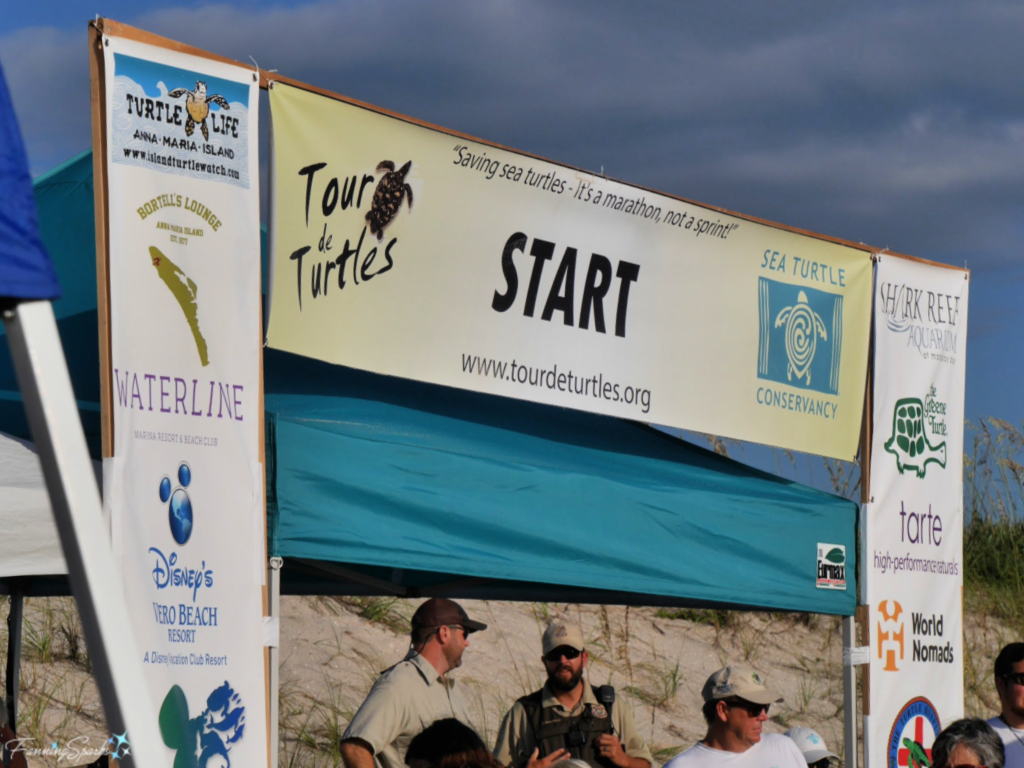
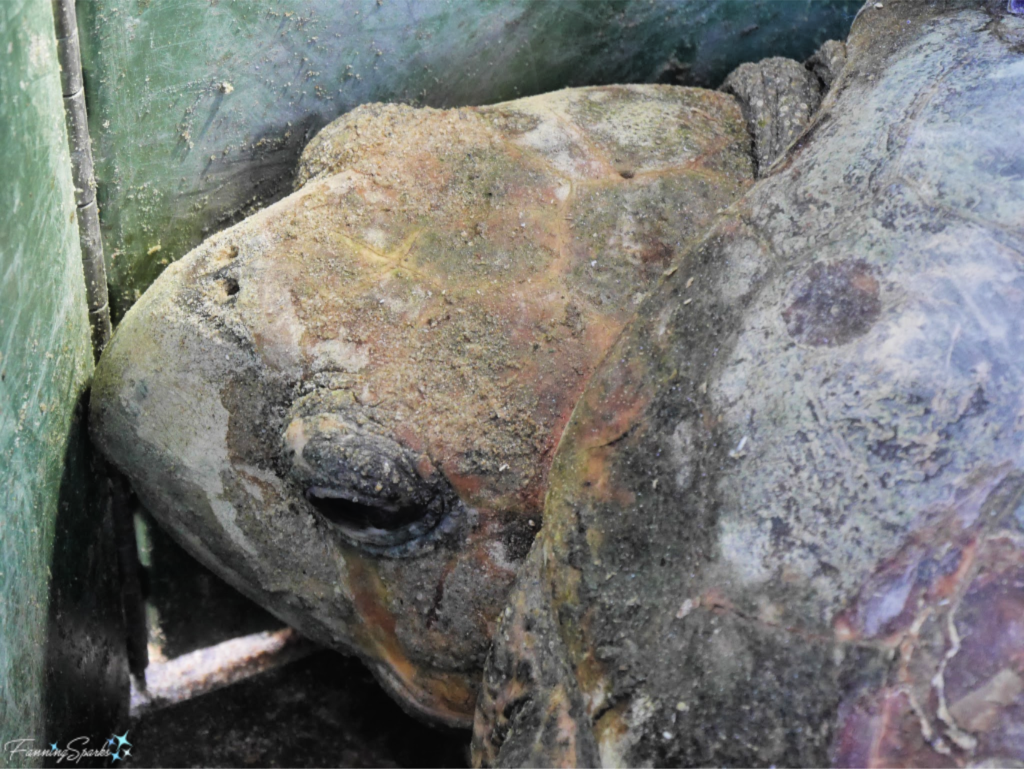
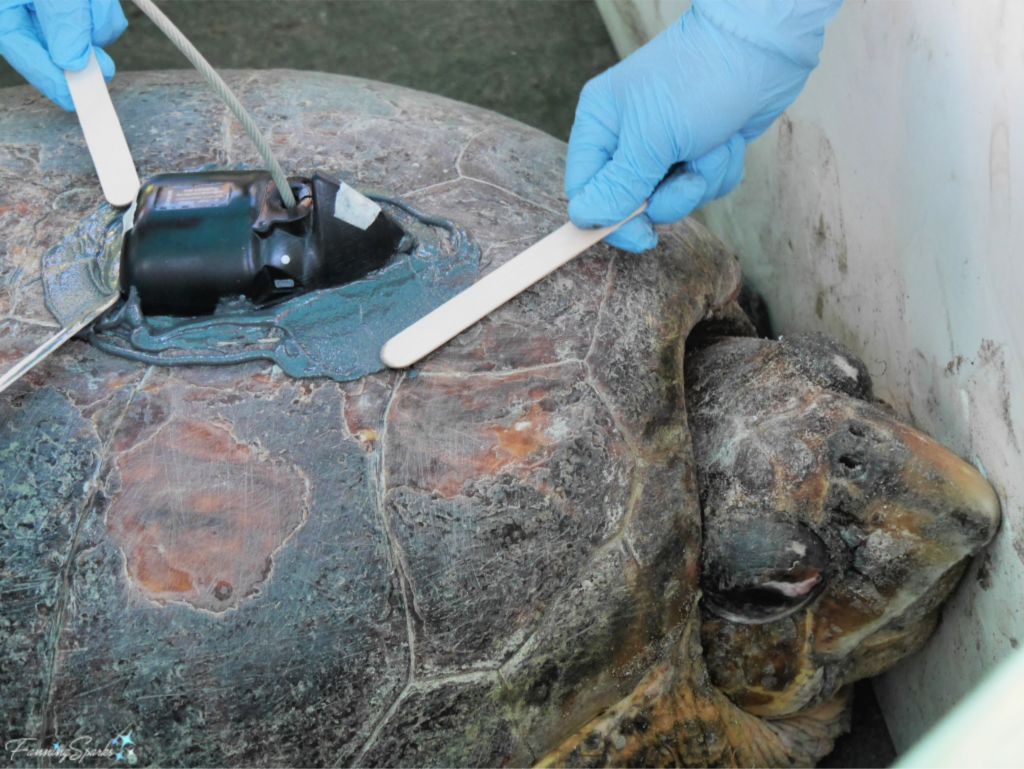
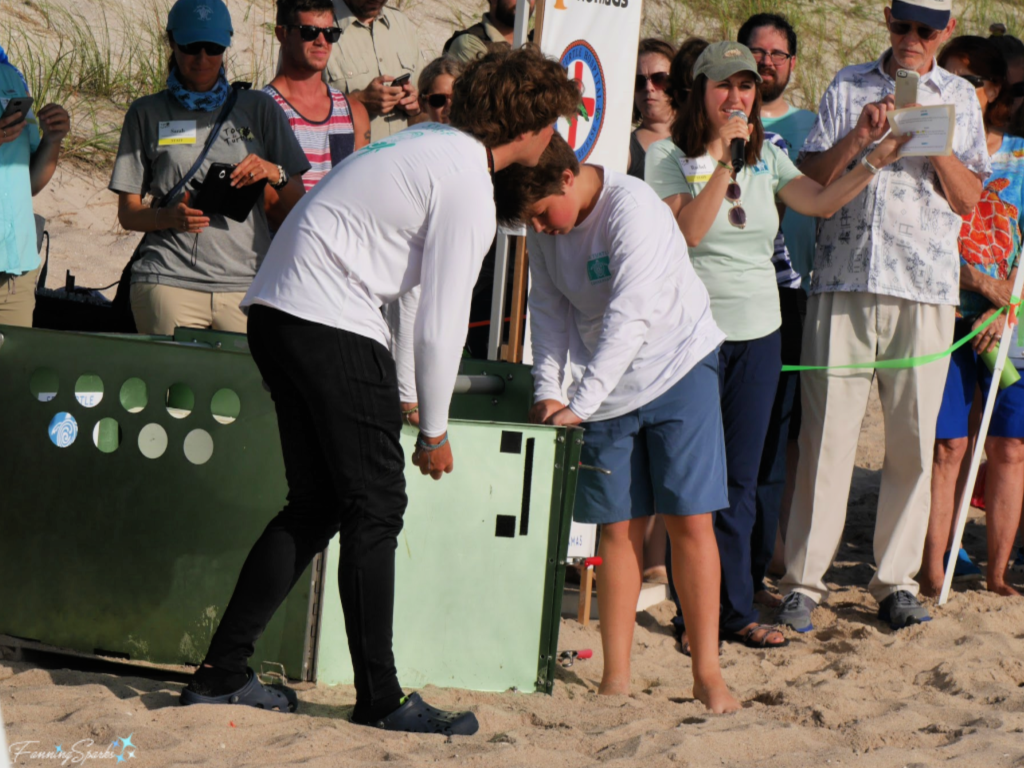




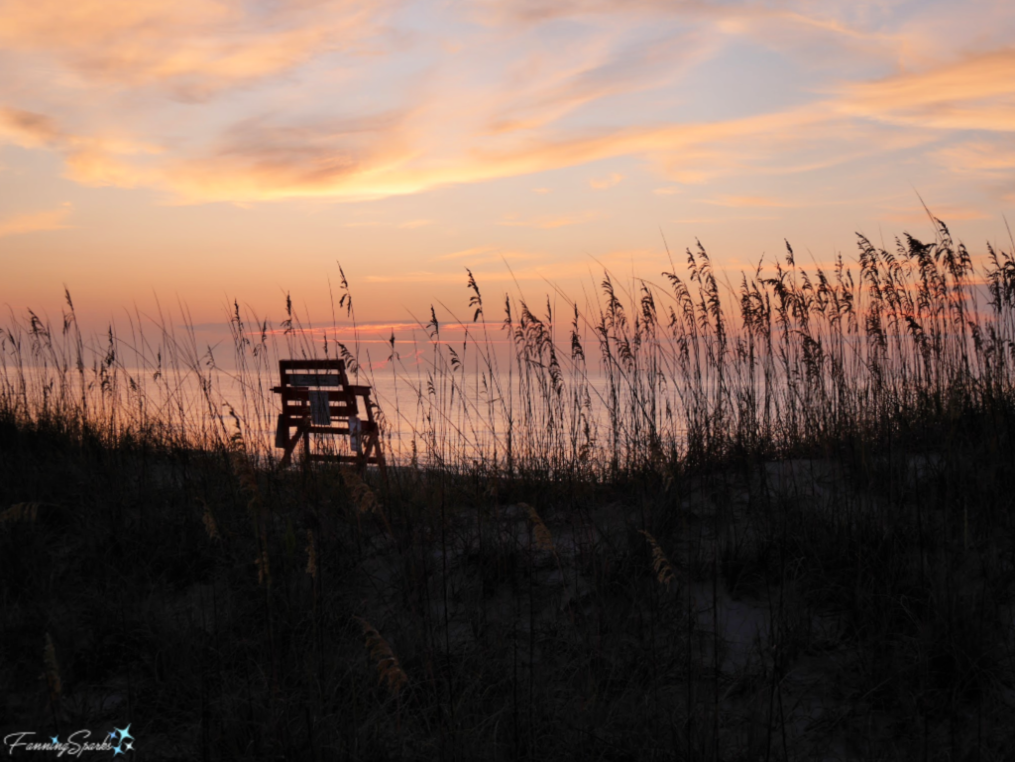
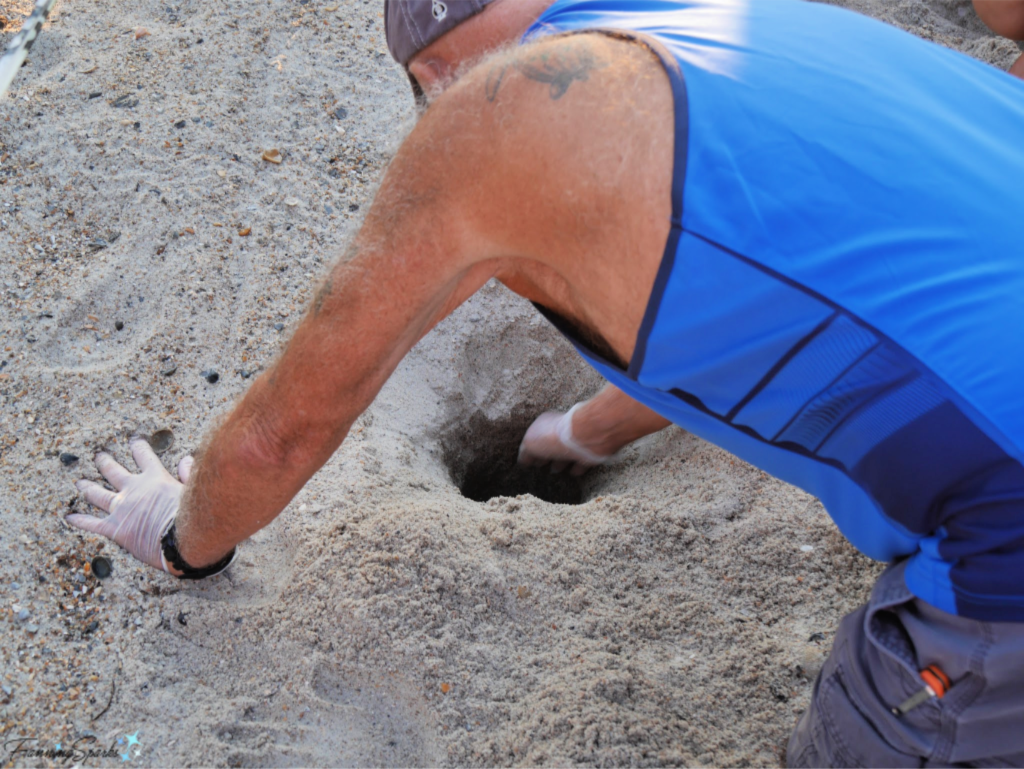
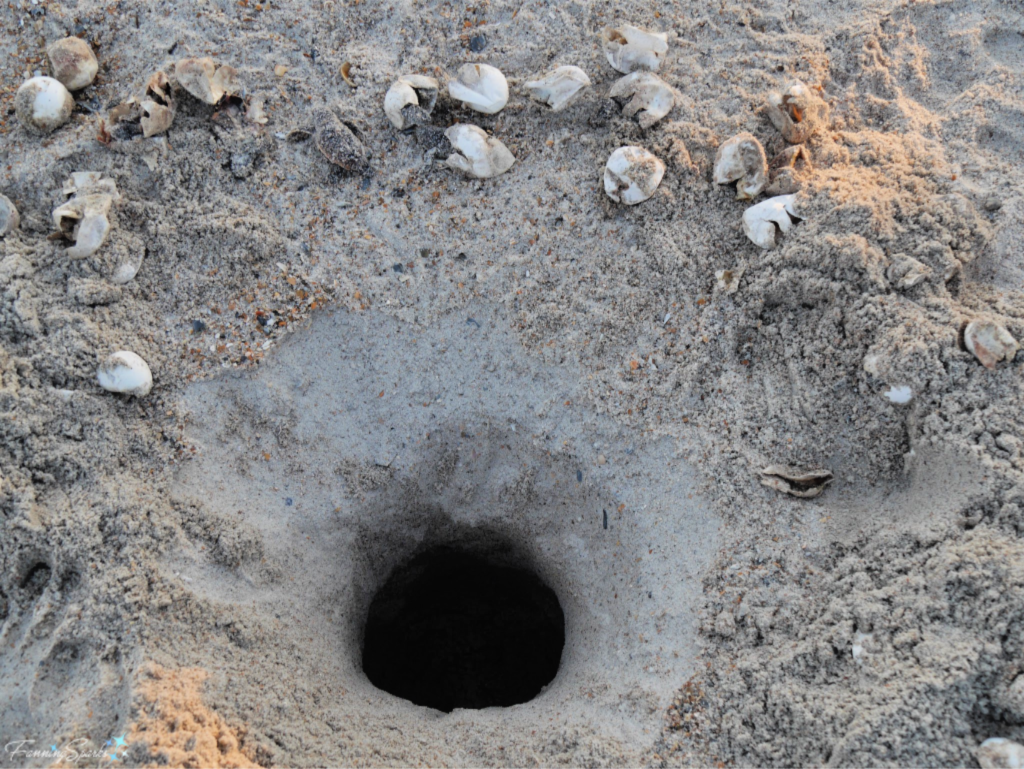
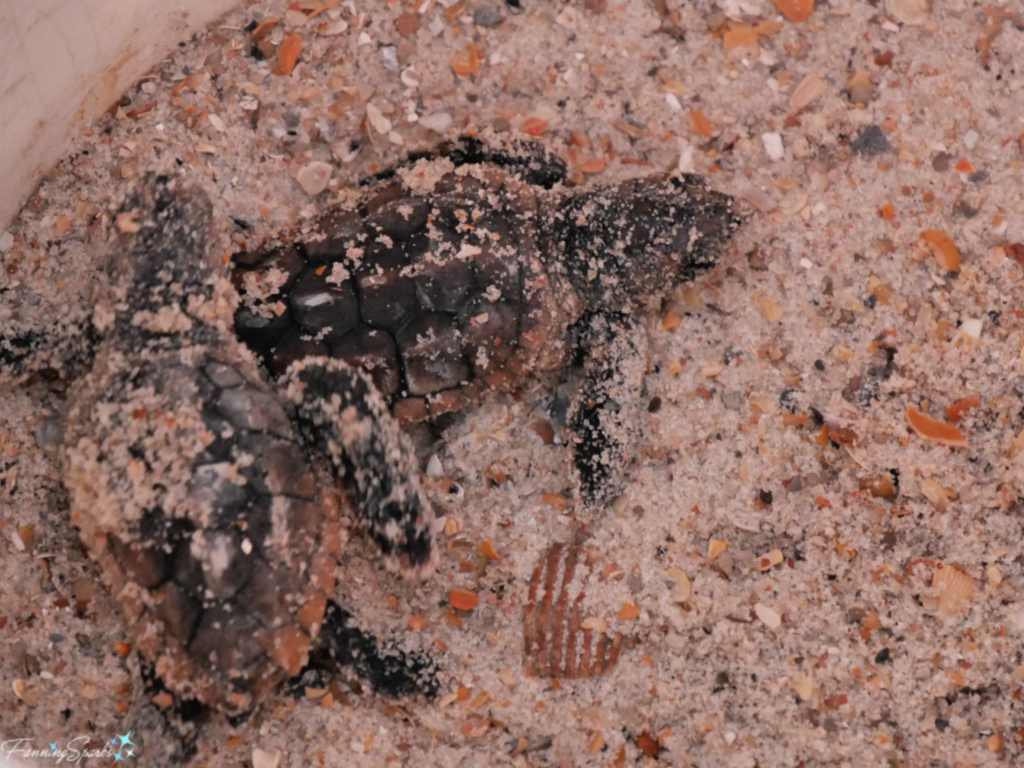
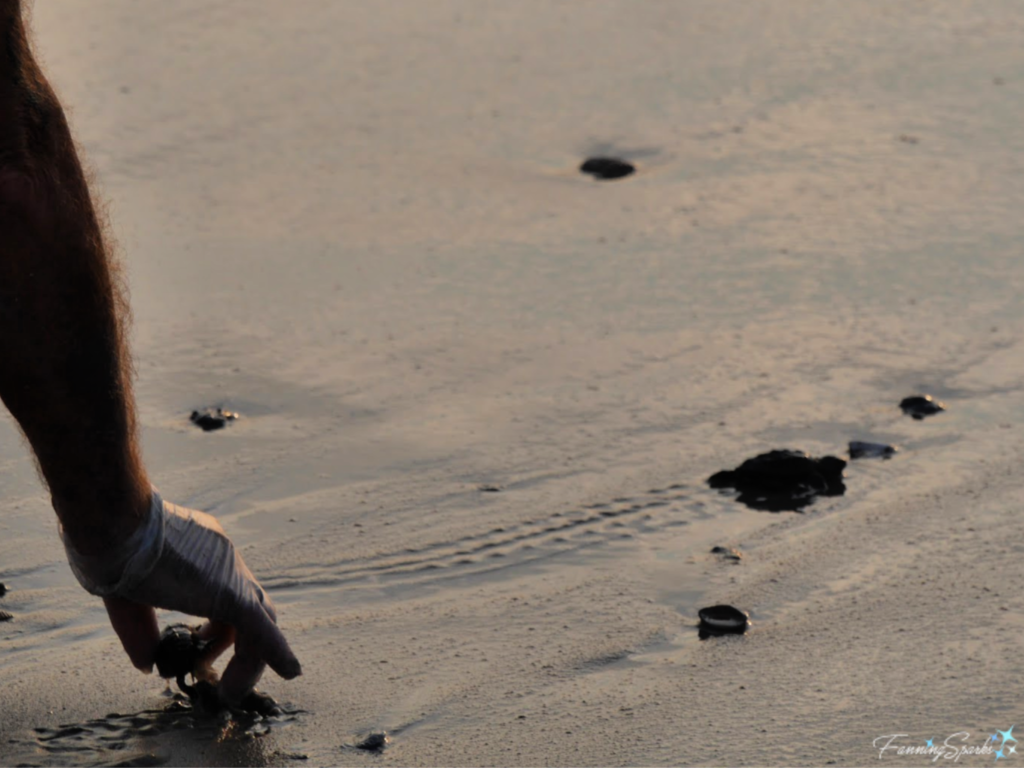
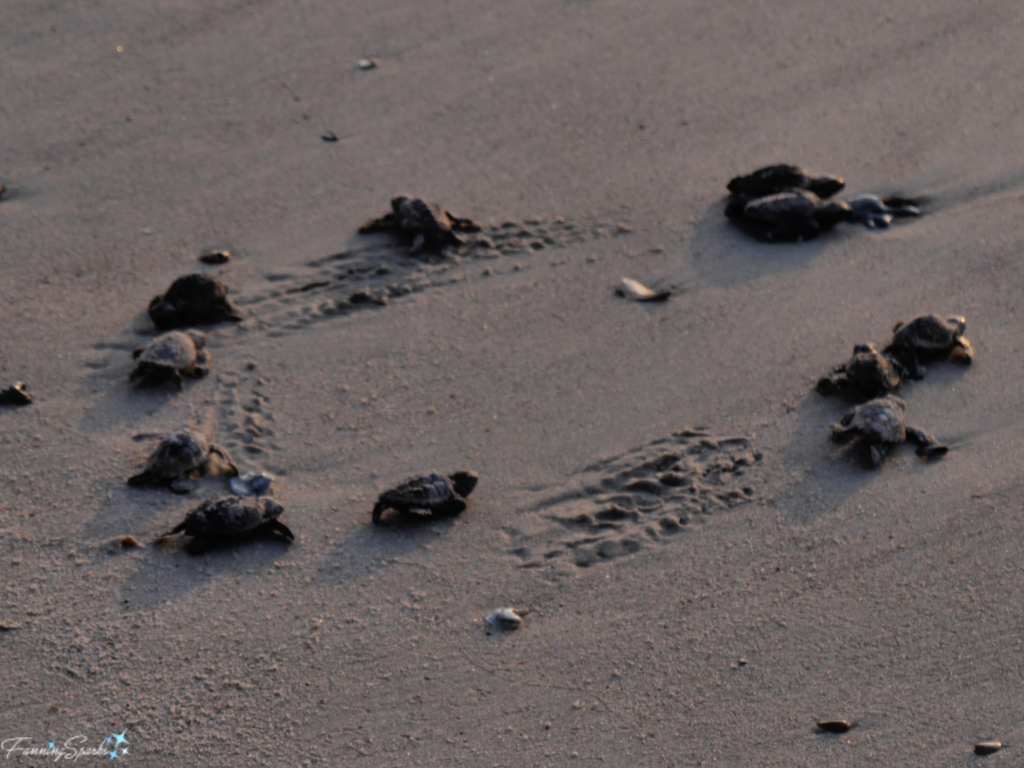
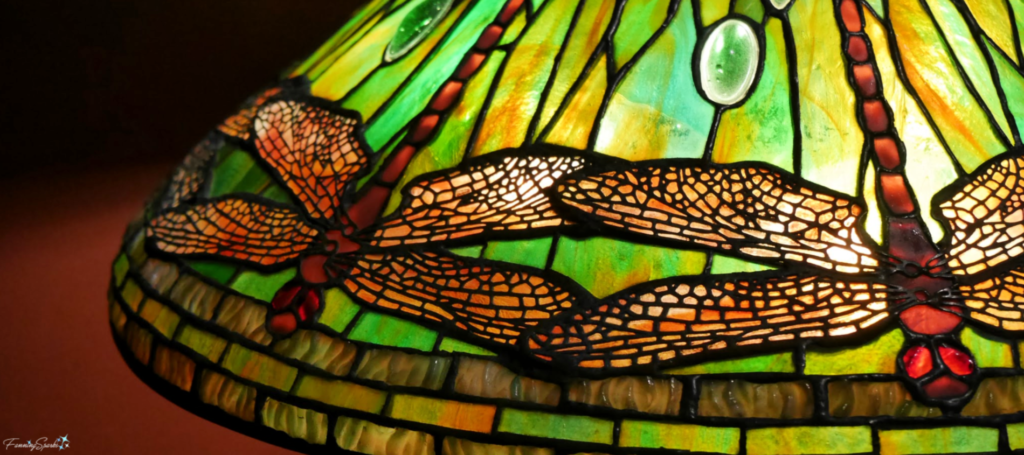
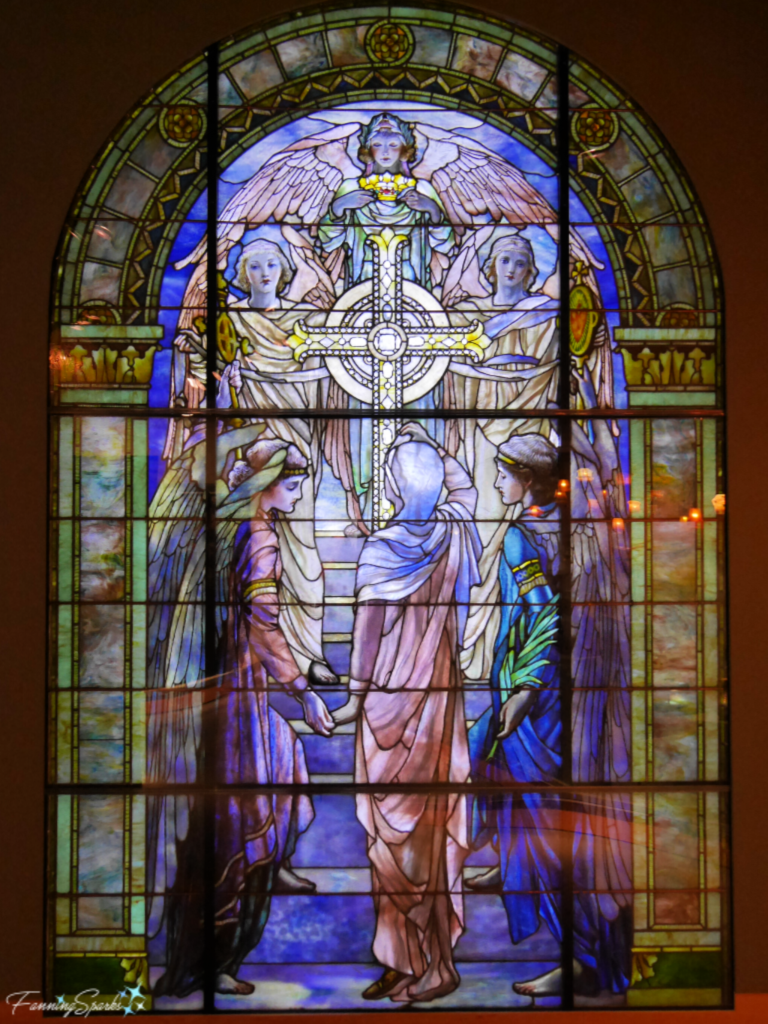
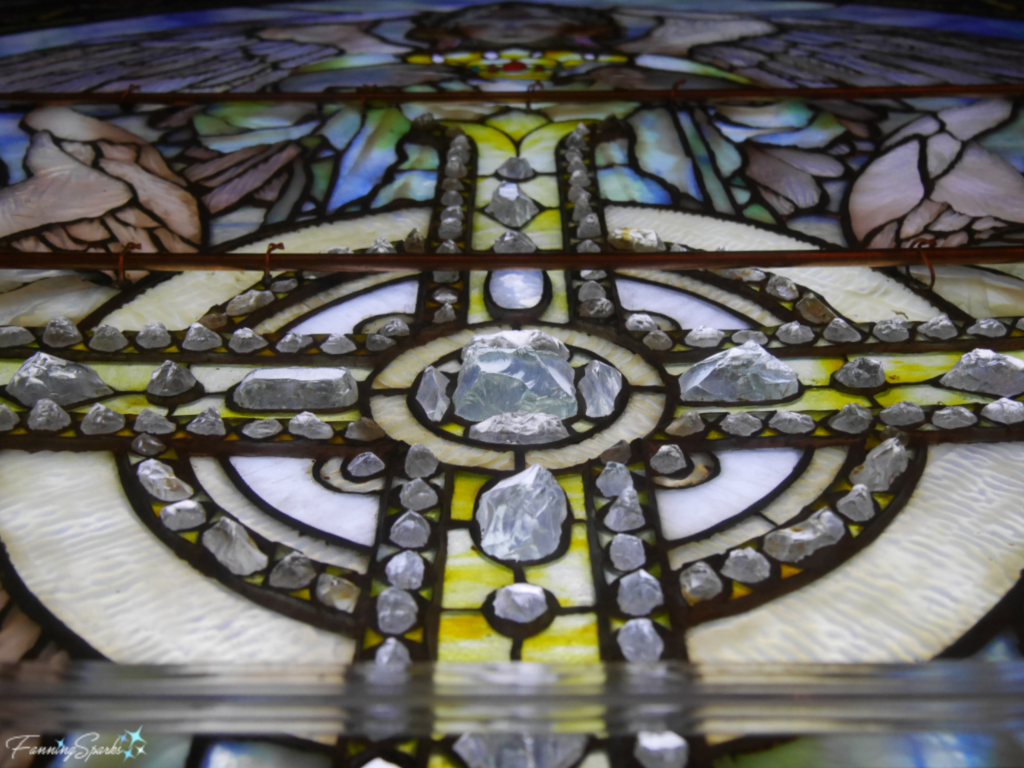
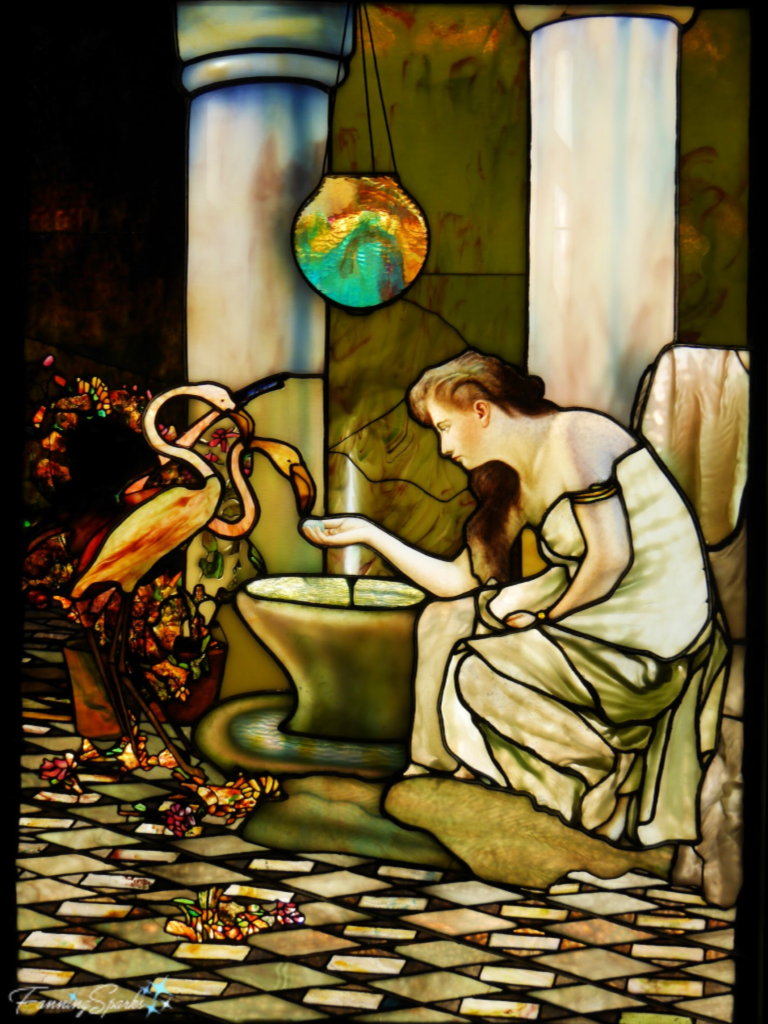 Below is an example of a Tiffany glass window made with techniques described in Clara and Mr Tiffany. The Hudson River landscape window was commissioned for a Gothic Revival Music Room at Rochroane Castle, Irvington-on-Hudson, New York. It was recognized by International Style magazine in 1905 as one of the most important residential commissions of its day. The exhibit card explains “Tiffany did not use paints or stains in the execution of the window. The rich colors, details, and illusionistic effects are produced with different types of textured glasses, and by layering pieces of colored glass – a technique called plating – on the front and back of the window.”
Below is an example of a Tiffany glass window made with techniques described in Clara and Mr Tiffany. The Hudson River landscape window was commissioned for a Gothic Revival Music Room at Rochroane Castle, Irvington-on-Hudson, New York. It was recognized by International Style magazine in 1905 as one of the most important residential commissions of its day. The exhibit card explains “Tiffany did not use paints or stains in the execution of the window. The rich colors, details, and illusionistic effects are produced with different types of textured glasses, and by layering pieces of colored glass – a technique called plating – on the front and back of the window.”